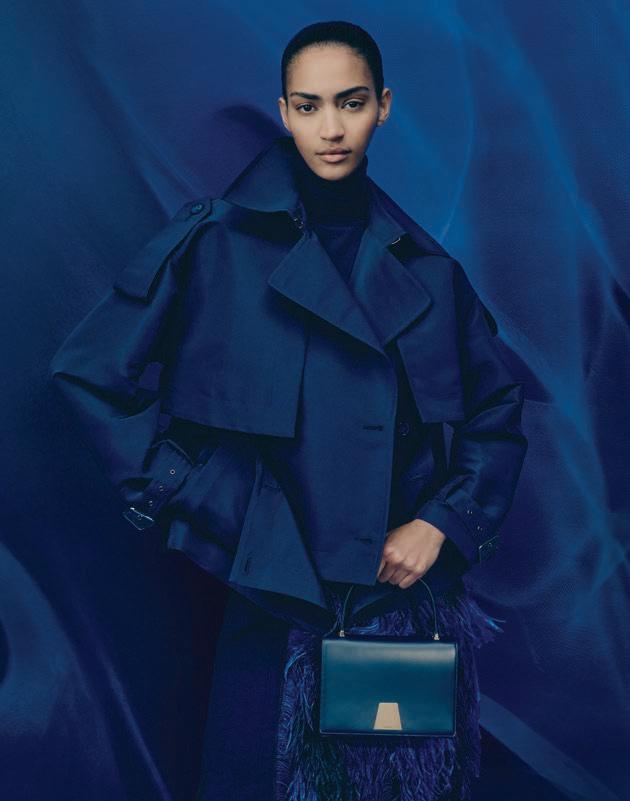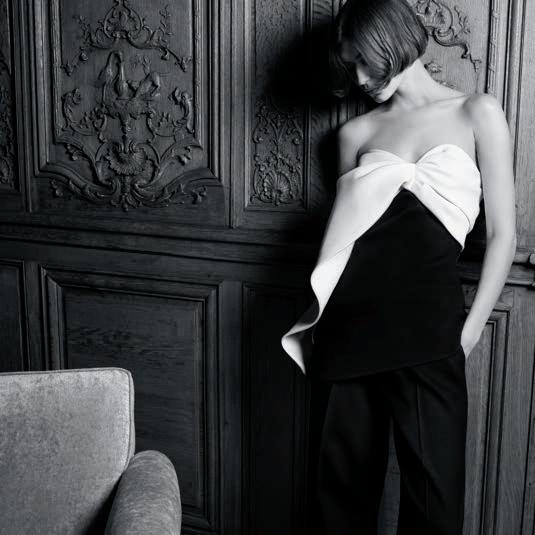





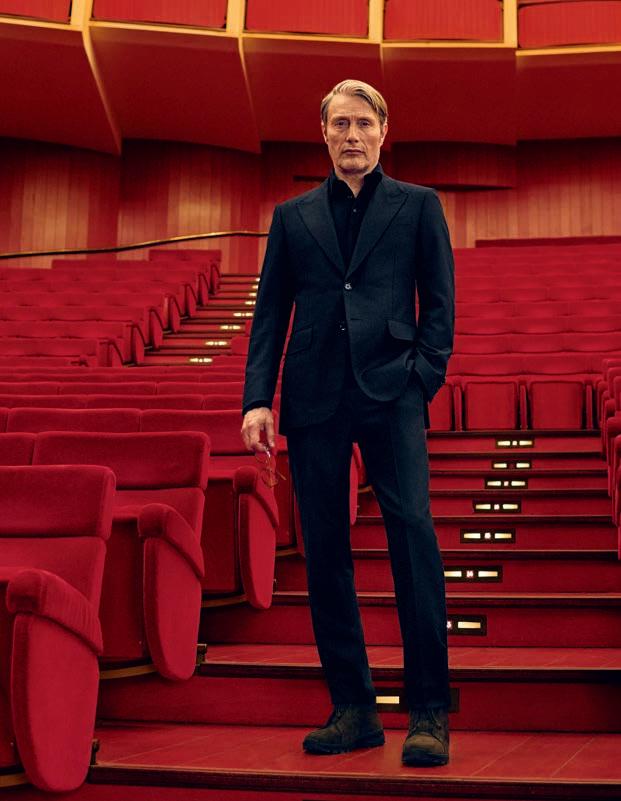
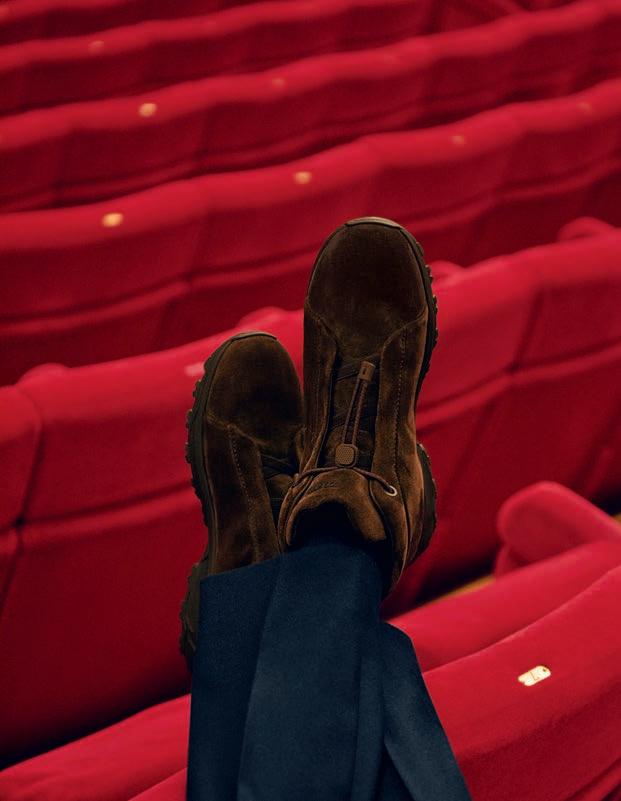


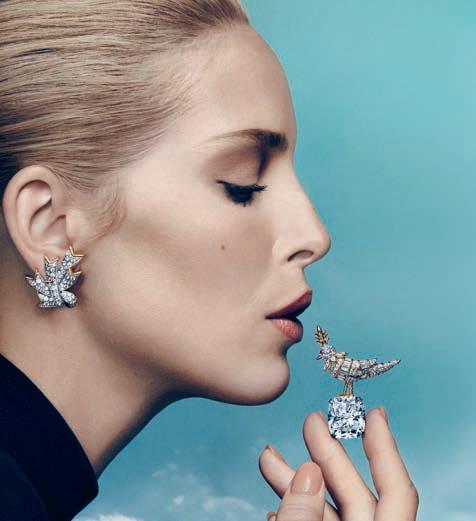


















































































































































































































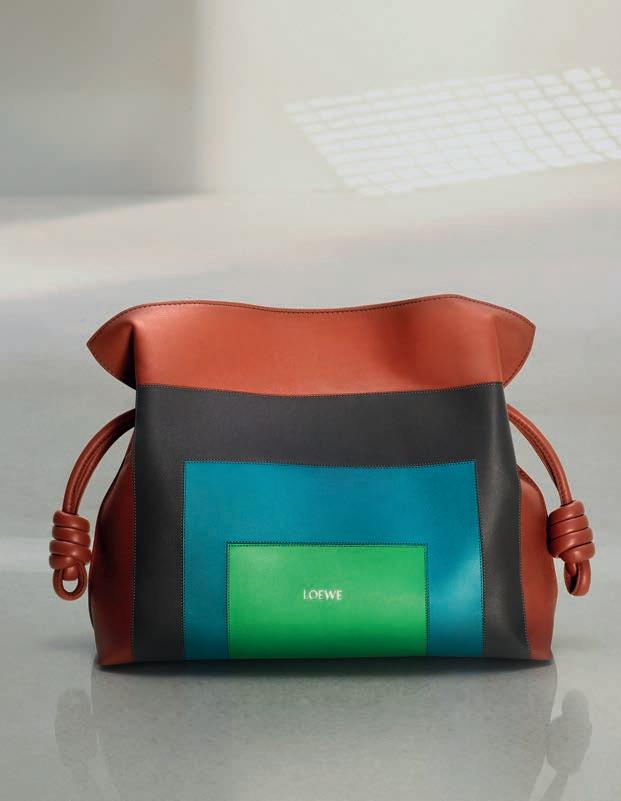





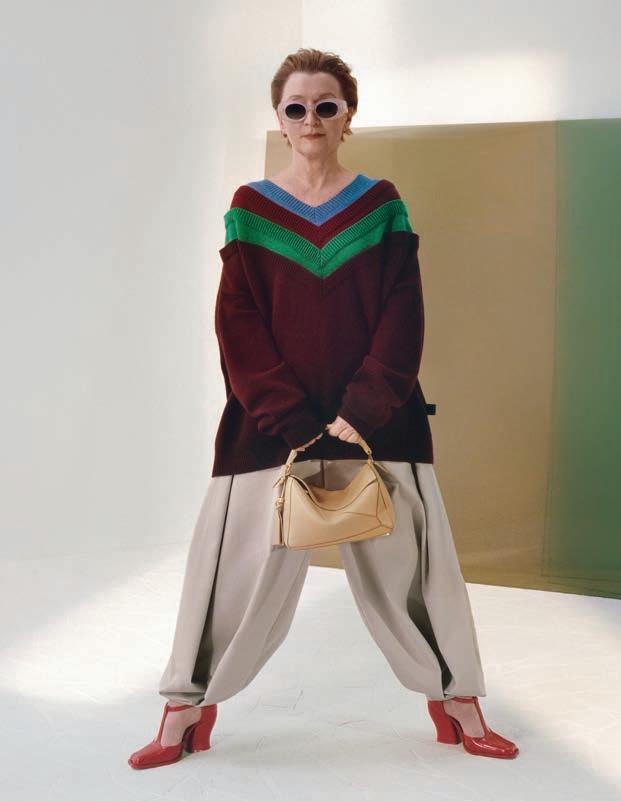



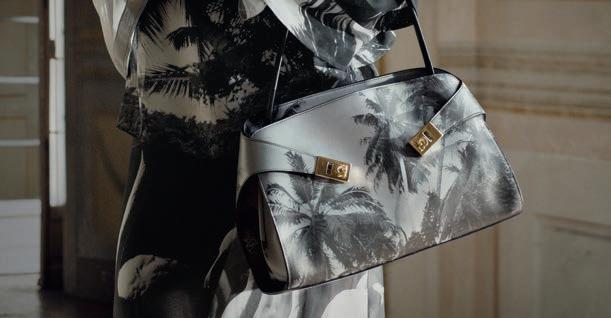
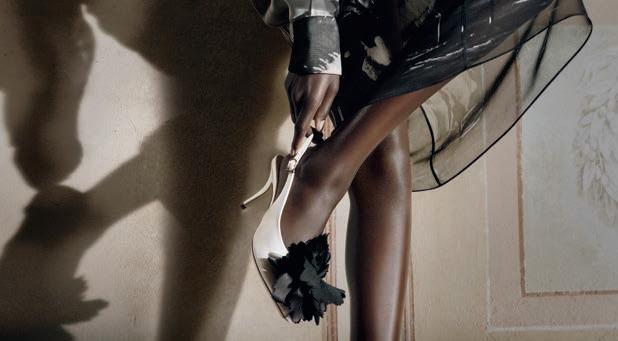
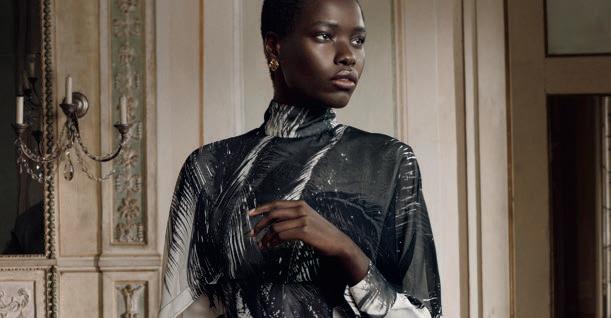
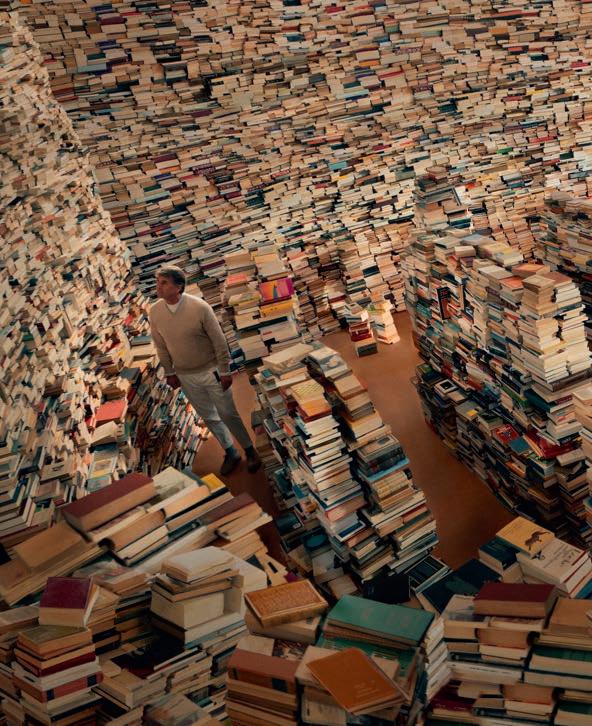



















































































































































































































































Debbie August collects to marry
By James Haldane
Where does the desire
collect one
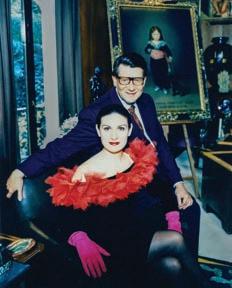
Above: A 1994 photo of Paloma Picasso seated in a circa 1920 Armand-Albert Rateau chair at the home of Yves Saint Laurent, also pictured. Right: A unique “Choupatte” sculpture by Claude Lalanne, one of many works by the artist to be offered in the auctions of collector Pauline Karpidas, photographed by Barney Hindle. Below: Al Ain Oasis in Abu Dhabi, home to over 147,000 date palms, nourished by a 3,000-yearold falaj irrigation system, photographed by Natalie Lines.
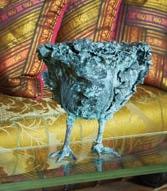
Morocco’s centuries-old dyeing techniques ignite a bold,
Fashion designer Nili Lotan makes an inspired
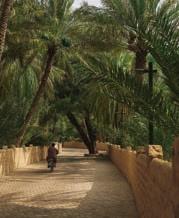
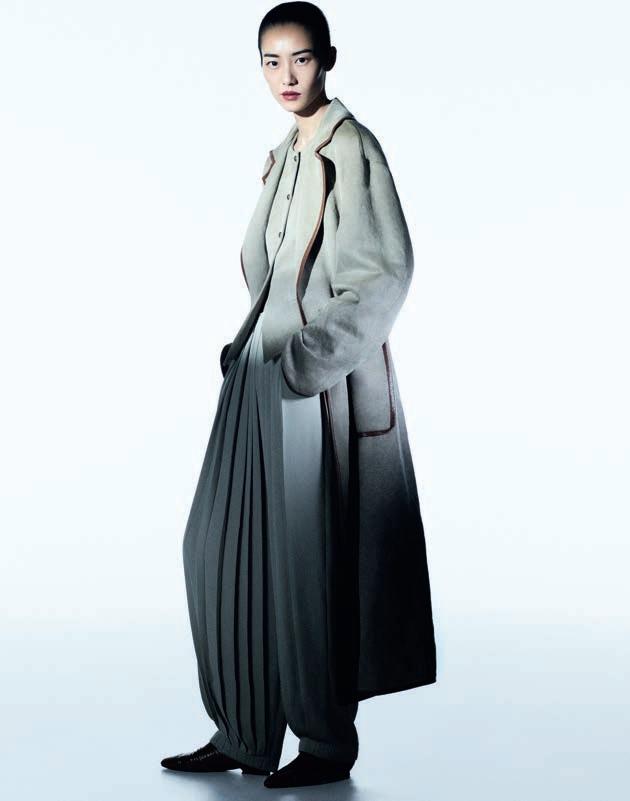
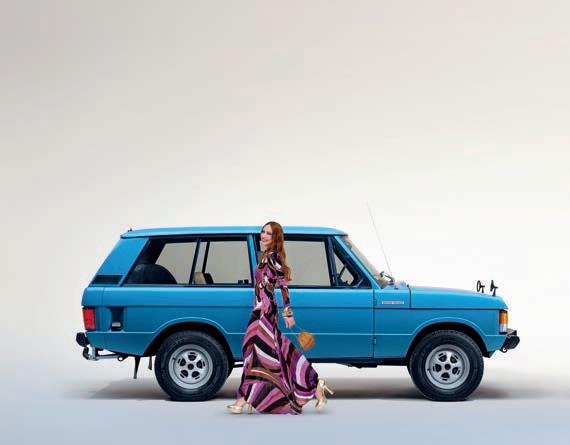


The standouts from the latest high jewelry collections exude an easy elegance.
By Frank Everett
Photography by David Abrahams
110 A PATRON IN RESIDENCE
The London apartment of Pauline Karpidas holds a singular collection of surrealist icons and 20thcentury masterworks.
By James Haldane
Photography by Barney Hindle
116 FROM SALLY MANN’S PERSPECTIVE
In an excerpt from her new book, the photographer discusses implications of censorship on her career, family and life.
By Sally Mann
120 THE PRIZE IS RIGHT
With its Craft Prize, the Loewe Foundation is bringing serious acclaim to undersung talent.
By Joshua Levine
128 ABU DHABI RISING
Past and future intersect where burning sands, hazy skies and turquoise tides set the scene for some of the world’s most ambitious architectural endeavors.
By Amanda Randone
Photography by Natalie Lines
144 HISTORY TAKES FLIGHT
Opening this December, The Zayed National Museum reimagines the concept of a national institution for the 21st century.
By Charles Shafaieh
150 THE NEW VANGUARD
Across Abu Dhabi, a wave of emerging and established artists is thinking bigger—both in scale and ambition— fueled by the city’s rapid cultural rise.
By Katy Gillett
Photography by Natalie Lines
158 ABU DHABI INTEL
What’s new in the emirate this fall.
164 EXTRAORDINARY PROPERTIES
Partner content by Sotheby’s International Realty.
176 GOING, GOING, GONE
Breuer’s tubular triumphs.
By James Haldane
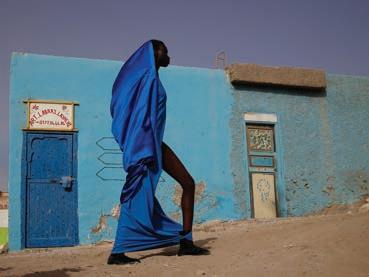

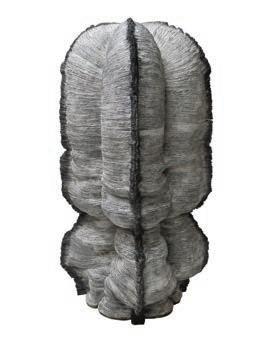
Clockwise from top: Model Anyiang wears a Balenciaga dress, stylist’s own hood and Fforme shoes, photographed by Viviane Sassen in Morocco; fabric designed by Anni Albers around 1949 for the Harvard Graduate Center, now in the collection of the Josef & Anni Albers Foundation in Bethany, Connecticut, photographed by Henry Leutwyler; fashion designer Nili Lotan’s Marcel Breuer-designed home in Croton-on-Hudson, New York, photographed by Adrian Gaut; “Realm of Living Things 19,” a work in terracotta by the 2025 Loewe Foundation Craft Prize winner Kunimasa Aoki.
on the cover
The Breuer on New York’s Madison Avenue, photographed on June 9, 2025, by Stefan Ruiz for Sotheby’s Magazine. follow @sothebys on all platforms


Step into an all-inclusive ultra luxury experience that is Unrivaled at Sea™. Explore more than 550 destinations around the world while enjoying the unrivaled space, elegance, and comfort of The World’s Most Luxurious Fleet® We’ll tend to every detail of your journey from start to finish, so you can be pampered by the warm, Heartfelt Hospitality™ delivered by our incredible crew who not only care for you, but about you.
Nobody Does It Better than Regent Seven Seas Cruises®
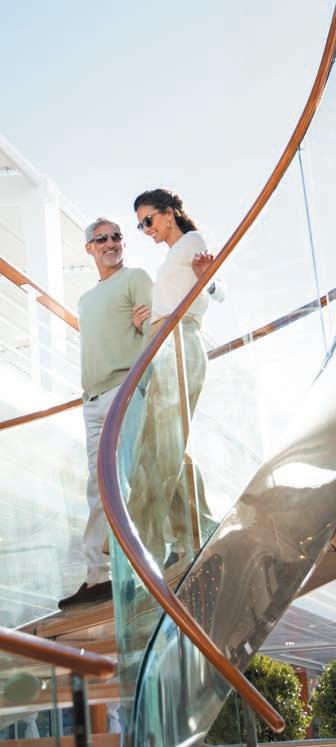

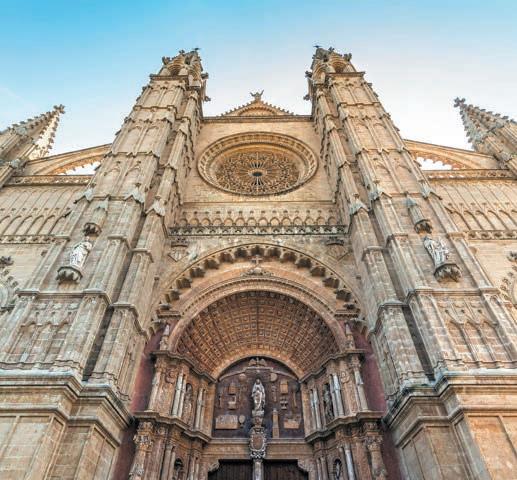
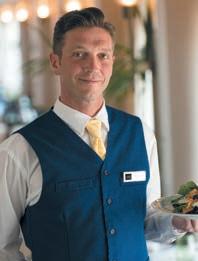
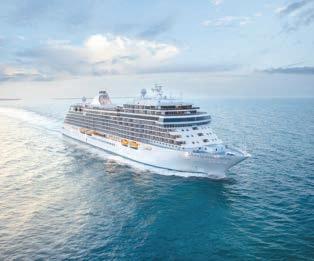
This fall is marked by doors opening anew—from our relocated New York HQ, housed in an architectural icon, to the storied interiors of an exceptional patron’s London home and the rising cultural landscape of Abu Dhabi.
“What should a museum look like, a museum in Manhattan?” With this question, Marcel Breuer opened his 1963 presentationtothetrusteesoftheWhitney Museum.Ingrapplingwiththeanswer,the Hungarian-born architect envisioned what would become the granite-clad, inverse ziggurat at 945 Madison Avenue—a bold brutalist icon conceived as a deeply considered public space that has since offered visitors the opportunity to encounter not only the Whitney’s holdings but also, over the decades, substantial parts of the Met’s and Frick’s collections.
In our cover story, architectural historian Barry Bergdoll explores both Breuer the man and Breuer the building, soon to begin a new chapter as Sotheby’s New York headquarters. Complemented by behind-the-scenes photography by Stefan Ruiz, shot in June to document the restoration in progress, the story offers a first lookattheworkbeingdonetopreservethe building for future generations ahead of its public unveiling this November, when it will reopen as a cultural hub for all.
Breuer’s legacy resonates throughout the issue—from a visit to fashion designer Nili Lotan’s home, designed by the architect to overlook the Hudson River, to a deep dive with Nicholas Fox Weber, director of the Albers Foundation, into the creative practices and tools of Anni andJosefAlbers,whobothworkedalongside Breuer at the Bauhaus, contributing significantly to the school’s innovative design education and artistic legacy. And onourbackpage,wecelebrateearlyprototypes of his groundbreaking tubular-steel furniture, tracing their near-century-long influence on generations of designers.
Stepping into another hallowed art space,weentertheLondonhomeofPauline
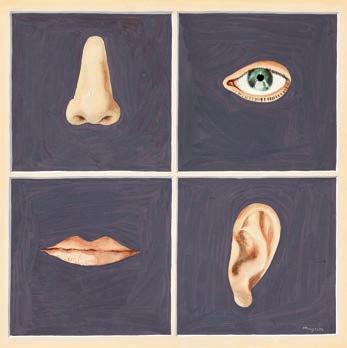
Karpidas, the patron best known for nurturing fresh artistic talent through her annual exhibitions and gatherings on the Greek island of Hydra. The apartment was a more intimate space, animated by contemporary design from the likes of Les Lalanne and Mattia Bonetti, where she gathered the great works that had instructed her eye—an exceptional collection of surrealist masterpieces. The dreamlike abode will be recreated in our London galleries from September 8, ahead of a landmark series of single-owner auctions. This extraordinary early René Magritte (above) is one of the collection’s highlights and its palette runs through our four editorial acts.
Four because we have added a bonus section in recognition of the swell of cultural happenings coming to Abu Dhabi this season, ahead of Sotheby’s inaugural auctions in the emirate. Features include a travel portfolio charting its historic
sites and modern marvels, a group profile of four flourishing artists operating in the capital and a preview of the Norman Foster-designed Zayed National Museum openingthisDecember.AsManuelRabaté, director of Louvre Abu Dhabi, puts it, “Abu Dhabi is building not just museums but a whole cultural constellation that nurtures and inspires.”
Elsewhere, we excerpt photographer Sally Mann’s new book, “Art Work: On the Creative Life,” pay a fashion-infused visit to Morocco with visual artist Viviane Sassen and stylist Alexandra Carl, and learn how the Loewe Foundation Craft Prize is elevating craftsmanship for today. Read on and step through the threshold.
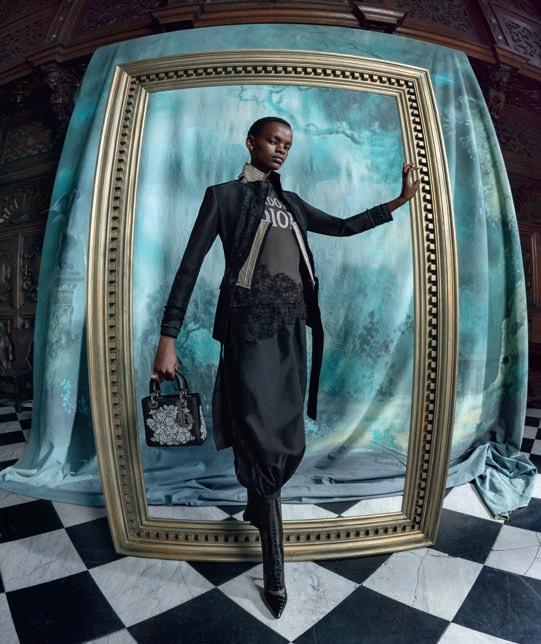
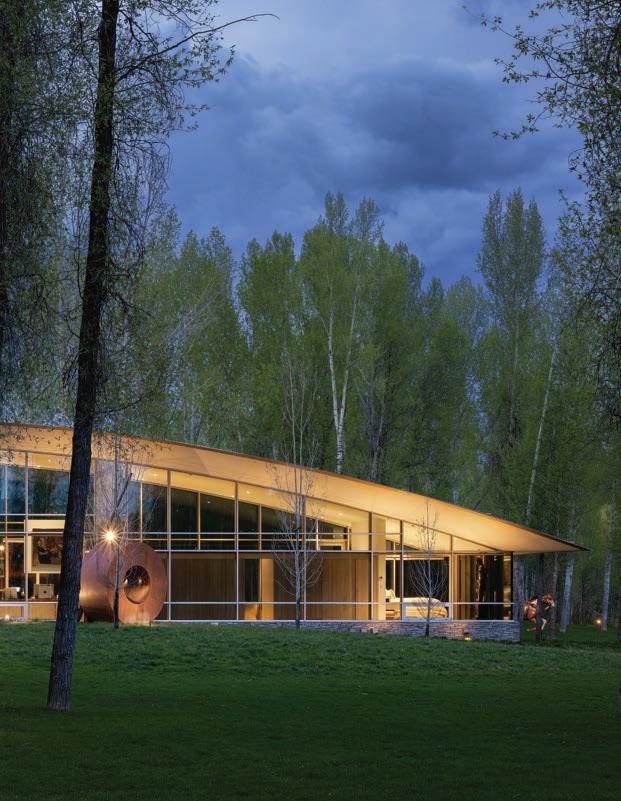
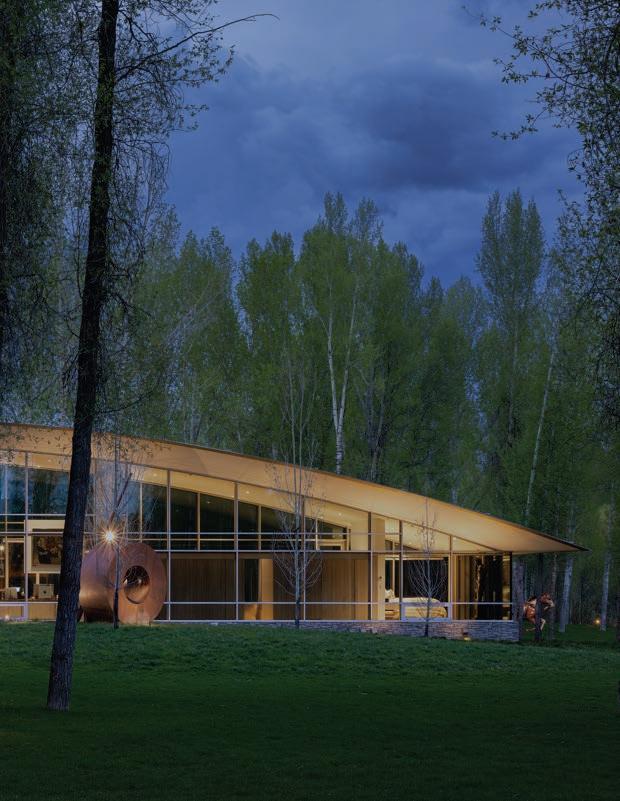
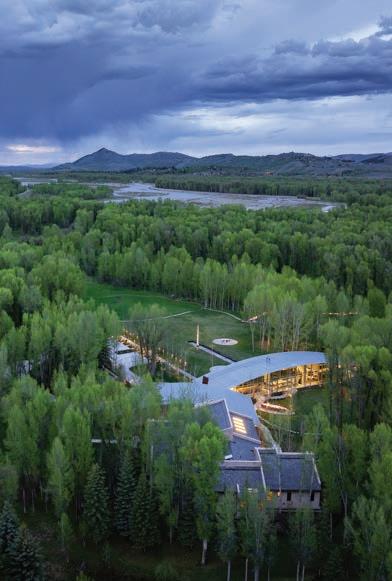

Stefan Ruiz Photographer
Stefan Ruiz is a New York-based photographer who has contributed to The New York Times, Time and Vogue. His work was recently featured at the Museo de Arte Contemporáneo de Monterrey. Ruiz taught art at San Quentin State Prison and served as creative director for Colors Magazine. He has published three monographs and is at work on a fourth.
The Brilliance of Breuer, p86.
Editor in Chief – Kristina O’Neill
Creative Director – Magnus Berger
Editorial Director – Julie Coe
Director of Editorial Operations –Rachel Bres Mahar
Executive Editor – James Haldane
Visuals Director – Jennifer Pastore
Design Director – Henrik Zachrisson
Entertainment Director –Andrea Oliveri for Special Projects
Editorial Assistant – Joshua Joseph
CONTRIBUTING EDITORS
Akari Endo-Gaut, Frank Everett, Cary Leitzes, Sarah Medford, Lucas Oliver Mill, Amanda Randone
CULTURESHOCK
Chief Executive Officer – Phil Allison
Chief Operating Officer – Patrick Kelly
Head of Creative – Tess Savina
Production Editors – Rachel Potts, Antonia Wilson, Emma Nicklin
Art Editor – Gabriela Matuszyk
Designers – Ieva Misiukonytė, George Hatton, Michael Kelly
Subeditors – Emily Hawkes, Bobby McGee, Ceri Thomas
PARTNERSHIPS
Head of Global Partnerships –Eleonore Dethier
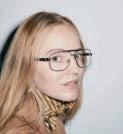
Alexandra Carl Stylist
Alexandra Carl is a fashion stylist and creative consultant based in London. Her aesthetic celebrates androgyny, utilitarianism and irreverence, while maintaining a focus on feminine power. Carl is the author of “Collecting Fashion,” which features notable 21st-century fashion archives, highlighting the wardrobes of leading design and fashion talents. The Artist Portfolio, p68.
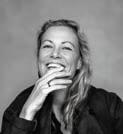
Viviane
Based in Amsterdam, Viviane Sassen combines photography, fashion and fine art. She has published more than 25 books and her work has been shown at the MoMA and the Rijksmuseum, among other venues. Sassen’s most recent exhibition, “This Body Made of Stardust,” was on view at Collezione Maramotti in Reggio Emilia, Italy, this summer.
The Artist Portfolio, p68.

Barry Bergdoll Writer
Barry Bergdoll is the Meyer Schapiro professor of art history at Columbia University and former chief curator of architecture and design at MoMA. An author and curator, he has published widely on modern architecture, including works on the Bauhaus and Marcel Breuer. He is the co-editor of “Marcel Breuer: Building Global Institutions” (2018).
The Brilliance of Breuer, p86.
PUBLISHING
US (New York and Northeast) Fashion – Judi Sanders LGR Media Plus judi@lgrplus.com
US (New York and Northeast) Jewelry & Watches – Lisa Fields lisa.fields.consultant@sothebys.com
US (New York and Northeast) Design – Angela Okenica aokenica@gmail.com
US (Southeast and West Coast) Mark Cooper TL Cooper Media markcooper@tlcoopermedia.com
US Galleries and Museums – Ian Scott ECM Consulting ian.scott.consultant@sothebys.com
UK and France
Charlotte Regan
Cultureshock charlotte@cultureshockmedia.co.uk
Italy
Bernard Kedzierski and Paolo Cassano
K. Media bernard.kedzierski@kmedianet.com paolo.cassano@kmedianet.com
Switzerland Neil Sartori Media Interlink neil.sartori@mediainterlink.com
France
Guglielmo Bava Kapture Media gpb@kapture-media.com
India and GCC Region Marzban Patel Mediascope marzban.patel@mediascope.co.in
SOTHEBY’S
Chief Executive Officer – Charles F. Stewart
Chief Marketing Officer – Gareth Jones
Chief Public Relations Officer – Karina Sokolovsky
Global Head of Brand – Jacqueline King
Global Head of Content and Campaigns – Nick Marino
Global Head of Growth – Tracy Heller
Global Head of Social Media and Editorial – Anne Johnson
Global Head of Video Production – Rachel Roderman
Head of Events and Preferred, Americas – Richard Drake
Head of Events, UK – Lydia Soundy
Head of Procurement – Eduardo Guerra
Production Manager – Stephen J. Stanger
GENERAL INQUIRIES sothebysmagazine@sothebys.com
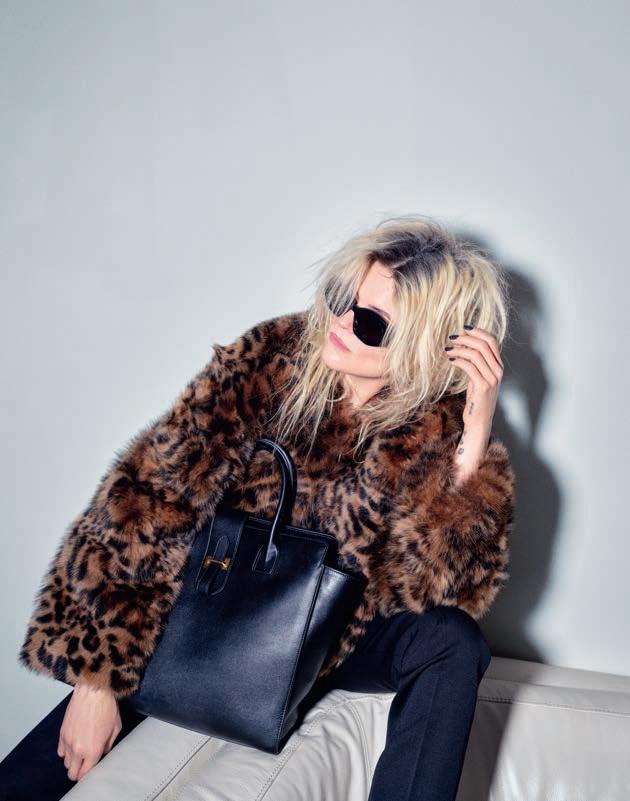

LONDON
SEPTEMBER 17-18
Masterworks of surrealist art and modern design from the collection of a legendary patron and aesthete.
René Magritte, “La Statue Volante,” 1958. £9,000,000-£12,000,000, “Pauline Karpidas: The London Collection Evening Auction.”
NEW YORK SEPTEMBER 26
HERSHEY OCTOBER 8-9
The official auction of the Eastern Division AACA National Fall Meet, which celebrates its 70th anniversary this year.
1934 Auburn 1250 Salon Phaeton Sedan. $250,000-$300,000, “RM Sotheby’s Hershey.”
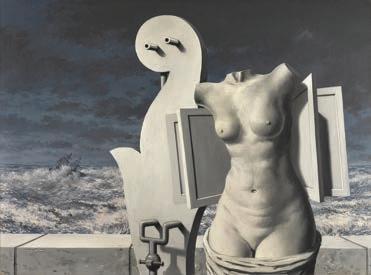
An exceptional array of works from postwar masters to today’s cutting-edge artists.
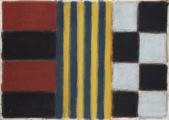
Sean Scully, “Place 4.8.95,” 1995. $150,000-$200,000, “Contemporary Curated.”
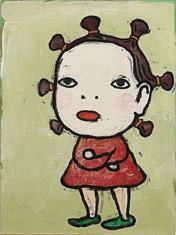
HONG KONG SEPTEMBER 27-28
Modern and contemporary works from Asian and global masters.
Yoshitomo Nara, “Strange Girl,” 1991. HK$2,500,000-HK$3,500,000, “Modern and Contemporary Day Auction.”
NEW YORK
SEPTEMBER 17
Presenting great masterpieces of Chinese art spanning more than 5,000 years of history.
LONDON SEPTEMBER 30
HONG KONG AUGUST 29 - OCTOBER 21
Showcasing high jewelry, watches, extraordinary handbags, wine and spirits.
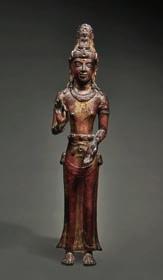
A rare and important gilt-lacquered bronze figure of
A rare and important gilt-lacquered bronze figure of Acuoye Guanyin, Dali Kingdom, 11th-12th century. $500,000-$1,000,000, “Chinese Art.”
PARIS SEPTEMBER 15 - OCTOBER 10
Offering a magnificent selection of jewelry, watches, handbags, wine and spirits.







Cartier “Panthère” diamond, emerald, onyx and sapphire bangle. €200,000-€300,000, “Fine Jewelry.”
The finest examples from the region’s established and emerging artists, spanning a variety of mediums.

Sayed Haider Raza, “Shanti La Paix,” circa 2000. £300,000-£500,000, “Modern & Contemporary South Asian Art.”
NEW YORK SEPTEMBER 15-29
Celebrating the rich history and cultural significance of sports through exceptional artifacts.

Wilt Chamberlain Los Angeles Lakers 1969 NBA Finals GameWorn Jersey. $1,500,000$2,000,000, “September Sports Sale.”
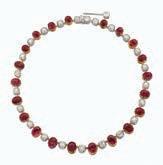
Burmese unheated ruby and diamond necklace. HK$5,500,000-HK$8,000,000, “High Jewelry.”
EDINBURGH OCTOBER 10
The world’s most distinguished ultra-rare whisky auction, with proceeds benefiting The Distillers’ Charity and The Youth Action Fund.
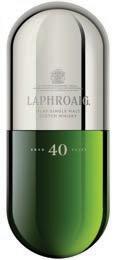
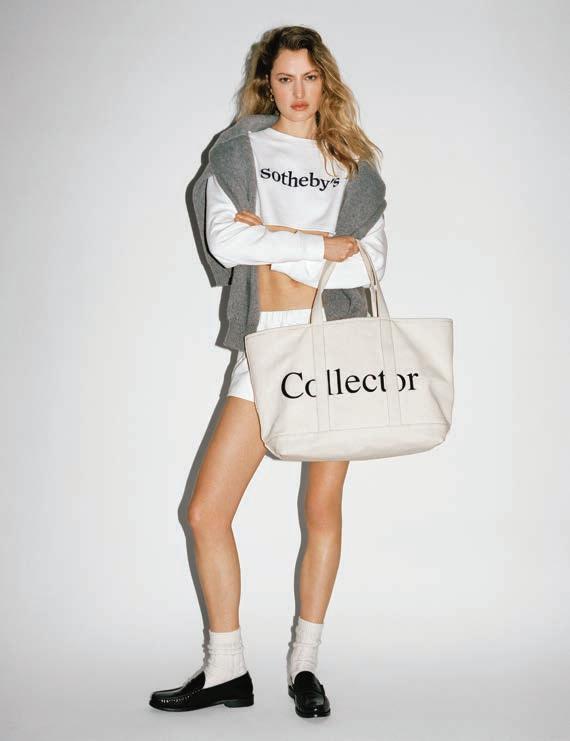


A dial known only to the wearer lies hidden beneath the links of this Van Cleef & Arpels bracelet.
Like the Looping braceLet it adorns, this jeweled timepiece traces interlinked chapters in the history of Van Cleef & Arpels. Its name originates with the “Ludo” bracelet, a design introduced in 1934bycompanycofounderLouis“Ludo” Arpels. Arpels envisioned an innovative new form, with links shaped in either a brick-like pattern, as seen here, or a honeycomb-style mesh. In both versions, the joints are expertly hidden, creating a sinuous, ribbon-like effect that wraps the wrist with elegant ease.
Soon after, the motif was transferred to the house’s timepieces and into the heightened language of fashion-
influencedlateartdecostyle.Thebracelet is punctuated by a buckle motif befitting a couture belt and, instead of foregrounding the rectilinear shapes of the 1920s, the case is defined by two diamond-set circles—balancing strength and softness in a single form. It is only by pinching together the two circles that the wearer reveals the hidden face.
Before the 1920s, watches were not worn on the wrist, instead taking the form of either pocket watches, or more commonly for women, lapel watches. Thus, it was a period of transformation, and a creative challenge approached in different ways. Cartier’s “Tank,” released to the public in 1919, sat boldly on the wrist: proud, visible, graphic. By contrast, in 1931, Jaeger-LeCoultre released the “Reverso” based on a patent filed earlier that year. Designed to withstand the rigors of a polo game, its mechanism was housed in a case that could be flipped
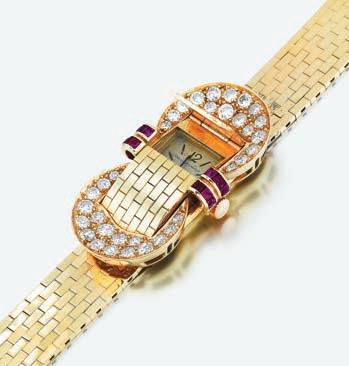

BY ANDRES WHITE CORREAL Chairman, Jewelry, EMEA
to protect the dial. The “Ludo” was of course targeting a different demographic—the stylish, avant-garde women of the interwar period.
This play between innovation and elegance, between mechanism and mystery, is at the heart of Van Cleef & Arpels’ identity.Unliketheovertengineeringbravura of early men’s watches, the “Ludo Secret” celebrates discretion and wit. Its hidden dial is not just a technical feat; it’s a gesture of intimacy, known only to the wearer. That sense of secrecy, of something precious tucked away behind beauty, elevates it beyond a timekeeper into the realm of personal ornament.
The house understood that for their avant-garde clientele, femininity and modernity were not opposites. Its signature serti mystérieux (mystery setting)—used for the rubies of this piece—exemplifies their drive to merge high jewelry with high innovation. The stones appear to float weightlessly across thesurface,theirmountingshidden,their sparkle uninterrupted.
Recently revived and reissued by the house, the model retains the spirit and silhouette of the original. This reappearance underscores the enduring relevance of the design: fluid, stylish, technically masterful and unmistakably Van Cleef & Arpels. Reimagined for collectors nearly a century later, the “Ludo Secret” remains a triumph—not only of craftsmanship, but of vision. For those drawn to the secret-filled timepiece, however, it may be worth seeking out an earlier example. Thevintagepiecestendtocarryawarmth and character that’s difficult to replicate.
As told to James Haldane
Arrive
Request your private consultation
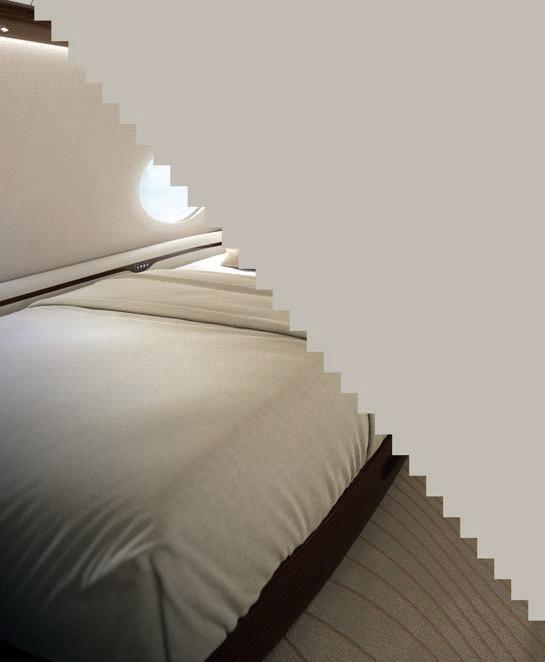


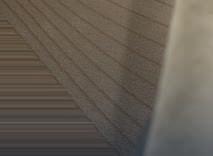
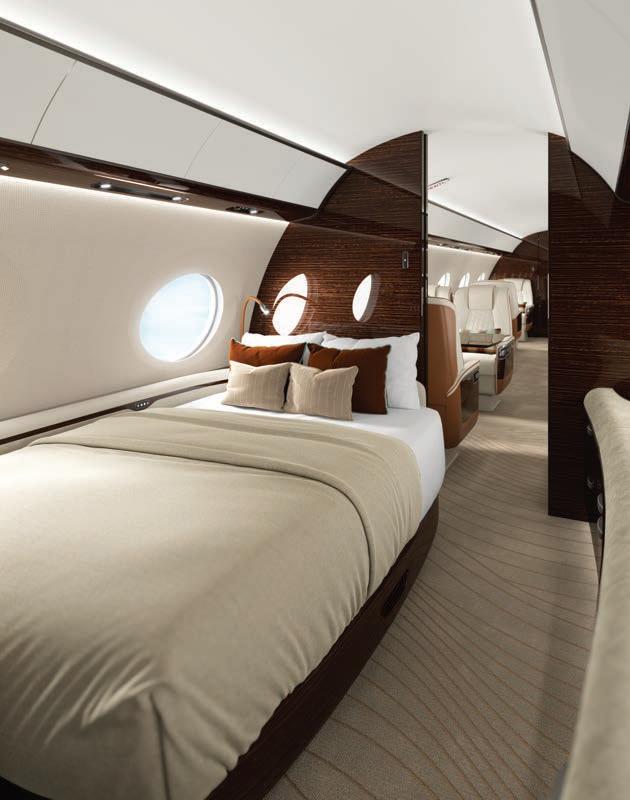

A British classic, expertly transformed by Mulliner, epitomizes the graceful end of a legendary coachbuilding tradition.
“EvEry Cloud has a silvEr lining,” the definitive book on one of RollsRoyce’s most famous models, celebrates this 1962 Cloud II Drophead Coupé Adaptation by H.J. Mulliner as the end of an era. Author Davide Bassoli, an expert on luxury British marques, identifies this car succinctly as “the last one built… with gorgeous lines, perfect proportions.” Only 107 Mulliner-adapted Drophead Coupés were built on a Silver Cloud II chassis—a collaborative creation that is generally accepted to be amongst the most elegant of all postwar coachwork— and this particular vehicle marks the final one.
Mulliner, a name now more commonly associated with the personalization of modern Bentleys, was historically an independent coachbuilder that can trace its roots back to a business in 1760s Northampton, England, which built and maintained coaches for the Royal Mail. It morphed through the 19th and early 20th centuriestobecome,bythe1930s,focused
almost entirely on adapting Rolls-Royces andBentleysatatimewhenluxurymotorcar ownership was rapidly expanding among Britain’s middle and upper classes.
In the U.S., where this car was destined, car ownership followed a similar line, expanding significantly after World War II, particularly during the 1950s and 1960s. This specific vehicle—chassis number LSAE639—should not, however, be misunderstood as anything less than a top example. It was created at a time when the coachbuilder would make modifications so extensive that the resulting car was, in its every detail, essentially a fully custom body. The “adaptation,” as it is known, in this case meant modifying a factory-standard steel saloon body into a convertible by removing the roof, fitting two doors in place of the usual four and adding a modified chromed waistline molding. The adaptation, notably, is one of just 74 left-hand-drive examples of the Cloud II built by H.J. Mulliner.
Copies of its original chassis cards, which are on file, indicate that the car was specially ordered by Boyd Calhoun Hipp, of Greenville, South Carolina, a decorated World War II hero who became aleaderintheinsurance,financeandtelevision broadcasting industries. Mr. Hipp requested a left-hand-drive, U.S.-specification model with a power radio aerial
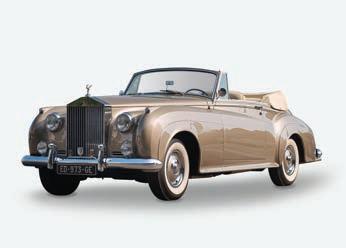

BY GORD DUFF President, RM Sotheby’s
and windows, the newly developed Rolls-Royce air-conditioning system, and special Sundym glass.
Mulliner also installed an array of special features supplied by London coachbuilder Harold Radford, including Perspex sun visors, a fitted locker with an ice thermos in the left-hand door pocket, fitted cocktail bars with three spirit flasks and six tumblers in the backs of the front seats, and most amusingly, removable “toadstool” cushions that affix to the rear bumpers, providing seating for elegant “tailgate” dining in the most literal sense.
Hipp accepted delivery of his Silver Cloud II in England in September 1962, with records indicating that it accompanied him home to New York in the most stylish of fashions, aboard the fabled Cunard liner the HMS Queen Elizabeth.
The car was later restored in previous ownership, and it still presents beautifully in Sand with fine red coachlining and an interior luxuriously trimmed in Magnolia Connolly hides, Cumberland Stone Wilton carpeting and a Fawn West ofEnglandheadlinerunderafreshmohair top. Correct whitewall tires augment the car’s chic yet sporting stance.
Whether in motion or on concours display, historians generally consider the rare Silver Cloud II coachbuilt cars as offering the best of all Rolls-Royce worlds: superior engineering, fine quality andtimelessdesign.Thiscar,asthelastof a proud series and one filled with bespoke features, is particularly special, and it will find a home in any fine collection of cars bearing the Spirit of Ecstasy.
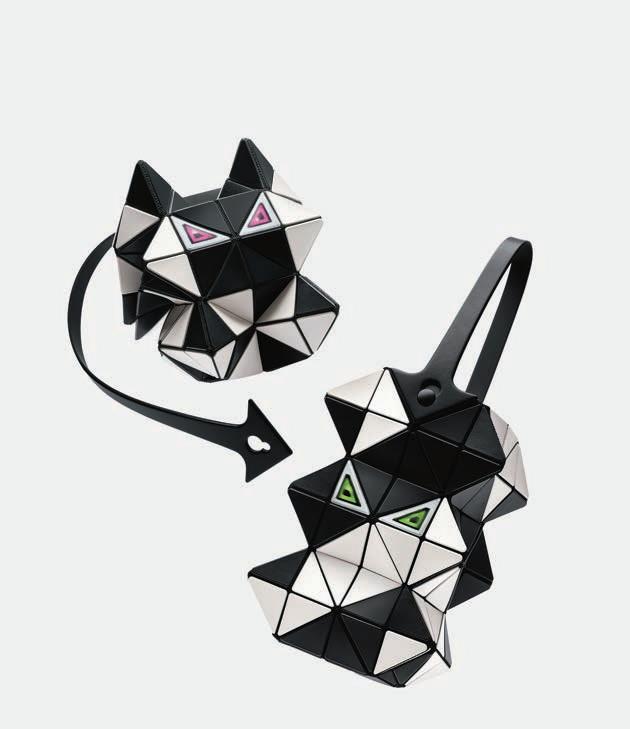
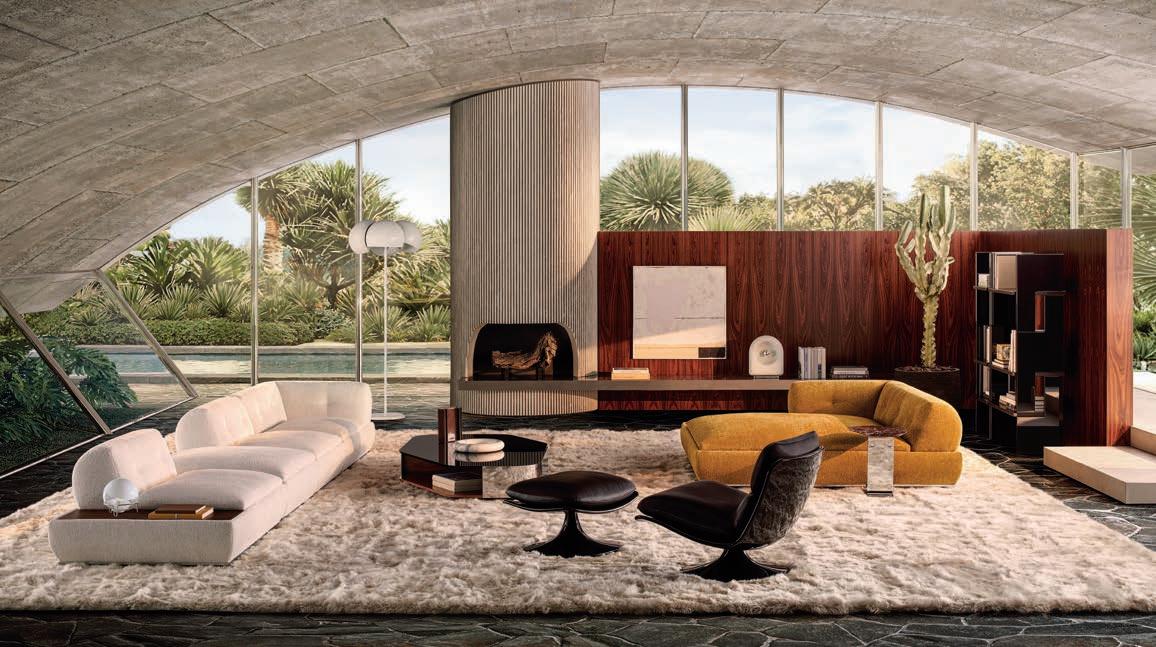

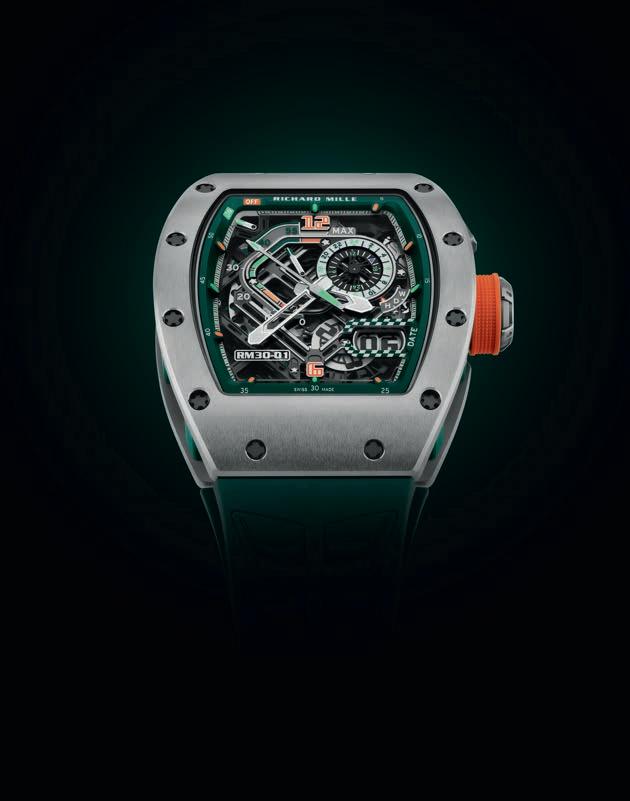
RM 30-01 Le Mans Classic
Skeletonised automatic winding calibre
55-hour power reserve (± 10%)
Baseplate and bridges in grade 5 titanium
Declutchable variable-geometry rotor
Oversize date and 24-hour display
Case in grade 5 titanium and Quartz TPT® Limited
ACT ONE
The Opening Bid, in which we present news from the worlds of art, books, culture, design, fashion, food, philanthropy and travel. Alongside The Global Agenda, which highlights not-to-be-missed exhibitions opening in September.
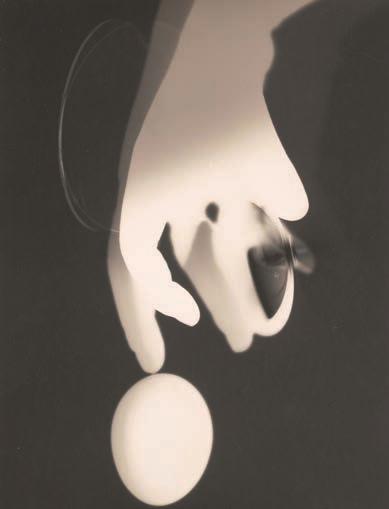

Edited by Julie Coe
The ingenuiTy of Man Ray, a key figure in the surrealist and dadaist movements, comes to fresh light this fall in an exhibition at New York’s Metropolitan Museum of Art that focuses on his photograms—or Rayographs, as he called them. Opening September 14, “Man Ray: When Objects Dream” is the first show to highlight Ray’s use of this rudimentary technique—placing objects on photosensitive paper—and the ways he brought out its rich possibilities, experimenting with unexpected materials and multiple exposures. The first Rayograph dates to 1921, when the Philadelphia-born Ray had just arrived in Paris. He would spend the next 18 years in the city, part of the vibrant Montparnasse scene. One of his collaborators there was fashion designer Elsa Schiaparelli, and her namesake fashion house is among the sponsors of the Met exhibition. The label’s creative director Daniel Roseberry feels a connection with Ray, who was also an American making his way in Paris. “Man Ray’s imagery feels at once specific to its time and eternal,” Roseberry says. “It’s something I think about often in my own work: how can we capture people’s imagination by showing them something new, something revelatory, while also reminding them of where we’ve come from?”


According to the origin story of plov, the national dish of Uzbekistan, it was created to cure a lovesick prince who wanted to marry a craftsman’s daughter. The first Bukhara Biennial, titled “Recipes for Broken Hearts,” takes its name from this tale. Artistic director Diana Campbell is pulling together many of the story’s threads—namely, craft and food—for the event, which opens September5.ManybiennialartistsareworkingwithUzbekcraftspeople to create pieces expressly for the show. “In 2025, the craftsman’s daughtershouldhaveaname,”Campbellsays.


“They should all be invited to the table.” For example, Tavares Strachan is working with an artisan to weave Langston Hughes poems into a carpet, while Laila Gohar is building a rock-crystal house from a local grape-juice sugar. “If you’re traveling to Uzbekistan to see contemporary art,” says Campbell, “it’s important that you’re not seeing anything you can find anywhere else in the world.”
From top: Caravanserai Ahmadjon, a setting for the Bukhara Biennial; a painting of Oyjon Khayrullaeva’s project, by artist Yunus Farmonov, 2025; the entrance to Bukhara’s Khoja Kalon and Kalon Minaret.
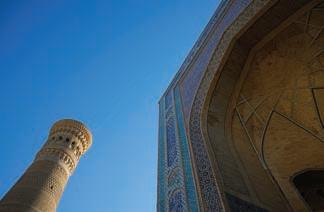
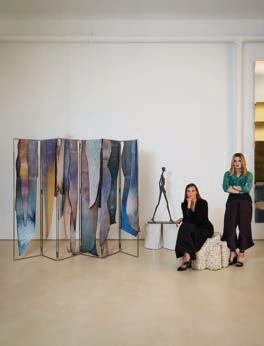
With outposts in Paris and New York, the Amelie du Chalard Gallery has become a resource for top interior designers over its 10-year history. One such talent, Kelly Behun, will inaugurate a guest curation series at the Manhattan showroom this fall, outfitting the space with her own picks from the gallery’s 80 artists.



Harmony: Helene Kröller-Müller’s Neo-Impressionists opens at the National Gallery in London.
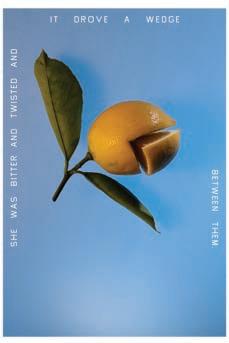
The counTdown is on for the final few weeks before the five-year closure of Paris’ Centre Pompidou. Celine is even sponsoring free access on the last day, September 22. Wolfgang Tillmans’ aptly titled show, “NothingCouldHavePreparedUs–EverythingCould Have Prepared Us,” is the appropriate swansong beforerenovationsbegin.TheGermanartisthastaken over the museum’s vacated 64,500-square-foot Public InformationLibrary,fillingitwithnearlyfourdecades’ worth of his photographic work, which ranges from the political to the poetic and often mixes the two.
Wolfgang Tillmans’ “Power Station (Low Clouds),” 2023.

ArTisTedruschA andchefRuthie Rogers, of London’s beloved River Café, were meandering through a grove behind Ruscha’s Los Angeles studio last year when the surroundinglemontreesgavethem the idea for the cookbook they’d always wanted to do together. The result is “Squeeze Me: Lemon Recipes & Art” (Rizzoli), a series of sweet and savory concoctions —from lemon fennel seed biscuits to sea bass carpaccio with lemon and tomato—accompanied by new works Ruscha created with his classic Boy Scout Utility Modern font. LoveFrom, Jony Ive’s studio, contributed the overall design and theaphoristictexts.“Alemonisnot justfruit,”readsone,“itisamood.”
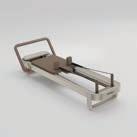
The latest from Technogym’s collection of sleek exercise equipment is the Reform, a Pilates reformer that comes in three colorways (Sandstone, shown, Diamond Black and Pearl Grey), features nauticalstrength ropes and vegan leather, and helpfully stores upright to save space.
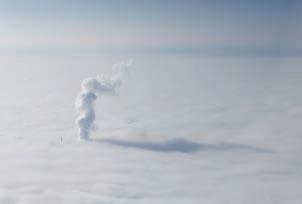


the national art center tokyo is the brilliant setting for “Bulgari Kaleidos: Colors,CulturesandCrafts,”openingSeptember 17. Displaying nearly 350 pieces from the Italian jeweler’s archives and private collections, the exhibition will examine Bulgari’s use of colorful gemstones across three themes: scientific aspects, cultural symbolism and light’s functioninperception.
Contemporary artists Lara Favaretto, Mariko Mori and Akiko Nakayama were each tapped to contribute new works. Favaretto has repurposed car wash brushes as kinetic sculptures, while Mori has built one of her “Onogoro Stone” pieces, inspired by Japanese mythology. Nakayama’s installation mixes together
water, sound and pigments to form fluid, real-time projections. In designing the exhibition as a whole, Japanese firm SANAA and Italian studio Formafantasma referenced both Roman mosaics andgingkoleaves.
The show traces Bulgari’s evolution from traditional designs to its postwar embrace of vibrant gems such as amethystandturquoise.Amongthekeypieces on display are a convertible 1969 sautoir necklace set with a rainbow of precious stones and a 1961 emerald necklace worn by Italian movie stars Gina Lollobrigida andMonicaVitti.
Bulgari Heritage Collection bangle in gold and platinum with rubies, sapphire and diamonds, 1954-1955.

In the late 1970s, photographer David Wojnarowicz took a series of photographs of friends wearing a mask of Arthur Rimbaud’s face. The black-and-white pictures seem to show the 19th-century French poet resurrected in the crumbling New York City of the late 20th century, eating in a deli, loitering under overpasses, riding the subway, doing drugs. This fall, “Arthur Rimbaud in New York” is the subject of an exhibition of the same name opening at Manhattan’s Leslie-Lohman Museum of Art. It will also be exploredinaforthcomingbookfromSkira,edited by the show’s curator, Antonio Sergio Bessa.
Right: David Wojnarowicz’s “Arthur Rimbaud in New York (Coney Island),” a silver print from 1978-79.

To celebrate the opening of the House of Dior New York, the fashion label is rolling out a range of pieces exclusive to the Manhattan flagship, from T-shirts to trays and bags, many in a chic newsprint-style pattern.
Dior Book Tote, $3,600; available
House of Dior New York.
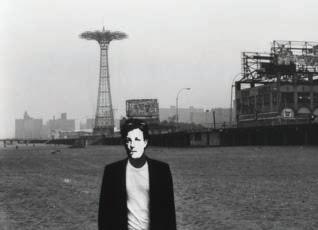
Joel Mesler has seen the art world from many sides, as an artist, dealer and collector. Now he’s added creator of museum merch to that list.
For his new show at Guild Hall inEastHampton,NewYork,titled “Joel Mesler: Miles of Smiles,” he’s set up his “Smile Shop” in the museum lobby, with playful offerings of his own design, from charm necklaces to fruit bowls to brightly painted chairs.
It’s all very much in keeping with his exhibition’s premise, an office-slash-studio space, outfitted with his own works and those of artist friends, where Mesler may or may not be in attendanceduringopeninghours.




Creatures and Captives: Painted Textiles of the Ancient Andes opens at the Dallas Museum of Art in Texas.



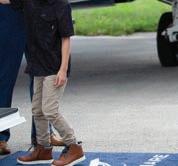
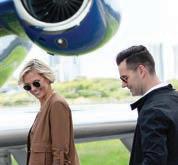



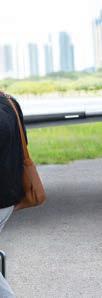

Your time is precious, so spend more of it how you like. The unparalleled flexibility of Airshare gives you the freedom to get there faster, stay a little longer, and make more memories along the way.
Unlimited hours* each day you fly
Immediate availability in the Challenger 3500 and Phenom 300
Industry-leadinginterchange rate to maximize efficiency
Up to 25%savings when your trip begins and ends in the same location
Whether you choose Fractional Ownership or the EMBARK Jet Card, Airshare ensures you get the most out of every day.


Opening september 12, “Downton Abbey: The Grand Finale” sees the Crawley family struggling to preserve the titular Yorkshire estate. As they face death, divorce and debt, jewelry plays a role in underlining their challenges.
The show’s longtime costume designer Anna Robbins turned to London estate jeweler Bentley & Skinner to assemble a collectionofpiecesthatwerebothhistor-

ically accurate for the 1930s and reflective of the story arc. She first considered what might be passed down from the family matriarch, the recently deceased Violet Crawley, Dowager Countess of Grantham. In one scene, for example, her granddaughter Lady Mary wears one of Violet’s brooches. “We were also really clear that [Violet’s] garnet ring would become part of Mary’s everyday jewelry,” says Robbins.
To give sartorial symbolism to the scandalousness of Mary’s divorce, Robbins paired a red-silk dress cut on the bias with a diamond Art Deco brooch fastened at the base of a low back. “There was something about entering into the 1930s that galvanized us,” Robbins says of the
bold looks seen on both Mary and her sister, Lady Edith. “There was a new sense of creativity.”
The wealth of tiaras in the film may seem to run counter to the Depression-era setting, but the Victorian- and Edwardian-era pieces reflect the realities of an aristocraticfamilypastitsfinancialprime. “These are heirloom pieces. What’s on display is what they’ve got to lose,” says Robbins of the tiaras. “They would probably sell their jewelry before they sold the estate.”—
Shannon Adducci
Above: Michelle Dockery as Lady Mary Crawley, wearing a 1930s tiara featuring a diamond “flower,” Andrew Prince reproductions of 1920s earrings and Art Deco fan-shaped brooches.



One day during the pandemic, Frédéric Biousse and Guillaume Foucher got in the car and set out from Paris for a strategic roadtriparoundBrittany.Theco-founders of boutique hotel group Fontenille Collection were on a mission to find the next location for their growing brand. “We did a complete tour, north, west and south,” says Biousse of their coastal drive.
They came across an old, family-owned hotel in the town of Perros-Guirec, with panoramic Atlantic views. Biousse texted the owners, who initially weren’t interested in selling—until a few months later, when they had a change of heart. “They liked the fact that we loved the property,” says Biousse. “They knew that we would upgrade it, but we would keep the feel. We would keep the family history, the heritage. It happens a lot like this.”
Les Bassans, which opened in June, is the 12th Fontenille Collection property, and the ninth in France. “We always select buildings that are historically anchored in the region,” says Biousse, who has a background in fashion and co-founded
the investment firm Experienced Capital. Foucher serves as the collection’s artistic director, overseeing an internal design team that handles all the renovations. He has a PhD in art history and worked in the Louvre’s sculpture department before becoming an art advisor and gallerist. “This is why you always find a unique sensitivity in terms of architecture, design, arts,” says Biousse. “Each of the hotels has its own personality, but globally, when you go from one to another, there’s this throughline that unites them.”
The first property in the collection was Domaine de Fontenille, an estate in the Luberon that opened in 2015. Additions since include Domaine de Primard, Catherine Deneuve’s former home near Giverny; several island hideaways (on Menorca and Île d’Yeu); and a Tuscan vineyard. As Fontenille has grown, it has attracted investment from LVMH and France’s Caisse des Dépôts, a state investment agency, and at least four more hotels are in the pipeline, in Aix-en-Provence, Burgundy, Chamonix and Florence.
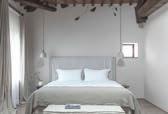
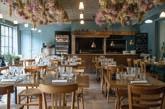
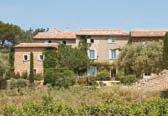
Maison S. is a six-room guesthouse in the picturesque hillside town of Chenjiapu, in China’s Zhejiang province. Created by collector and investor Catherine Chen, the hotel has a museum of local artifacts, from Song dynasty pottery and antiquarian books to age-old deeds and other paperwork that illuminate village life.
Below: At Maison S., a set of seals engraved with Zhu Bolu’s “Household Maxims.”
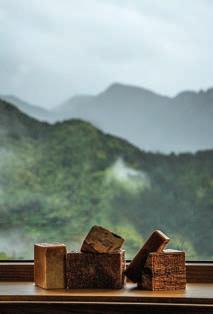
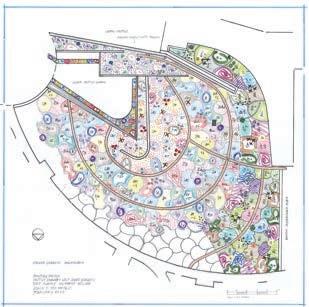
One Of PhiladelPhia’s most famous sons, Alexander Calder, will soon have a new institution dedicated to his work. Opening September 21 on the city’s Benjamin Franklin Parkway, Calder Gardensfeaturestheunmistakable floral wizardry of Dutch landscape artist Piet Oudolf, renowned for his work on New York’s High Line. Adjoining the grounds is a roughly 18,000-square-foot structure by Swiss firm Herzog & de Meuron,


Martin Puryear: Nexus opens at the Museum of Fine Arts Boston. The Museo Casa Kahlo opens in Mexico City.
meant to provide a sense of seclusion from the surrounding city. Through these spaces will rotate a trove of works held by the Calder Foundation, led by the artist’s grandson, Alexander S.C. Rower. The kinetic, dynamic nature of Calder’s sculptures is reflected in the programming, which is set to include concerts, performances, talksandmindfulnessactivities.
Above: Piet Oudolf’s planting design drawing for part of Calder Gardens.

Wautier:
at the Kunsthistorisches Museum in Vienna. The Sculptor Prince opens at the Musée d’Orsay in Paris.
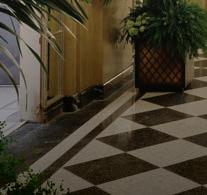
Inspired by Versailles’ Hall of Mirrors, the Silver Corridor at New York’s Waldorf Astoria had lost its regal bearing over the years, tarnished by smoke and grime.As part of the hotel’s SOM-led renovation, the 19th-century Edward Simmons murals have been expertly restored to their former glory, while the mirrors and chandeliers have regained their original shine.


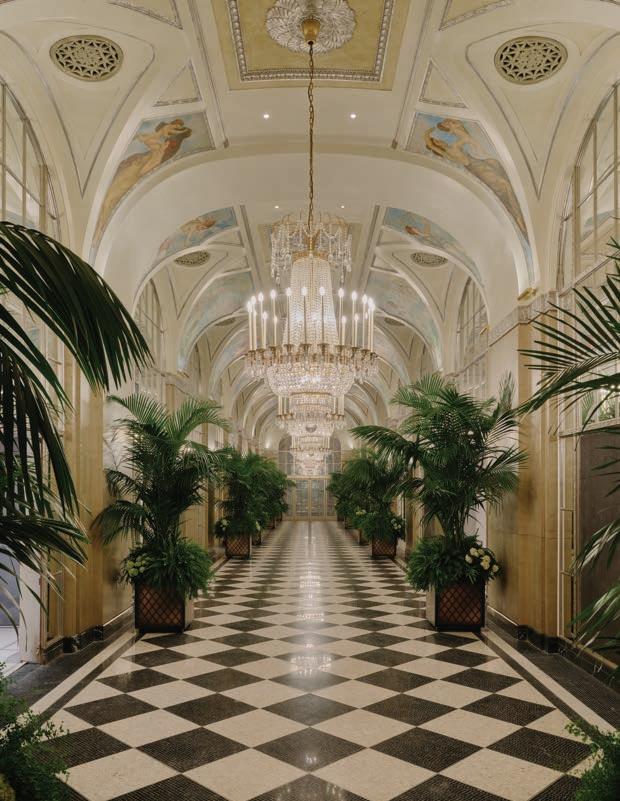
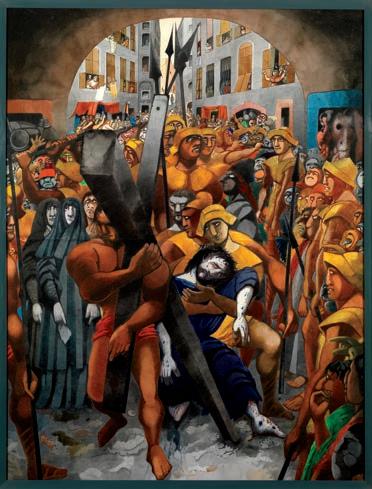
In which we delve into the minds of creators and collectors, discussing the long-sought works that got away, tracking the place art has on our walls, learning from artists’ well-loved tools of the trade and parsing the psychology behind it all.
A lifelong collector and advocate for self-expressive spaces, August opened her New York gallery, Raisonné, in 2023 to champion mid-century French and radical Italian designers and their contemporary successors.
BY JAMES HALDANE PHOTOGRAPHY BY VICTORIA HELY-HUTCHINSON
Describeyourcollectioninthreewords.
Minimal, restrained and distilled. I like works that possess the artist’s most essential elements. As a 21-year-old, my parents took me to an artist’s studio in Brooklyn to select a college graduation gift. It turned out to be Basquiat’s studio, and I chose a drawing that had a crown on it because he explained that it was his symbol.
What was your very first collection, maybe as a child or a teenager? I’ve always had a passion for collecting. It started when I was very young with a penny collection. When I was in high school, I was a tomboy, so I started flipping baseball cards. On weekends, I would travel to conventions and teach myself which ones were important.
Why do you collect? It comes from a desire to be surrounded by beautiful things and has transformed into wanting to create an environment for friends and family. Iwasanarthistorymajor,soIhada creativesideandIlovedspendingsummers going through the Paris flea markets. I dabbled in the furniture, but it wasn’t until I got married that I started doing it seriously. I’ve always been interested in art and design, but I feel like design has been put on the back seat by collectors and institutions. Collecting creates everevolving spaces. When you keep adding, it
becomes a living narrative. Now I have art too, and it all makes a very good cocktail.
Does art play a role in your romantic relationship? When I married my husband, Glenn, he asked me what IwantedformybirthdayandIsaidIwould like to collect one painting together each year. The first painting was a white [Lucio] Fontana. My husband thought I was completely crazy, but I still look at it and have a visceral reaction. Arte Povera was always my favorite period.
Who is your collecting wingman? It’s Glenn. I’m the one who drives the collection—I always say that he’s my finance partner—but I feel strongly that we should do it together. I challenge him, but I know that he gets as much pleasure from it as I do.
What artwork or object have you restored back to life? It was a small seascape painting by [Gerhard] Richter. It had an imperfection that was barely visible to the naked eye. I couldn’t see it, but somehow Glenn uncovered it. So when we bought it, we had Richter sign off on touching it up—you don’t often have a living artist to be able to do that. It still bothered my husband, though, so we sold it about 15 years ago. We did very well, but we would have done even better if we
had kept it. Now, when Glenn wants to sell something, I say, “Just remember the Richter, honey.”
Who is the most unjustly overlooked artist? Félix González-Torres. He had ashortcareer,buthisartisstillsorelevant because it involves the viewer and deals with the fragility of life. During COVID-19, the gallerist Andrea Rosen arranged for around 400 participants to each exhibit his 1990 work “‘Untitled’ (Fortune Cookie Corner).” I was living in the Hamptons with my family at the time and was able to create a homage to González-Torres in my conservatory. I posted it on Instagram and people made appointments to come and see the work. Everyone got to go home with a fortune.
Favorite art fair and why? I love Paris Design Week every September. A lot of design starts there.
Favoritecuratorandwhy? I am obsessed with Hans Ulrich Obrist. He’s a genius, a true advocate for artists and he loves to connect people. He puts on incredible shows at the Serpentine Galleries in London.
What’s the piece that got away? In 2015, a friend came to me who was trying to put together a group of people to buy
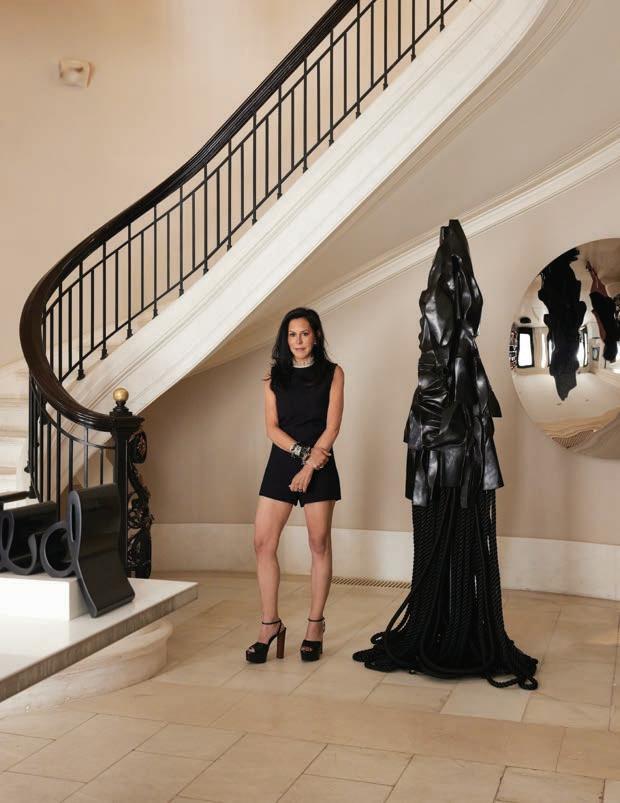

a Gonzélez-Torres work made up of green candies wrapped in cellophane. The piece has interesting bylaws—it can be owned by more than one person, and it can be on display at more than one place at a time. I think there were nine of us and it was such a genius idea, so I was excited to participate.Aswefoundoutlater,wewere beaten at auction by [philanthropist and art patron] Alice Walton, so I don’t think we were even close.
What “tools of the trade” do you use to keepbuildingyourcollection? Auctions, galleries, connections—everything. And I just never know where things will end up. I bought a 13-foot Charlotte Perriand “Nuage” bookcase from Phillips years ago withouthavingaplacetoputitbecauseI’d never seen one that size before. It wasn’t until I moved into my current home that I installed it. When I was just married,
I bought 40 beautiful panels of 18thcentury parquet de Versailles flooring. I never wanted to install it in a home if it wasn’t my final destination, so I waited 25 years until I moved into where we live now.
Favorite work of architecture and why? I love the softness of Tadao Ando’s concrete and the way he incorporates light and landscape into his designs. I was just at the Chichu Art Museum [in Japan], which I thought was incredible.
How has your taste changed through time? My gallery in SoHo, Raisonné, is a relatively recent development in my collecting journey. I had a dealer friend who kept saying that I needed to meet this guy with a store in Brooklyn. I used to say: “Why would I go to Brooklyn if I could go to France to buy furniture?” That guy
was Jeffrey Graetsch, Raisonné’s director, whom I now call my encyclopedia because of his knowledge of designers and where to find things. We decided that it was the right time to open a gallery because New York didn’t have a great design gallery. It’s filled with masters of furniture from the 20th and 21st centuries, alongside carefully curated art.
What was your wildest white-knuckle moment at auction? I bought a Paul Dupré-Lafon coffee table a long time ago from Sotheby’s. There was a lot of fighting but it’s still one of my favorite pieces. But I’ve never bought anything live in an auction room. I prefer to be at home as I don’t like seeing who I’m bidding against. I have taken calls in crazy locations in order to get things though. I was once in the middle of an interview for my daughter’s high school admission and I stepped out to bid on a Jean Prouvé metal cabinet that I’d never seen at auction before.
Whattipsdoyouhaveforcollectorsjust starting out? Buy what you love. Even if it doesn’t appreciate in value, you will still love living with it.
Do you have a family heirloom, inherited or acquired, to pass on? I have an heirloom for my kids. About 20 years ago, I went to the Whitney Biennial and became obsessed with a 12-foot letter “X” painting by Wade Guyton. It was minimal and sexy. At the time, he didn’t have a gallery, so it was hard to get in touch with him. Somehow, I got his phone number and he basically said: “OK, I’m going to call Home Depot and buy two pieces of wood, and I’m going to send the paint to your house, and I’ll build it in your yard and install it for you. $8,000.”
Favoriteart-relatedbook? There’sabook about Maja Hoffmann’s collection called “This is the House that Jack Built.” Rirkrit Tiravanija did the custom font and the pictures are incredible.
Which collectors do you admire? Emily FisherLandau.Ihadthefortuneofvisiting her home in Palm Beach. She was also interested in design and art. People who bring both into their home and live with it make more interesting collectors for me. •

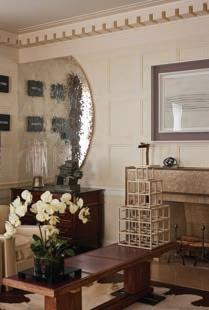
Opposite page: August’s collection of ceramics, lacquer objects and design monographs.
This page, clockwise from top left: Jean Michel Basquiat, “untitled,” 1984; The white Fontana bought for August as a birthday gift in her first year of marriage stands over design objects including a René Lalique “Spirales” vase; Andy Warhol, “Campbell’s Soup Cans,” 1962; room containing On Kawara, “May. 7, 1980,” and “Apr. 16, 2000”, Jim Hodges, “Movements (variation 111),” 2008, Sol LeWitt, “1,2,3,” 1978, and Piero Manzoni, “Achrome,” 1958.
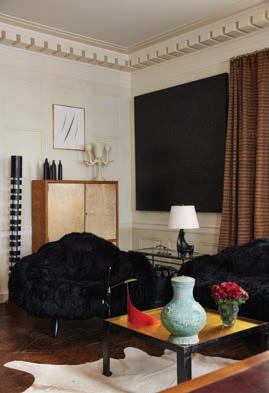
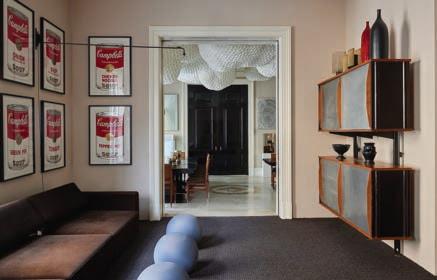
In an ongoing column, a psychologist and a curator delve into the various meanings behind the act of collecting, exploring its significance both for individuals and society as a whole.
BY ORNA GURALNIK AND RUBY GURALNIK DAWES
Vince Aletti is A writer and curator known for his photographic criticism in The Village Voice and The New Yorker. He also houses a collection of over 10,000 magazines in his New York apartment, which we toured on a hot summer afternoon, taking in his sprawling library as we slipped past the myriad stacks. Aletti encouraged us not only to look but also to touch any object we might be interested in. If not for his openness, it might have felt illicit to enter a collector’s home. Aletti invited us to participate in, rather than view from a distance, his universe of things. The refusal to store objects out of sight speaks to a radical ethic of presence: objects must be seen, handled and read.
It’s a visceral experience, walking through this world full of richness; one can imagine never needing anything aside from what is already there, at a hand’s reach. It spurred us to think through certain questions: What inspired this intense focus in his collecting practice? What is the psychology behind living with versus storing one’s collection? What distinguishes a collection from an archive?
The act of collecting is often solitary and obsessive, yet Aletti has created a personaltrovethatisalsoasocialobject— inviting viewers to enter his space, engage in dialogue, share in a mutual curiosity. Though Aletti has cohabitated with his continually growing piles for nearly half a century, his collection continues to surprise even him.
Unlike much of fine art, magazines are mass-produced, ephemeral and timebound; they function both as a reproduc-
tiveformandanoriginalsiteofproduction. As a magazine collector, Aletti is clearly driven by content, context and historical texture rather than obtaining rarity or market value. From the start, Aletti felt buying magazines—fashion magazines in particular—served as a democratized form of art acquisition: in his words, “awayofpickingacollectionthatIcouldn’t afford otherwise.” Purchasing the September 1955 issue of Harper’s Bazaar, for example, not only entailed owning a copy of Richard Avedon’s “Dovima with Elephants,” but seeing the remaining images from that shoot, obtaining a fuller sense of its photographic and social context. “For someone as obsessive as I am,” Aletti told us, “I really like to see everything that went into and supported that picture that we know.” Collecting images in this way is an act of rescue, an effort to preserve what was intended to be forgotten or discarded.
When we asked Aletti about his motivations for amassing such a vast collection of periodicals, he laughed, then explained with a cheeky smile, “It’s one of those things that I think I need to see a psychiatrist for… I haven’t really thought it through. It clearly means a lot to me, and it’s all here.” That left us with the task of speculating. We learned that Aletti’s father, an amateur photographer, died in a plane crash when Aletti was a tender 10-year-old. Aletti’s mother quickly uprooted the kids from Pennsylvania to Florida, where Aletti was suddenly free; he took to reading and doing as he pleased, with little supervision. When we suggested if there could be a connection
between his self-proclaimed obsession with photography and his early memories in the dark room with his father, Aletti at first vehemently disagreed, adding that he “deliberately erased” his father from memory for years. “Who knows why, but I just closed all that down, it seemed like the easiest thing to do,” he continued. Instead, he focused on his mother: “I felt it was [her] loss,” he recalled. “She was really bereft.”
Later in life, however, Aletti became close with the photographer Peter Hujar, who lived across the street, and with that friendship started mending the disavowal of his father’s importance in his psyche. “It was really interesting to spend time with him,” he said. “It wasn’t like it all came back to me, but on some level itwasthere.Itwassuchapleasuretosmell those smells again, recall all of the steps involved. It really took me a long time to make that connection because of how far down I had sort of repressed it all. But now I’m glad to think about my father’s connection to photography.” Aletti’s collection resembles a melancholic structure: an ongoing negotiation with loss, time and cultural forgetting. By the end of our conversation, Aletti revealed that it was clear to him that his collectionservesaspsychologicalscaffolding. The presence of the various materials in his apartment stabilize memory, reject grief and offer comfort, anchoring and stabilizing the self in place. Aletti’s collection serves as a holding environment, a form of somatic assurance that supports not only his work but also his life. •
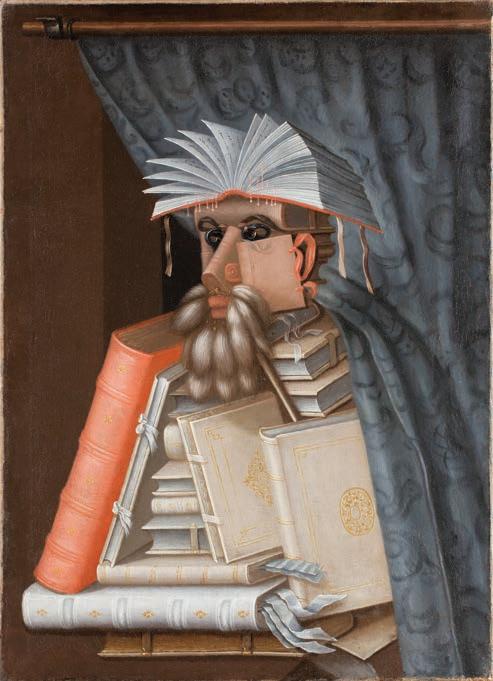
Shaped by Bauhaus ideals and their escape from Nazi Germany, the Albers became one of the 20th century’s most influential creative duos. For 46 years, Nicholas Fox Weber has led their foundation and now draws from its archive of the couple’s experiments and ephemera to reveal their unpretentious view of life and their serious approach to art and design.
BY NICHOLAS FOX WEBER PHOTOGRAPHY BY HENRY LEUTWYLER
Anni Albers referred toenrollingattheBauhausin1922,two years after Josef, as “arriving at the land of white.” Part of it was wearing white clothing, or in this case, off-white clothing. Both she and Josef had a nuanced sense of style. More broadly, they liked design that was functional, anonymous and timeless.
Josef experimented perpetually. While he showed his art in a very finished form, so that the interaction of color could occur in all its force, he would do studies to find out what paint to use. He might put one color next to a Grumbacher Mars Yellow, and the same color next to a Winsor & Newton Mars Yellow.
He would always apply paint straight from the tube onto a white panel. Once, I asked him to describe his technique. “The way I spread butter on bread,” he replied—adding that he didn’t mean American white bread, but good Bavarian pumpernickel. He also never put a color on top of another color. He said his father taught him that when he painted a door, “you need to start in the middle, put your paint directly on the background, and work your way out. That way, you catch the drips and don’t get your cuffs dirty.”
The paints themselves were the magic, and Josef was precise—not only about the manufacturer but about the particular batch. In 1976, he said, “Nick, I’m trying to find a Winsor & Newton Cobalt Green, no. 184, because there’s a painting that I want to do with a large central square. If I use the one that’s available, no. 205, I don’t get the penetration of one color into another.” I called Winsor & Newton’s American headquarters and was told there was no difference between 205 and 184. Then I said, “I’m callingforJosefAlbers.”Threedayslater,aboxofno.184arrived.
Josef did the painting he wanted with a large central square. He saw the central square as the cosmos, surrounded by the sea and the Earth. He said that the cosmos should not have sharp edges or corners. It was his last painting.
Anni came to textile-making inadvertently, having originally studied painting and tried unsuccessfully to work with Austrian artist and poet Oskar Kokoschka. Then she did some textiles
at the Hamburg School for Applied Arts, but she felt it was too much like needlepoint, before settling at the Bauhaus. Upon arrival, she immediately felt that textiles should not reproduce natural forms, like the ornate damasks and floral patterns she grew up with. Rather, the beauty of textiles lay in their content.
She allowed thread and its interlacing to be the source of beauty itself. For her earliest wall hangings, she was attracted to pure geometry, particularly the work of Dutch painter Piet Mondrian, and she was deeply influenced by the geometry of the facades of Florence, where they honeymooned.
Anni was interested in discovering new threads and, while in Italy, she bought a little crocheted cap. It had an elastic quality, so she took it apart and discovered it was made of cellophane. She found worship of natural fibers ridiculous and liked to buy what was available. She would go to Sears Roebuck with my wife to do what she called “treasure hunting.” She said Tupperware embodied the Bauhaus ideal—cleanable, easy to manufacture and elegantly functional.
Anni had grown up in a world of diamonds and emeralds and everything materially had been lost. She was very lucky that her parents, who went to America in 1940, survived the Holocaust. Soon after, she began collaborating with a student at Black Mountain College, Alexander Reed, on a jewelry collection made from hardware store items and inspired by ancient Mexican jewelry. It was shown in New York and Chicago to mixed reviews. But for Anni, the point was never preciousness—it was imagination. Great design, she believed, came from ideas, not materials.—As told to James Haldane
United in simplicity: Anni and Josef’s matching work jackets, possibly sewn by Anni, are preserved in the collection of their foundation, established in 1971 on land in Connecticut that the artists purchased during their lifetimes. Anni, who died in 1994, occasionally sewed garments from simple patterns and was also known to wear her husband’s clothing.

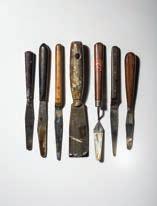
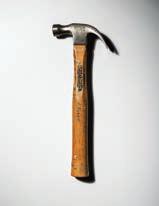

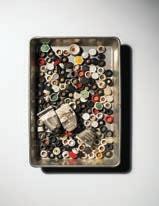

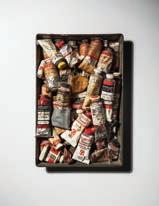
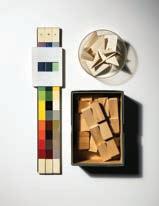
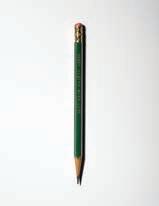

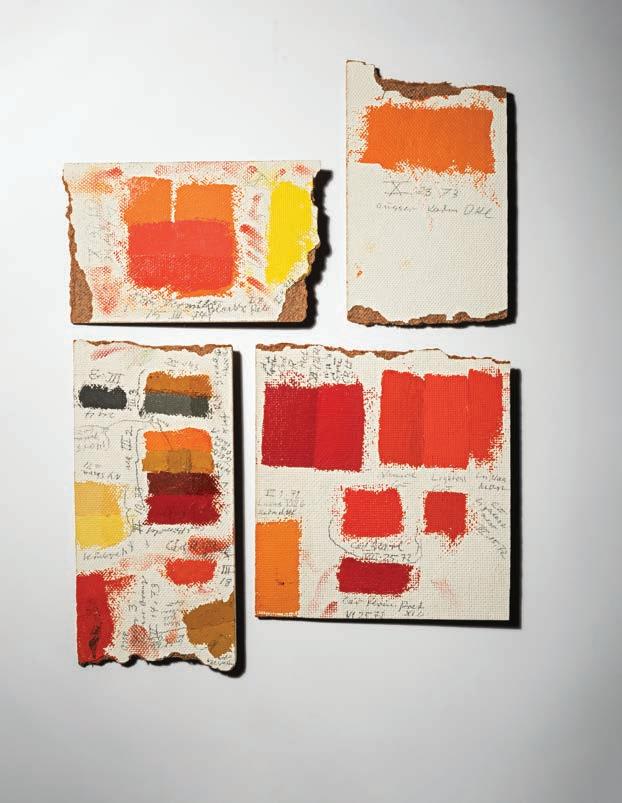
always experimenting, forever exacting Color study with pencil annotations, including Roman numerals—an element Josef, who died in 1976, also used in the titles of his final artworks. Opposite, clockwise from top left: Painter’s knives, which Josef emphasized were distinct from palette knives, used to apply rather than mix paint; a hammer with “Albers” hand-carved into the handle, still in use at the foundation; writing and sketching pencils; red paint tubes from multiple manufacturers; Josef’s model for a geometric decorative design to be installed above a fireplace in collaboration with architect King-lui Wu at Yale University; a pencil foil-stamped with “Josef Albers with love”; objects reflecting Josef’s exploration of color, light and geometry; paint tube lids gathered in a tray—left as they were at the time of Josef’s death; Henri Cartier-Bresson once told Josef that he painted “circular squares”—a description he cherished.
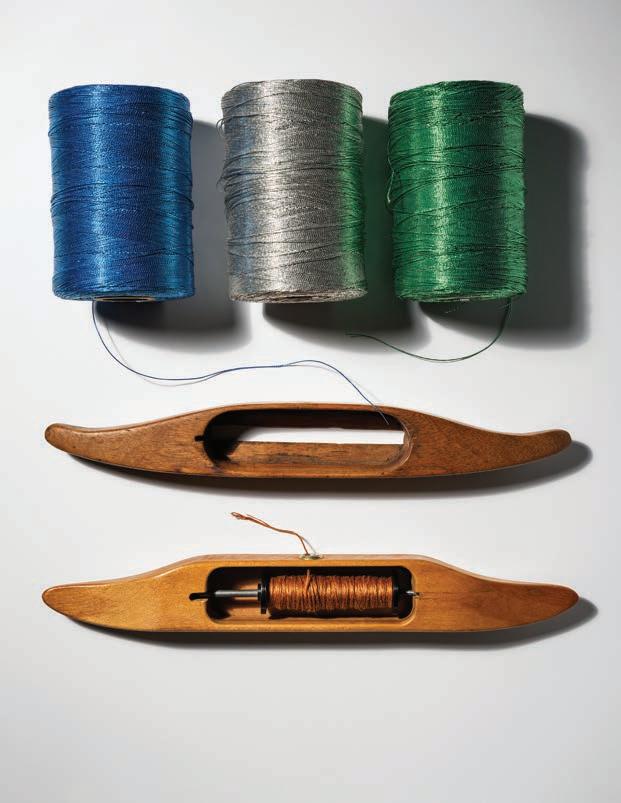
practically minded, imaginatively fashioned
Above: Loom shuttles and metallic thread. Anni often struggled to get the right tools. At the Bauhaus, materials were limited, and when she arrived at Black Mountain College, there was nothing. She had to find what she could locally, but liked the idea of starting from scratch. Opposite, clockwise from top left: Textile tools including a yarn divider, combs and pegs; a necklace made from metal seals, part of a collection created by Anni with Alexander Reed; a mid-20th-century Bakelite magnifying glass; textile samples, including examples combining jute and metallic gold thread; textile-making equipment, including loom shuttles, heddles and a winding tool; a letter Josef sent to Anni in 1955, from Germany, likely while preparing to participate in the first Documenta exhibition in Kassel, West Germany; mini translation dictionaries. Anni was fascinated with language, was bilingual in German and English, and liked miniature versions of commonplace things; further necklaces fashioned from hardware—including a sink strainer, ball chain and paperclips—sometimes combined with grosgrain ribbon; spools of thread designed to fasten buttons and carpets.
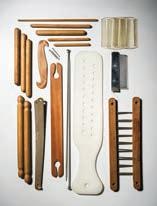

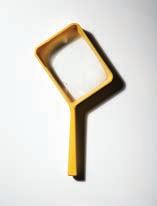
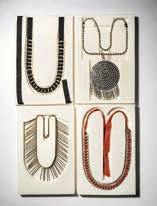
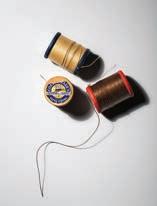
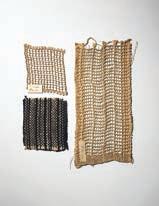
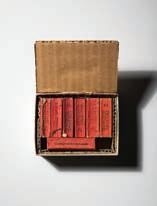
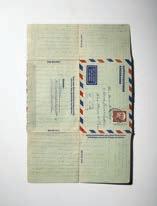

Yves Saint Laurent and Kim Jones, both of whom made their names at Dior, share another thing in common: an elegant Armand-Albert Rateau fauteuil.
BY LUCAS OLIVER MILL
ThemosTpreciousobjecTs ownedbyYvesSaintLaurentand his partner, Pierre Bergé, were housed within their grand salon at 55 Rue de Babylone in Paris. In a moody, wood-paneled room originally designed by Christian Bérard and Jean-Michel Frank in the 1920s, paintings by Mondrian, Brancusi and Picasso hung alongside some of the finest creations from the art deco period. At the center of the salon, two chairs stood side by side. One was Eileen Gray’s “Dragons” chair, which fetched a staggering $28 million at auction in 2009, becoming the most expensive chaireversold.Besideit—quieter,butbynomeansinferior—was a circa-1920 armchair by Armand-Albert Rateau, one of the most enigmatic talents of 20th-century French design. Rateau is often associated with fashion designer Jeanne Lanvin, whose Paris apartment he lavishly decorated in the mid-1920s.
On first glance, the chair is modest compared to the opulence of Rateau’s other creations. Closer inspection reveals that the legs are, in fact, hand-carved into the form of exquisite winged birds, washed over with a jade-green coating. It’s no surprise that Saint Laurent was drawn to this Rateau chair in particular, given his fascination with animal-inspired pieces. “I have a passion for objects depicting birds and snakes, but in real life, these animals scare me,” he once confessed.
In 2009, as the estate of Saint Laurent and Bergé was sold in Paris, the London-born fashion designer Kim Jones followed eagerly from afar. At the time, Jones was the creative director at U.K. men’s label Alfred Dunhill and relatively unknown to the wider public. “I couldn’t afford any of the pieces. I was young. But I was obsessed with their collection,” he tells me as we sit in his North London home. What Jones could not have known back then was that, within a decade, he would step into one of the most storied roles in fashion at Dior, following in the footsteps of Saint Laurent, who led the house’s couture atelier in an earlier era.
Jones joined Dior in 2018 and immersed himself in the house’s archives, drawn to the years shaped by Saint Laurent’s influence.
His fascination with Saint Laurent—both as a designer and as a collector—deepened. By this time, Jones was one of the foremost figures in contemporary fashion and had the means to build the art and design collection he had always dreamed of.
Soon enough, a message came across Jones’ desk at Dior: the Rateau chair from Rue de Babylone was available again. Jones did not hesitate. Though the two fashion designers never met in person—Saint Laurent died in 2008—they were now linked not only by their contributions to Dior, but also by a Rateau chair. (Jones left Dior earlier this year.)
These days, the chair resides in Jones’ home, a two-story concrete and glass structure hidden down a mews street in North London. It’s filled with objects that range from Virginia Woolf’s teapot (another obsession of Jones’ is the Bloomsbury Group) and a first edition of Darwin’s “On the Origin of Species” to a rare pair of Francis Bacon rugs created before the artist turnedtopainting(onlysevenexisttoday).Despitethesheervolume of art, objects, books and ephemera, Jones’ home is far from cluttered. He is a perfectionist. This is perhaps most evident in his library, where custom covers, designed by Jones himself, encase all of his first editions and rare books.
The Rateau chair sits just off the library, in a quiet secondary living room. It’s positioned beneath a small work by artist Tim Breuer, a student of Peter Doig’s, and surrounded by various objects from Jones’ extensive travels. Nearby, a Jean Prouvé cabinet with a green exterior happens to match the legs of the chair perfectly.
Jones’ cat, Dennis, is often found curled up on the chair. One would normally never let a pet near such a piece, but Jones is particularly adamant about living with the things he owns. “Of course I sit in it,” he says, laughing, when I ask if he ever uses the chair. Watching Dennis lounge there feels fitting. Saint Laurent famously kept his French bulldogs close, and they were often found perched on chairs throughout the Rue de Babylone apartment. •
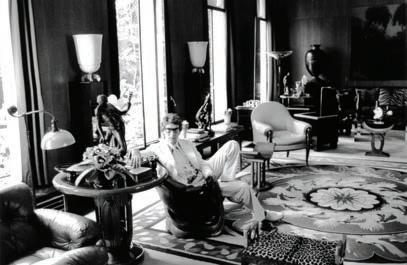
Rue
Yves Saint
in
apartment in 1974, photographed by
To the right is the Armand-Albert Rateau armchair, upholstered in white leather. Saint Laurent would later change it to dark leather.
Right: The Rateau chair, featuring Dennis the cat, in Kim Jones’ London home, photographed by Lucas Oliver Mill for Sotheby’s Magazine. A work by Tim Breuer hangs above the chair, and to the left is a Jean Prouvé cabinet. The larger paintings are by Alex Foxton.
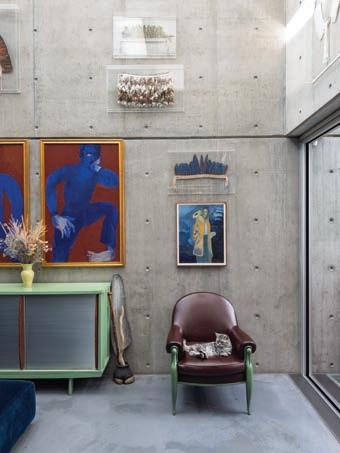









































20-24 SEPT. 2025
100 INTERNATIONAL ART GALLERIES 20 DISCIPLINES
Set against Morocco’s vibrant landscapes, centuries-old dyeing techniques ignite a bold, graphic exploration of color and form.
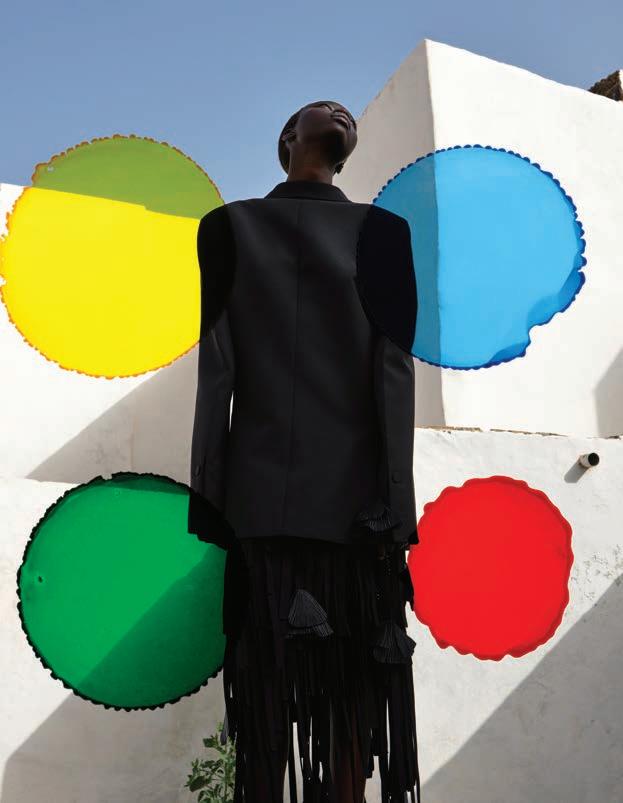
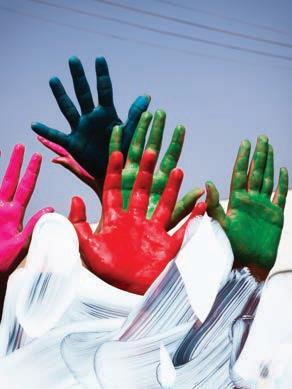
palette cleanse
Essaouira’s harbor, with the 16th-century Castelo Real de Mogador in the distance, evokes centuries of maritime trade between Europe and North Africa. Givenchy by Sarah Burton dress, Fforme shoes and Rellik scarf.

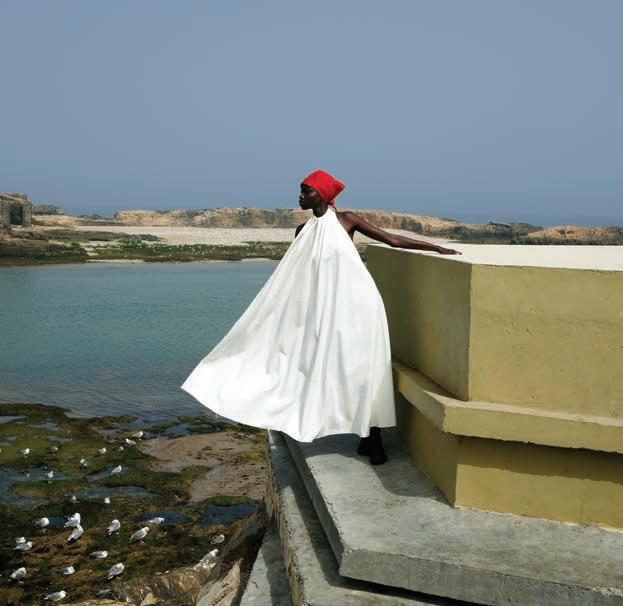
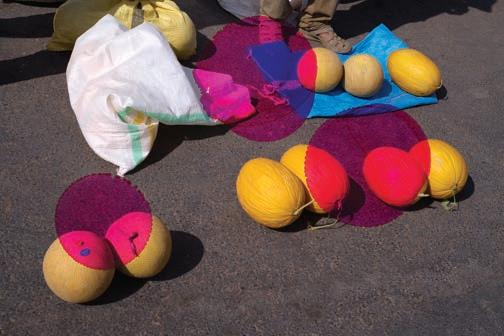
petal push
Melons for sale along the roadside in Sid L’Mokhtar, a small town known for its lively souk. Opposite: The Flatteur Ville, once a French colonial quarter, now home to artists’ ateliers. Prada dress, Zomer skirt and Celine shoes.
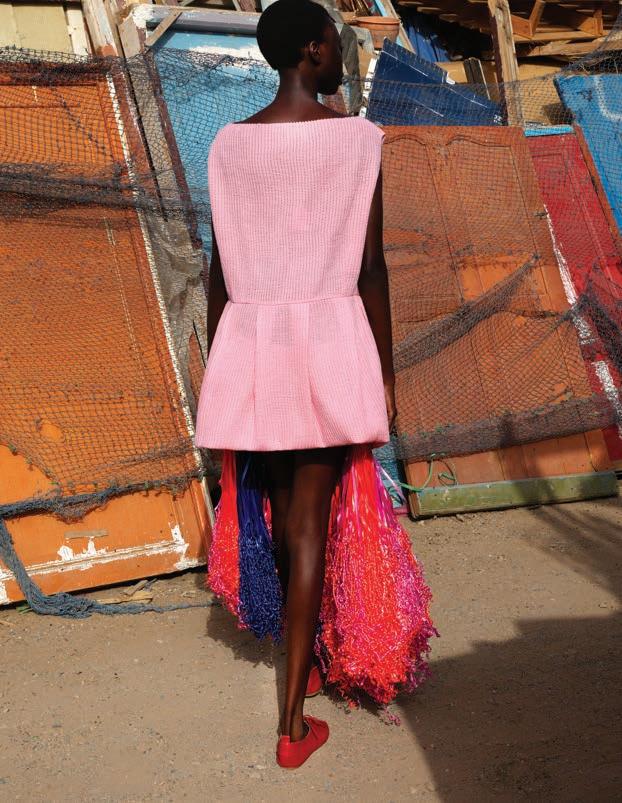


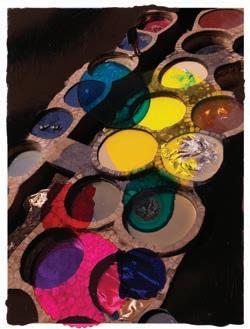
ray play
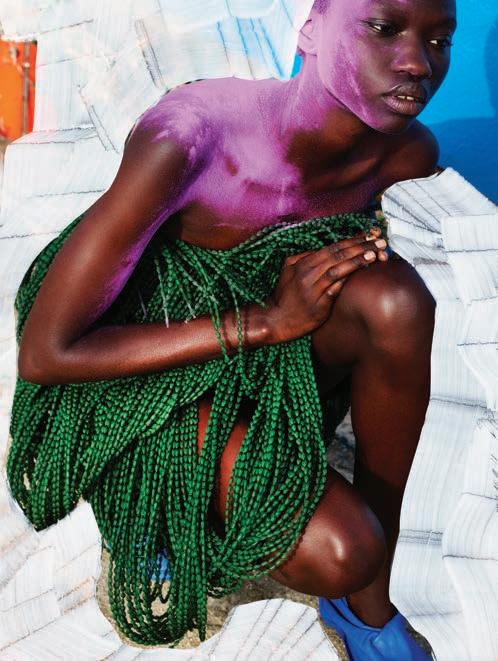
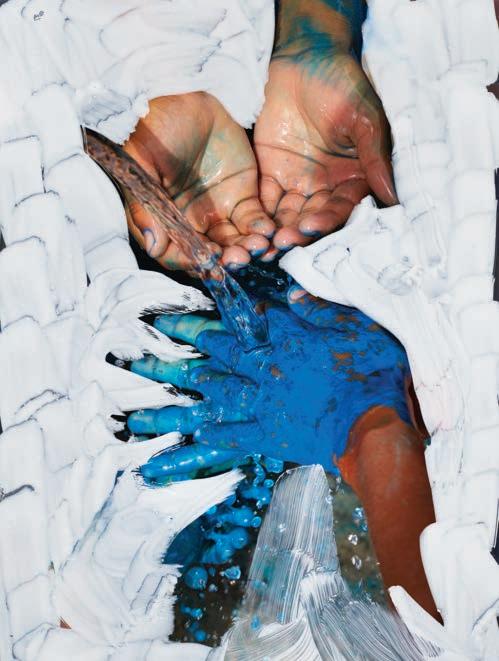
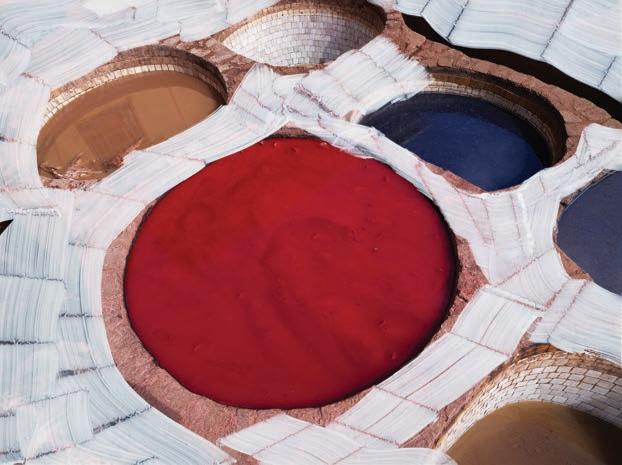
chromaticcrush
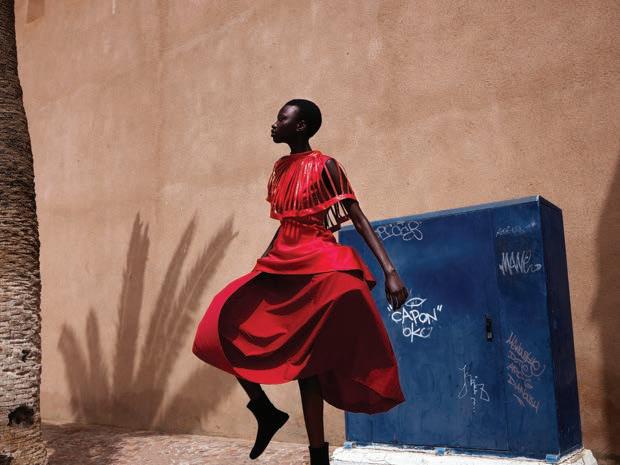
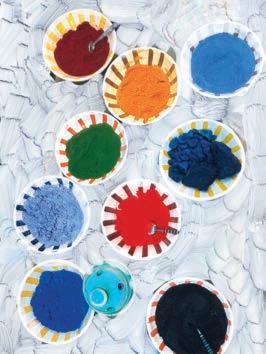
bold strokes
A variety of pigments, displayed in a shop in the ancient medina in Essaouira. Opposite: The ancient Sqala du Port d’ Essaouira, an 18th-century bastion once used to guard against European invasions. Calvin Klein 205W39 NYC by Raf Simons Collection dress from Pyrn Archives, Giorgio Armani jacket (worn around waist).

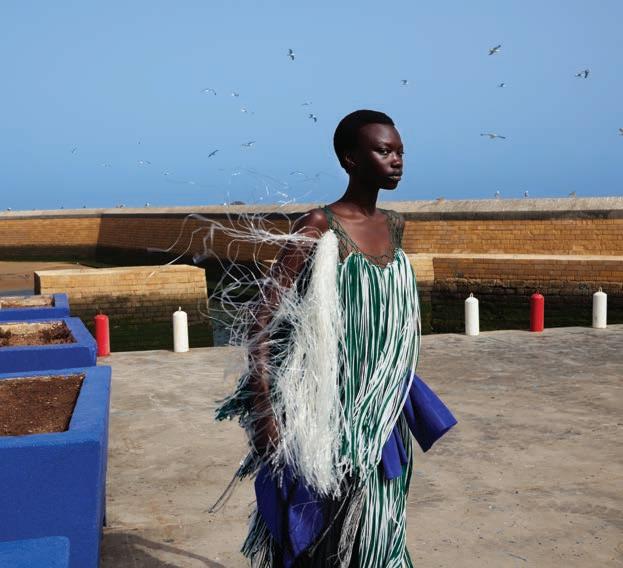
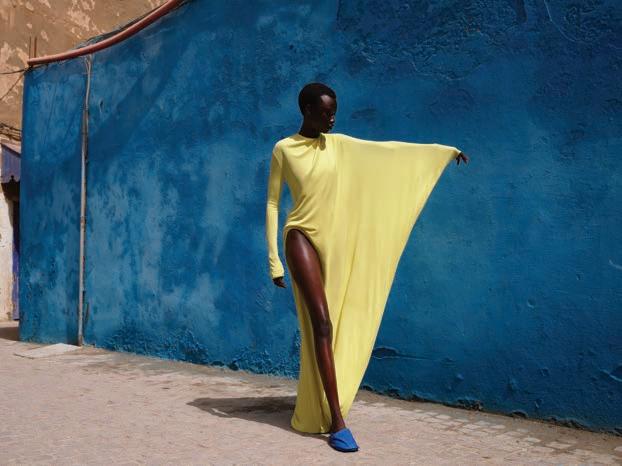
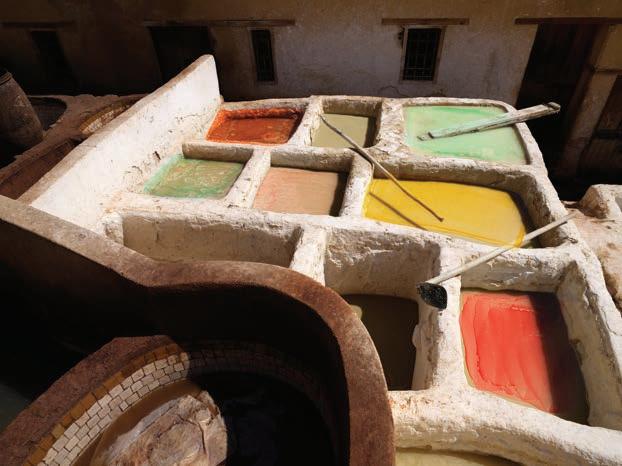
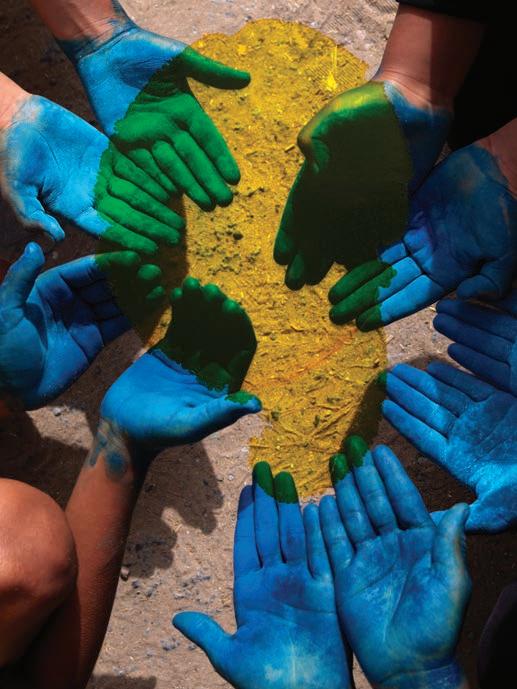
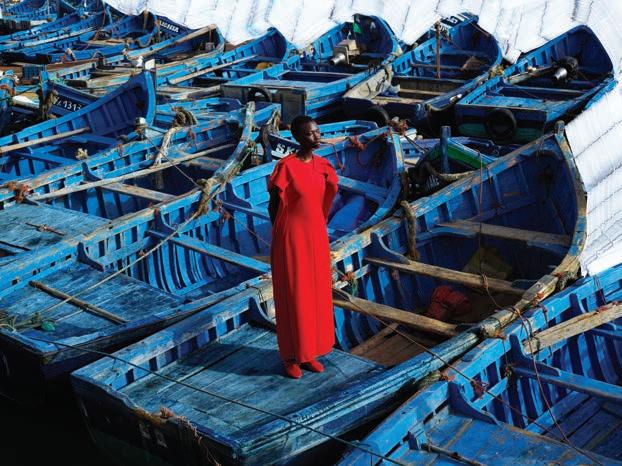
saturation point
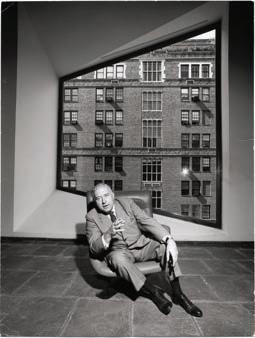
BY BARRY BERGDOLL
PHOTOGRAPHY BY STEFAN RUIZ
In November, Sotheby’s moves its New York headquarters into an architectural masterpiece, the building Marcel Breuer designed in the 1960s for the Whitney Museum—now meticulously restored by Herzog & de Meuron.


In the changing tides of the New York art world, the inverted ziggurat of the former Whitney Museum of American Art building has remained a stalwart presence. The enigmatic granite-clad monument has weathered the ebb tide of its architect Marcel Breuer’s reputation in the 1980s, the tsunami of controversial proposals for major transformations in 1985 and 2001 and then the uncertainty in the wake of the Whitney’s departure in 2014 for its new downtown digs. After a careful restoration by Swiss firm Herzog & de Meuron, the building at 945 Madison Avenue—recently given landmark status—begins a bright new chapter this fall as Sotheby’s new Manhattan headquarters. “When I walk through the space, I feel the proverbial ‘pentimenti’ of the exceptional works of artorexhibitionsthatpreviouslyadorned these walls,” says Lisa Dennison, Sotheby’s chairman, Americas, who served on the architectural selection committee. “We have seen how adaptable the building has been to many different styles and periods of art, especially during the residencies of the Met and the Frick.”
“It’s an iconic structure,” says Wim Walschap, senior partner at Herzog & de Meuron, who oversaw the restoration project. “And it stands as a rare example of brutalist architecture designed specifically for public use.” Breuer’s building will again draw the public in to view art, as it was designed to do, while standing as an artwork in its own right—a monument by its Bauhaus-trained creator to sculptural inventiveness.
When it first opened on September 27, 1966,Breuer’sbuildingstoodouteverybit as much as the nearby Solomon R. Guggenheim Museum, Frank Lloyd Wright’s upwardly expanding spiral completed a few years earlier. At first glance, it seems the very antithesis of the Bauhaus aesthetic, which preferred volumes renderedtransparentthroughmaterialssuch as steel, concrete and plate glass. Breuer himself had achieved early international success with designs of unprecedented lightness and transparency, most notably his tubular-steel chairs and projects for prefabricated houses. The question, then, is how Breuer evolved from a Bauhaus master into a champion of an architectural style dubbed the “New Brutalism”
Wim Walschap, senior partner at Herzog & de Meuron, who oversaw the restoration project.
Opposite: The building’s stairway, which provides city views at each turn.
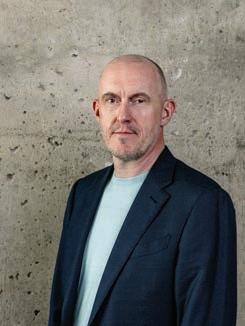
for its love of robust primal forms and frequent use of unadorned raw concrete (béton brut in French)?
Returning to Breuer’s first freestanding building, the Harnischmacher House (1932) in Wiesbaden, Germany, it’s clear it was an expression of visual lightness, one that reinterpreted interior and exterior through the use of large sheets of plate glass. It featured a steel frame that allowed Breuer to cantilever a porch out over the garden. A veritable showpiece of the modernist impulse,thehousemighteasilyhavebeen featured that same year in the epochal firstarchitectureexhibitionofNewYork’s Museum of Modern Art, which defined the term and characteristics of the “International Style.” Yet Breuer’s built andunbuiltprojectsofthenextfewyears, a period when he was urgently seeking a new base of operations in order to escape Hitler’s rise, portray an emerging sensibility in which natural materials enter into dialogue with industrial ones, contemporary techniques are collaged with traditional construction and the heritage of the Bauhaus takes on a new constructional logic. Soon, Breuer’s architectural language would shift dramatically.
From about 1933 to 1935, the Hungarian-born Breuer shuttled between
Zurich and Budapest, hoping that some opportunity might take root. In fall 1935, he followed his mentor Walter Gropius, László Moholy-Nagy and other Bauhaus figures to Britain. He remained there for only two years, but it was a fruitful, formative period. The Gane Pavilion in Bristol (1936) announced a wholly new sensibility with its complex collage of materials: plate-glass walls set in a frame of load-bearing, rustically cut stone; interiors clad in thin plywood sheets. A wall thatbeganinthegardencontinuedinside, connecting interior and exterior in a way that would become increasingly prominent in his work after he joined Gropius at Harvard in fall 1937.
In the U.S., Breuer focused on developing his ideas for prefabrication, now attunedtodevelopmentsinindustrialized wood. He and Gropius employed wood in structurally innovative ways, as seen in the designs for their own houses in Lincoln, Massachusetts, which face one another across expansive lawns. They attached clapboards vertically (rather than horizontally as was traditional) to the wood frames, laying them flush to maintain the crispness of Bauhaus volumetric composition, and then juxtaposed this with load-bearing chimney walls, made of white-painted brick for Gropius, ofrusticstoneforBreuer.Woodconstruc-
tion allowed cuts into the box to create interpenetrating spaces and patterns of shadow. Breuer began to imagine how he might extend his earlier Bauhaus period research into models for prefabricated transportable houses, suitable to facing the impending housing crisis of the postWorld War II era—although his proposal to create a house with a laminatedplywood frame over a truss-shaped frame, as light and yet as strong as an airplane wing, never advanced beyond study proposals.
In the end his response to the prevailing conservative, neocolonial taste of Levittown and similar models profferedinthepostwarerawastheexhibition “House in the Museum Garden” at the Museum of Modern Art in 1949, by which time he had relocated to New York. With its butterfly roof and “binuclear” plan—in which the bedrooms for parents and children are situated at opposite
ends of the home—Breuer’s concept was a radical alternative to the Cape Cod Colonial Revival.
Pragmatically,thehousewasreplicable by local builders from a set of drawings the architect could provide. Only a few copies are known, but the design brought Breuer some important new clients, notably Rufus and Leslie Stillman, who visited the MoMA house and contacted Breuer for a new house in Litchfield, Connecticut. Over the next few decades, Breuer’s office designed several more houses for the Stillmans, including a vacation cottage on Cape Cod. Stillman’s colleagues at the Torin Manufacturing Company became clients, and the company built factories to Breuer’s designs as it expanded around the world. Breuer was becoming a designer of a full range of modern buildings, but also an architect of growing networks.
Themostdaringofallhishousedesigns was built for his own family in the late
’40s in New Canaan, Connecticut, then a magnet suburb for the Harvard-trained modernist architects setting up in the New York market. Here, the system of using triple layers of plywood to form a strong envelope over a truss-like woodenstudboxframewascarriedtothe ultimate as Breuer cantilevered his house off a stone base and then, in turn, cantilevered a terrace balcony off the living room end. (The levitation was shortlived, as already during construction, the sagging terrace threatened collapse and had to be shored up by a stone wall.)
Breuer considered multi-ply plywood to be akin to concrete, so there is a continuity of experimentation between the New Canaan house and the great ’50s and ’60s buildings of hollowed-out concrete that he would cantilever over the landscape— like the IBM headquarters at La Gaude, France—or the city, as for the Whitney.
Breuer’s career changed abruptly in 1952-53 with the sudden success in two
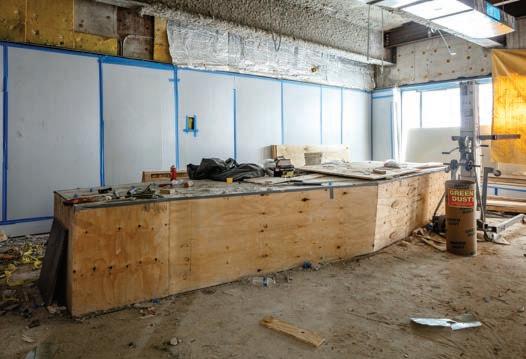
completely unexpected undertakings for large-scale institutional buildings: UNESCOinParisandSt.John’sAbbeyin Minnesota. These commissions shifted his practice forever, requiring a new life of air travel, more associates and consulting engineers to support his search for new structural possibilities. The quest for sculpturally expressive monumental forms that could embrace serial normality and the heroics of modern engineering became the major theme of Breuer’sworkforthenextthreedecades.
In Paris, the powerful canted forms of the UNESCO Conference Building, built with plaited concrete, played off the glazed curtain wall of the Y-shaped Secretariat, which was raised on muscular concrete pilotis. The same could be said of the contrast between the similarly formed Abbey Church, with its sculptural bell banner and the repetitive cells of the nearby monastery block and the student residence halls on campus.
“Buildings no longer rest on the ground,” Breuer explained in a 1963 lecture. “They are cantilevered from the ground up. The structure is no longer a pile—however ingenious and beautiful— it is very much like a tree.” He concluded by advocating for an architecture in which sculptural form and its space-making capabilities would lead the modern movement beyond its earlier obsession with new materials. True to his word, in hisuseofmarbleatSt.John’sortherichly patterned granite of the Whitney—his next headline-grabbing commission—he sought to bring modern architecture into a realm of symbolic expression that had been reserved for older styles. “Although not resting on lions or acanthus leaves,” he noted, “space itself is again sculpture into which one enters.”
Perhaps no building better exemplifies Breuer’s newfound aesthetic of “heavy lightness” than the Whitney. In
June1963,afteronlyeightyearsinabuilding designed for them by Philip Johnson on West 54th Street—on land donated by MoMA and adjacent to its own expanding campus—the Whitney’s trustees decided to get out from under their more famous neighbor (and occasional rival) and establish a new presence for American art on Manhattan’s Upper East Side, the heart of the postwar gallery scene. Selected over a host of well-known architects, including I.M. Pei, Louis Kahn and Johnson, Breuer quickly appreciated the challenges of the commission and, after a weekend at home in New Canaan, returned with his design for the inverted ziggurat. The museum would be clad in flame-treated granite and would loom out dramatically over the corner of Madison Avenue and East 75th Street. Without violating any building or zoning codes, Breuer took the famous setback skyscrapers of the 1920s and 1930s—as well as the whitebrick apartment houses then sprouting
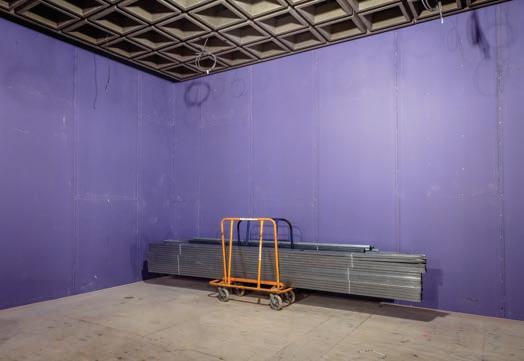
up everywhere on the East Side—and turned them upside down. His solution was decidedly singular but also clearly a piece of New York’s urban fabric.
“What should a museum look like, a museum in Manhattan?” Breuer began his presentation to the trustees in November 1963. “It is easier to say first what it should not look like. It should not look like a business or office building, nor should it look like a place of light entertainment. Its forms and its materials should have identity and weight… in the midst of the dynamic jungle of our colorful city. It should be an independent and self-relying unit exposed to history, and at the same time it should have a visual connection to the street, as it deems to be the housing for 20th-century art. It should transform the vitality of the street into the sincerity and profundity of art.”
To enter the building, one takes a sidewalk via a bridge, announced by a cantilevered canopy, under the overhang and into a lobby with a gridded ceiling of circular lighting fixtures. As much as his design resonated with the emerging minimalist scene in 1960s sculpture, Breuer was thinking largely in terms of the stakes of history and symbolism that had entered the internal critique of modernism with the debates on monumentality inthemid-1940s.“Today’sstructureinits most expressive form is hollow below and substantial on top—just the reverse of the pyramid. It represents a new epoch in the history of man, the realization of his oldest ambitions: the defeat of gravity,” Breuer told his friend Peter Blake in 1964. With exposed bush-hammered concrete fin walls to separate off his granite-faced, cantilevered sculpture, Breuer cut out the urban equivalent of the white box gallery so beloved by his contemporary minimalists and asserted the singularity of culture, protecting art from the nearby commercial world and conveying a sense of remove from the quotidian.
Working with the structural engineer Paul Weidlinger, Breuer lifted his cantilevered mass above a glazed, recessed ground floor—the world of the sidewalk and the sales counter on axis with the entrance—connected by a fixed-in-place drawbridge. He inserted great panes
of glass into the recessed stair tower, providing changing vistas of Madison Avenue with each switchback. These were the first in a series of staccato framed views that find their echo inside in the mysterious trapezoidal “eyelid” windows freely attached, like ornamental broaches, on the blocky exterior. To keep their immense planes of glass from conflicting with the galleries’ reliance on artificial light, the trapezoids angle outward, creating uncanny vignettes of the city while avoiding any capricious play of light in the inner sanctuary. Breuer thus created a building of deliberately contrasting experiences: a lobby based on a new ideal of flow and spatial excitement, in which architecture, large-scale public sculpture and the city converse, and then, above, inwardly focused gallery floors. The largest uninterrupted expanse and loftiest ceilings were reserved for the fourth-floor gallery: a full 118 feet of clear space before the installation of the movable system of panels. Here is the largest of Breuer’s trapezoidal windows, the only one on the Madison Avenue front, framing a view of New York as an unfinished work of urban art.
The building was a capstone of one of the most productive, sculptural and inventive moments of Breuer’s career, and an instant attraction. Perhaps cartoonist Alan Dunn captured the sense of charmed bewilderment best in The New Yorker: Two women walking by wonder aloud, “Why can’t someone design a museum that doesn’t have to be explained?” Indeed, Dunn would repeatedly poke fun at both the Whitney and the Guggenheim as the two heralded a period in which museum buildings wouldbecomemoreandmoredistinctive, a trend that continues today.
It might seem counterintuitive to have selected Herzog & de Meuron to restore both the exquisite material paletteandthecomplexinterplaybetween the bustling lobby and the contemplative galleries. Some of the most sculpturally and spatially exciting museum buildings of the last three decades have been the firm’s creations, from the Sammlung Goetz, opened in Munich in 1992, to the
four-year-old M+ in Hong Kong. They are, in all this work, architects of strong form and complex spatial section to rival Breuer. But as architects who restore, they have shown a broad range of aesthetic expression, from the late Victorian interiors of the Park Avenue Armory to the bluestone floors, egg-crate suspended ceiling and bush-hammered concrete that are Breuer’s signature at the Whitney. “It was one of the buildings I made a point to visit as a young architect,” says Herzog & de Meuron’s Walschap. “Even then I was surprised by how different it felt in context—its geometry and materiality, the composition of its windows and especially the sunken garden, which creates this unexpected piece of public space within the New York streetscape.” Theirs is a light touch in refreshing that material palette, already so well restored for the Metropolitan Museum’s temporary use of the building, adding primarily a new lighting scheme in the framework of the egg-crate ceiling to suit the much more diverse and rapidly changing display needs of auction exhibitions and showrooms on the three gallery floors. The other major new lighting is under the bridge’s canopy to create a livelier street presence for a building that will have much greater evening life, not least because of a new restaurant on the lower level by New York designers and restaurateurs Robin Standefer and Stephen Alesch, of the firm Roman and Williams. Perhapsmostexcitinginthisnewchapter of the building’s life is the animation that Sotheby’s will bring to the building and for which the architects have adapted it. The lobby will feature new displays, with Breuer’s beautiful benches cleverly adapted to display cases and the often-overlooked lofty space beyond the famous elevators given new life as a feature gallery. What the work promises is that Breuer’s building has neither looked so good, nor been so animated in its activity, since the days of the Whitney’s first use of its new architectural masterpiece in the 1960s. •
Partially adapted from Barry Bergdoll’s 2016 essay “Marcel Breuer: Bauhaus Tradition, Brutalist Invention” from the Metropolitan Museum Bulletin.
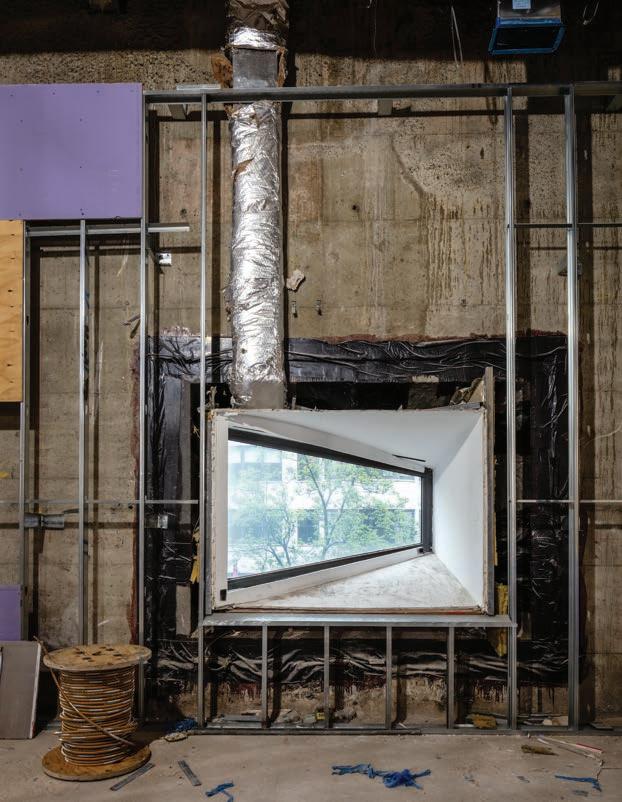
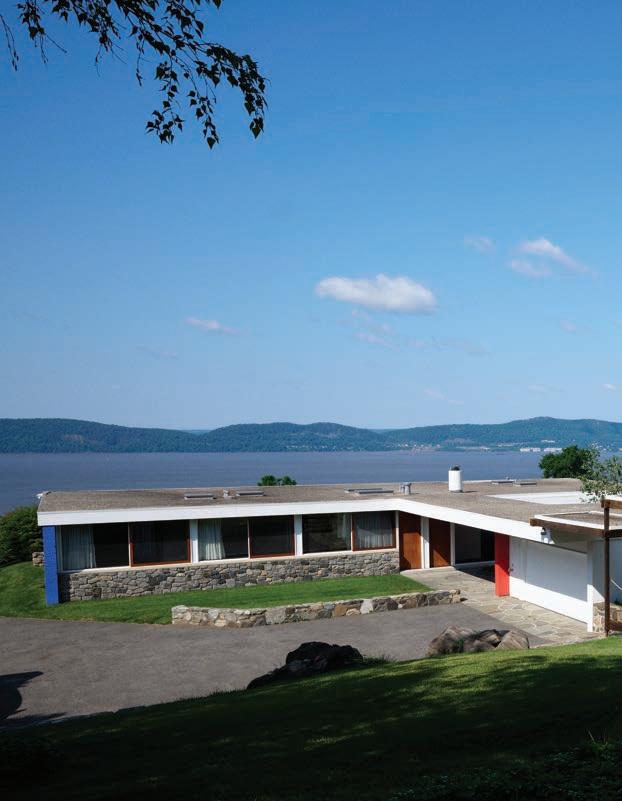
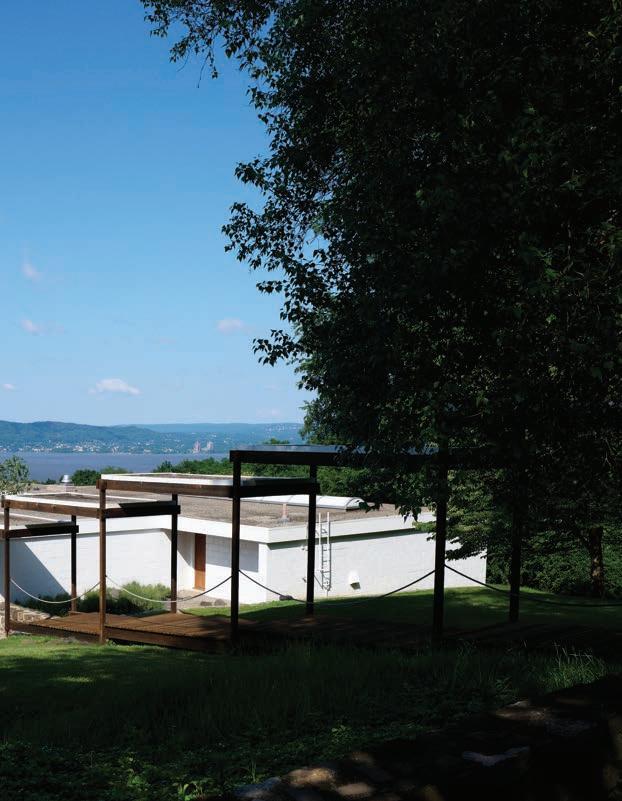
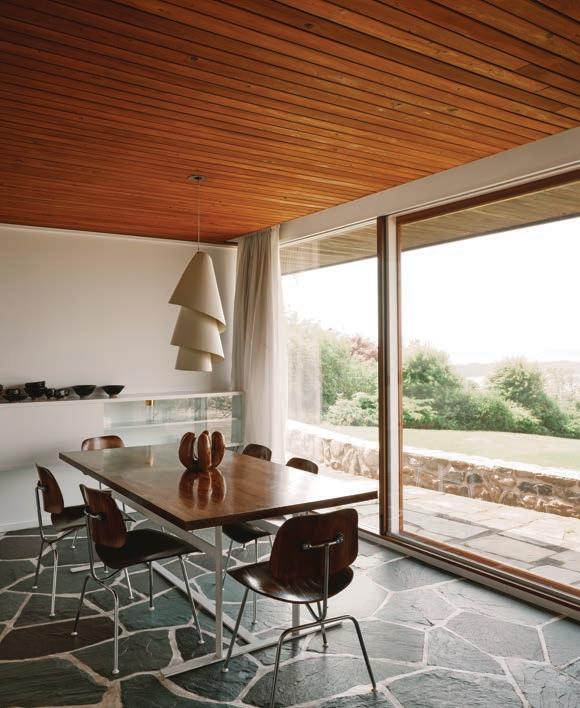

On a hazy Friday afternoon, fashion designer Nili Lotan’s Crotonon-Hudson kitchen smells of butter, sugar and toasting almonds. The galley-style space is just wide enough for Lotan, dressed in a denim shirt, barrel-leg jeans and flip-flops, to extract a baking sheet from the oven, dust it with powdered sugar and pile hot cookies onto a plate. She heads to the dining table, free of clutter like the rest of the compact house, which was designed in 1953 by Marcel Breuer. Over a batch of her mother’s almond crescents, Lotan points out some of the moves she’s come to understandasthearchitect’ssignatures— starting with the freestanding fireplace, companionably close to a built-in sofa, which rises from the bluestone floor and disappears into a slatted-cypress ceiling. It lends the room a weight that seems to anchor the house to its dramatic site, on a promontory high above the Hudson River,about40milesnorthofManhattan.
In 2020, when Lotan first came up to Croton in search of a weekend escape from her home in Tribeca, she had an instant reaction to the view. “It took me back to my childhood,” she recalls. “The water of the Mediterranean was right in front of me again.”
Lotan grew up in Israel, where her father developed real estate along the
coast north of Tel Aviv. As soon as he finished a new house, the family would move in and the older house would be sold. The process sharpened Lotan’s eye for architecture;forawhilesheconsideredmaking it a career. Instead, she turned to fashion.
For Breuer, who was born in the southernHungariancityofPécs,therewaslittle doubt about his future profession. From 1920, when he enrolled at the Bauhaus in Weimar, Germany, as an 18-year-old carpentry apprentice, until his death in New York in 1981, he designed a constant stream of buildings, from schools and convents to museums and research centers, and more than 100 houses, of which an estimated 60 were built. Most of them are clustered around the northeastern U.S. and are still occupied today.
Like many architects, Breuer saw houses as opportunities to work through new ideas at a manageable scale. But he also understood them as complex, highly social spaces. Speaking to a roomful of students in 1950, Breuer took issue with Le Corbusier’s provocative 1923 slogan: “a house is a machine for living in.” That might be true, countered the secondgeneration modernist, “but you don’t want to get greasy if you lean against the wall. You want to have something simpler, more elemental, more generous and more human than a machine.”
By the time Breuer was taking on major commissions such as the UNESCO Headquarters in Paris (1952-58, with Pier Luigi Nervi and Bernard Zehrfuss) and the Whitney Museum of American Art (196466), his formal and material language had already coalesced in his residential projects. For many scholars, they’re his most important contribution to architecture.
Mathias Remmele, co-curator of a 2003 Breuer retrospective at the Vitra Design Museum in Germany, praises the passion as well as the logic in Breuer’s work and identifies the architect’s need to express himself through construction as he might haveincarpentry.Thisisespeciallyvisible in his houses. Lotan’s, while neither as spatially inventive as the multi-level residencesBreuerdesignedforhimselfnor as theatrical as his linear compositions, has the self-contained intimacy of a cottage—some feat, considering it has four bedrooms and two separate entrances. (A formal entry leads into the livingroomfoyer;aservicedoorheadsinto the kitchen. Winking at social convention, Breuer placed the two entrances side by side.) Behind the house and up a gentle slope is a one-bedroom guest house with its own kitchen and living area.
Lotan and her second husband, the musician David Broza, use their Croton retreat as a place to gather friends,
spend time with their adult children and decompress from city life. “It’s been a godsend,” she says. Since moving to New York 45 years ago, she’s been working without a stop.
“It took a moment, but once I got my first job I took off,” Lotan says of her progressthroughthedesignstudiosofLiz Claiborne, Adrienne Vittadini, Nautica and Ralph Lauren, whose namesake once told her she had “immaculate taste.” At 40, with three young children and a marriage that was coming to its natural end, Lotan decided it was time to go into business for herself. She invested $25,000 and produced a six-piece collection; a few years later, when Vogue rated her button-down in Italian cotton poplin the best shirt of the 2006 fall season, the brand’s sales soared.
As the company’s CEO and head of its small design team, Lotan runs a tight operation. She’s built her brand around a nucleus of sophisticated, well-conceived basics that get minor adjustments each season but never go out of style. “You design a 120-piece collection, but at the end of the day there are five great pieces that drive business, the ones people wear,” she says, pointing to Ralph Lauren’s polo shirt as proof of concept.
“So I asked myself, why do I need 120? I’ll design the five. At the end of the day, you want to look stylish and cool. You don’t need all those clothes.” You might not, but someone clearly does—in 2022, Nili Lotan hit $100 million in annual sales.
Commissioning marcel Breuer to design the house in Croton was the idea of another fashion self-starter, Vera Neumann. The Connecticut-born daughter of Ukrainian immigrants, Neumann studied at the Cooper Union in New York and built a thriving graphic textiles business with her Austrian-born husband, George. Tablecloths, dish towels, napkins, fabrics by the yard: Vera made them all, hallmarked with a ladybug and her boldly inked signature. Her breakthrough came in 1947, when the couple scored some military-surplus parachute silk and adapted her designs to fashion scarves, which became an instant hit. The Neumanns were able to move out of the city and hire their friend Breuer to make them a house. Before long, its crisp white rooms teemed with children, pets, houseplants, folk art—and painting and sculpture by their friends, among them Max Bill, Josef Albers and Ben Shahn. Alexander Calder, a member of the Neu-
manns’ left-leaning social circle, often showed up for dinner with a gouache tucked under one arm or a piece of jewelry as a gift for Vera. When he surprised herononevisitwithastabile(“TheSunat Croton,” 1961, now in the collection of the Israel Museum), he went the extra mile of siting the VW-sized sculpture in the middle of the couple’s front lawn.
Scarves proved to be much better business than even the Neumanns could have imagined. By the early 1970s, the VeraCompanieswerepullinginmorethan $100 million annually—in pre-inflation dollars—and Vera asked Breuer to build her a wing with an indoor swimming pool. Eventually, after falling a few times on the unforgiving stone floors, she sold the property to Patricia Pastor, a former fashioncolleague,andherhusband,Barry Friedman, the art and design dealer. “Vera appreciated that we appreciated it,” Friedman recalls.
On one of their early visits to Croton, Pastor remembers seeing a gargantuan Calder necklace pinned to a length of burlap on Vera’s dining room wall, a styling trick Peggy Guggenheim had used in Venice with her own Calder jewelry collection. Opening a drawer, the petite designer pulled out a butterfly-
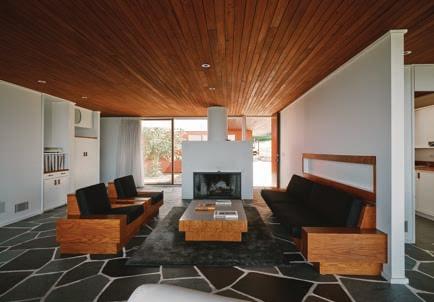


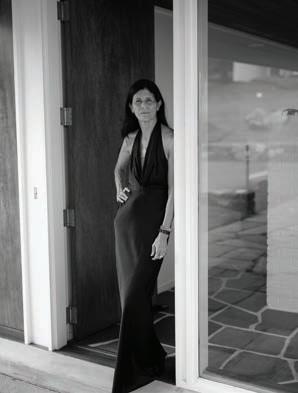
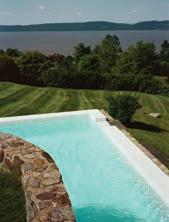
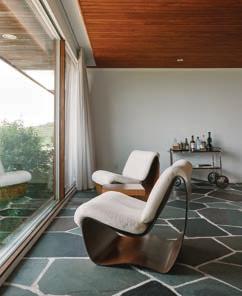
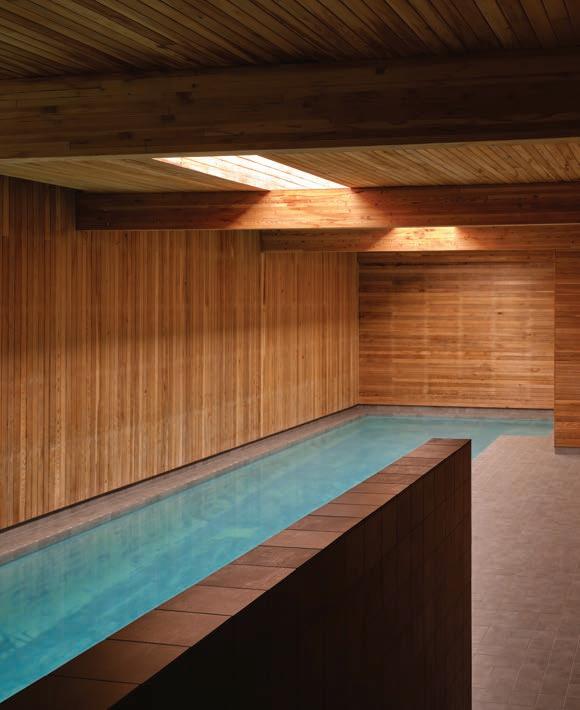

shaped Calder brooch as big as a medieval breastplate. “Vera told us: ‘Most of the time I just use it as a trivet,’” Pastor says. “What a scream! But that was so Breuer, when you think about it—his houses were not precious, he was not precious. It was an incredibly comfortable house to live in and maintain. Vera was there for 32 years, and we were there for 32 more.”
Before Lotan entered the picture, the property was briefly owned by serial Breuer restorationists Ken Sena and Joseph Mazzaferro. They arrived just in time to replace rattling doors and windows with thermal-pane glass and repair the radiant heating, numbering each of the flagstones before prying them up from the floor so that they could be returned to exactly the same position. Lotan bought the house furnished so that she could move in right away, picking up a spiral-shaped pendant light by Man Ray from Edition MAT and a pair of loop chairs, which she is especially fond of.
She’s been settling in gradually, a process that so far has meant having lots of friends over, cooking her way through her mother’s Hebrew recipe book and revitalizing the gardens. Breuer rarely worked with landscape designers,
preferringtopositionhishousesinrelation to their unimproved sites. But here he took thejobonpersonally,designingseverallow stone walls that snake around the building and prop up a cantilevered wall here or define a terrace there. To construct them, he hired Italian masons who had come to Croton in the 1890s to work on the New Croton Dam. Breuer was so pleased with theprojectthatasiterenderingappearson the cover of his 1955 monograph, “Sun and Shadow: The Philosophy of an Architect.”
To Lotan’s eye, the fluid stone walls create “a more poetic situation” for the house. “[Breuer] thought about them as part of the plan—he didn’t just build the house and then say, OK, what’s going to be on the outside?” Standing on the terrace, she gestures to a place where the walls come together to define the edges of a flag-shaped swimming pool. “Here, you are completely transformed,” she marvels. “Here, you are in Greece.”
Lotan’s own work allows her to identify closely with the architect’s intentions. “Breuer was thinking so much about the people who live here, I can tell,” she says. “You can design clothes because you like to design clothes, but then you really don’t think about the woman who’s going to wear them—how she’s going to feel in them. That’s all I think about. I try on
everything. I think Breuer had the same thing. He wanted the people who live here to feel good, too.”
It’s hard, even for Lotan, a woman who knows her way around a knotty design problem, to understand the compulsion some people have to alter a Breuer house. As far as she’s concerned, even her sliver of a kitchen is exactly the right size. Broza is perfectly happy grilling his steaks outdoors. And though she’s making plans to update some of the furniture, she’s in no hurry to get that done. Lotan finds the house a success in the same way that a white cotton shirt can be a success—because it’s well-thought out and well-made. For her, that’s enough.
Introducing art has been the biggest challenge,sheadmits.InNeumann’stime, the walls were cluttered with jubilant color. Lotan is aiming for something completely different, and she’s begun making studio visits to a few painters she admires, including, last spring, to Michal Rovner in Tel Aviv.
Lotan has also been thinking about the Calder stabile that once stood in Vera’s front yard. Somehow it seemed both joyful and elemental, of Breuer’s time and immeasurably beyond. “Which is something that would be my dream to bring back,” she says, smiling. •


The standouts from the latest high jewelry collections exude an easy elegance with flashes of rich color and debonair sparkle. Sotheby’s jewelry expert Frank Everett chooses some favorites.
azurething

Vancleefarpels.com
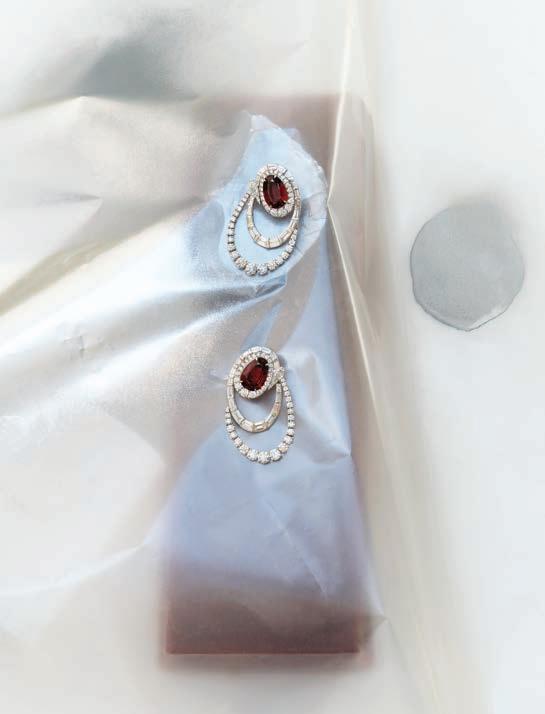
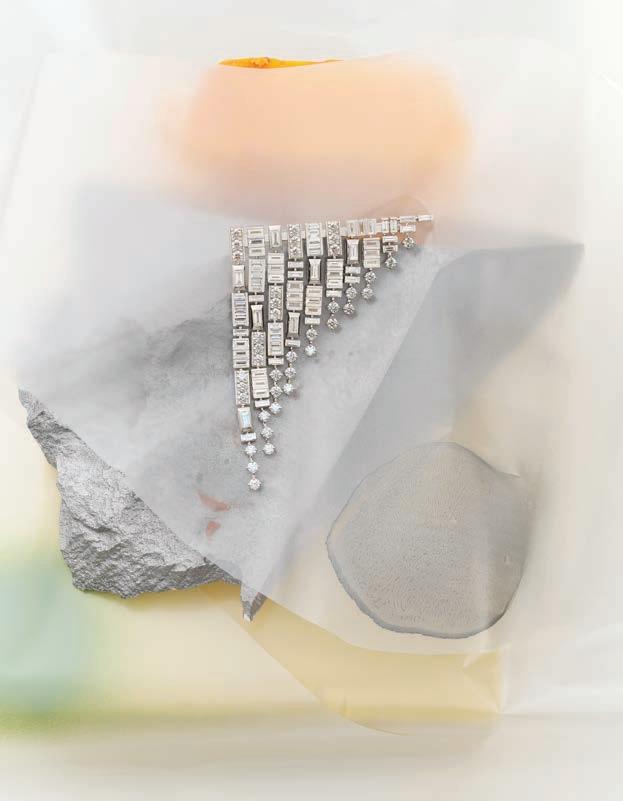
shimmer time
Messika Terres d’Instinct
Collection
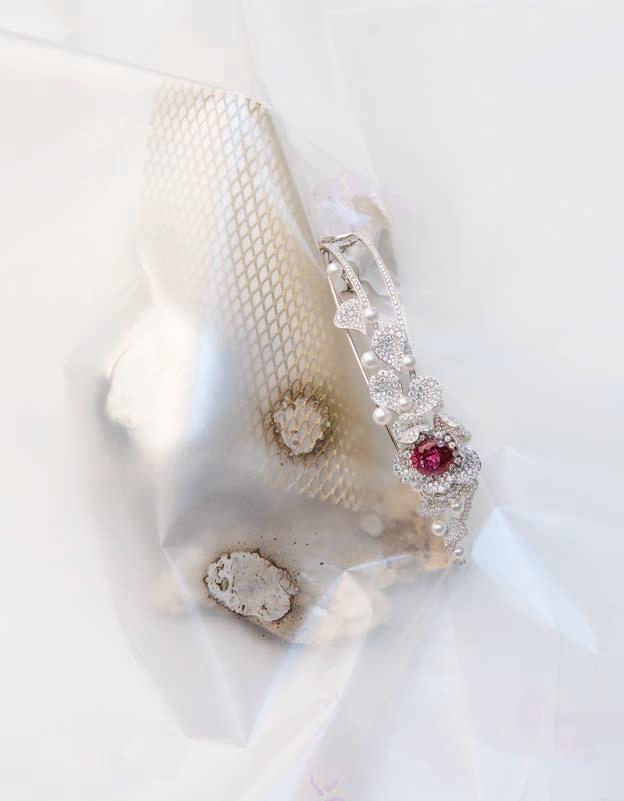
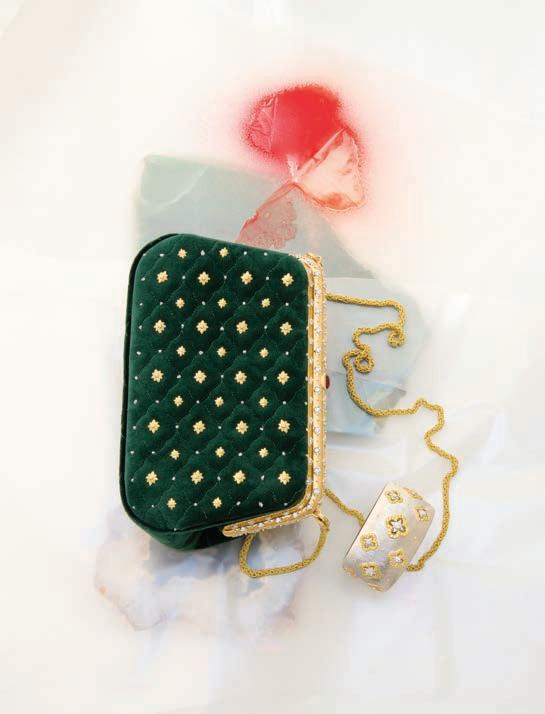
power of the purse
Buccellati green matelassé evening bag with a yellow-gold clasp punctuated by white gold set with diamonds and a bezel “rigato” engraved in yellow gold set with a cabochon rubellite; Cuff Bracelet 3.5 in white and yellow gold set with diamonds. Buccellati.com
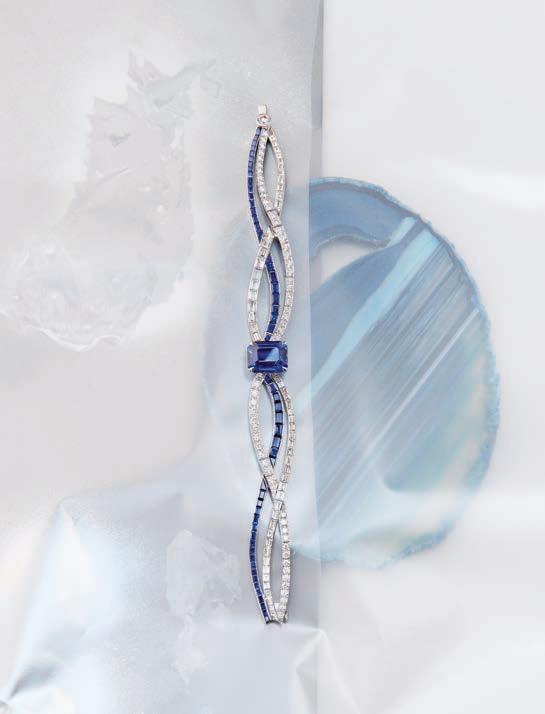
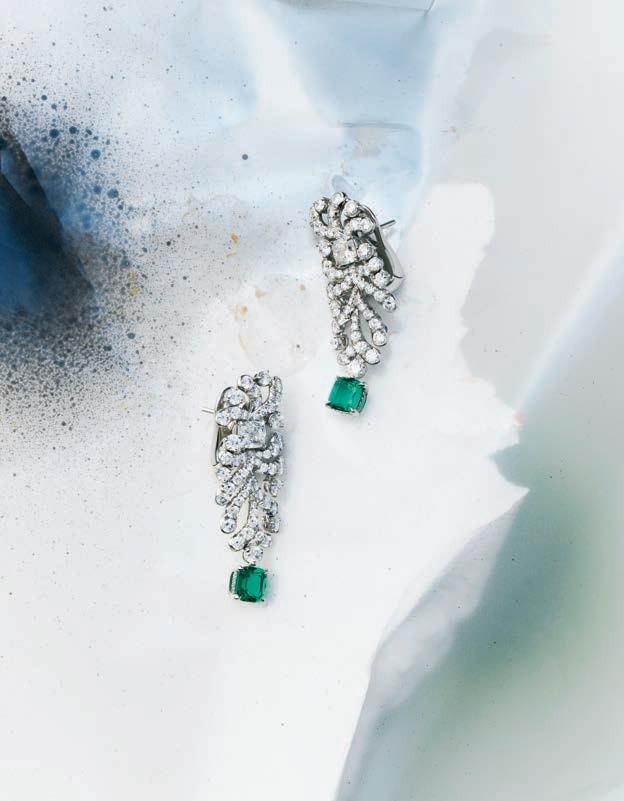
emeraldcity
Tiffany & Co. Ocean Flora emerald earrings in platinum with unenhanced emeralds and diamonds from Tiffany & Co.’s 2025 Blue Book Collection. Tiffany.com
All prices on request.
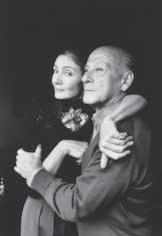
BY JAMES HALDANE PHOTOGRAPHY BY BARNEY HINDLE
The London apartment of legendary collector Pauline Karpidas—an inner sanctum within her constellation of art-filled homes— holds a singular collection of surrealist icons, 20thcentury masterworks and creations by the foremost contemporary designers. This month, her storied treasures head to auction at Sotheby’s London, opening the doors to her visionary world.

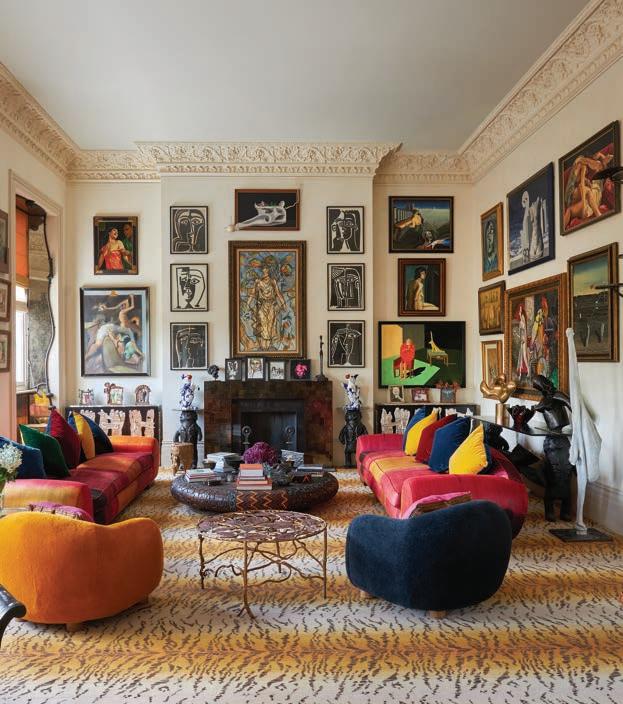
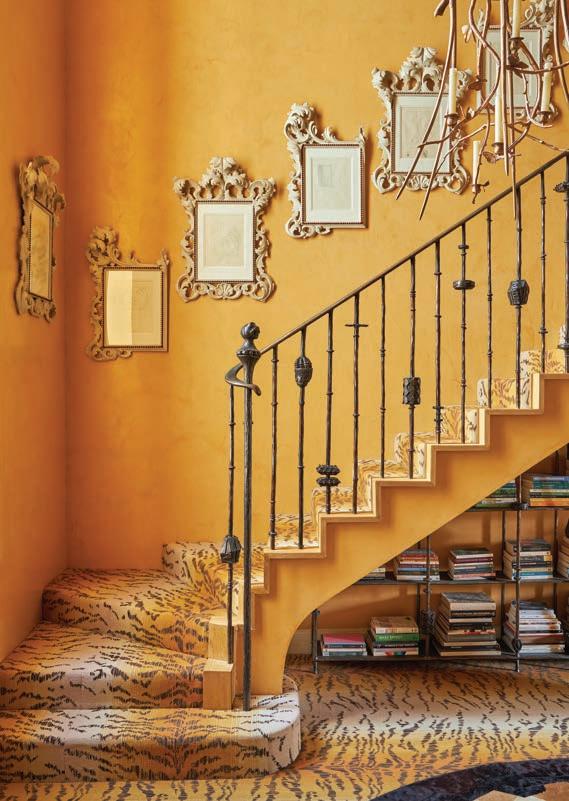
It began, as these things often do, at a dinner party in Paris. One evening in the late 1980s, a gregarious and almost certainly couture-clad Pauline Karpidas approached Swiss-born designer Mattia Bonetti. She had seen his work before— celebrated for lending chic interiors a sense of dreamlike fantasy—and asked their host, a mutual friend, to orchestrate the introduction in hopes of commissioning a piece. The two chatted, and it was agreed that Bonetti, together with his collaborator, French furniture designer Élisabeth Garouste, would create a leopard rug for Karpidas’ London townhouse bedroom.
The English collector and philanthropist, now 82, was thrilled with the result: a jungle cat rendered in wool, nearly lifesize, and not splayed like a trophy kill but “very much alive and immersed in nature,” Bonettirecalls.“Thedesignwasverygreen, with leopard colors, of course.” The piece evoked the daring animal-print interiors of the 1930s—Jean-Michel Frank, perhaps, or Syrie Maugham—both of whom had designed for Elsa Schiaparelli. Well established in her collecting career, Karpidas had already discovered an instinctive affinity with tastemakers of the past.
The commission proved consequential, marking not only the beginning of a decades-long collaboration with Bonetti but also, perhaps, the creative kernel of Karpidas’ next London home, a jewel-box apartment in The Lancasters—an elegant, mid-19th-century stuccoed terrace overlooking Hyde Park. Together with a small group of collaborators, they would fashion a series of rich interiors to be filled with an array of creations and characters—artists, dealers and fellow provocateurs—a company befitting one of the 20th century’s last true grand dames.
As she often reminds people with pride, Karpidas’ life began in markedly different surroundings. Born Pauline Parry in 1943 to a working-class family in Manchester, she enrolled in secretarial school at 15 and became a personal assistant by 18. By 19, she had reinvented herselfasamodelanddecampedtoLondon. In her early twenties, she moved again, this time to Athens, where she opened a fashion boutique—fittingly named My Fair Lady—in the bustling port of Piraeus. Even then, the seeds of a curatorial eye were taking root.
It was in Athens that she met her late husband, Constantinos “Dinos” Karpidas, an engineer and businessman from a wealthy family of Greek industrialists. Captivated by Pauline, and with their son Panos on the way, he left his previous marriage to be with her. Dinos already had a collector’s eye, favoring modernists like Renoir and Picasso, but it was another fateful introduction that transformed their collecting path.
At a cocktail party in 1973, he met the legendary dealer Alexander Iolas— aformerballetdancerturnedvisionarygallerist who brought European surrealism to the US and mentored a circle of influential collectors, including Dominique de Menil, heiress to the Schlumberger oil drilling equipment fortune and the founder of the eponymous Houston collection.
Iolas championed artists such as Ernst, Magritte and Warhol, and with galleries in Rome, Athens, Milan, New York and beyond, had debuted a globalized business model, akin to Larry Gagosian—a dealer who lay in the Karpidases’ future—before Gagosian himself. Though Iolas was semi-retired by the time he met the Karpidases, Pauline persuaded him to guide a collecting journey she wished to embark upon under two conditions: a significant financial commitment—with funds put in escrow—and even greater emotional and intellectual investment. “I am not an art dealer just to sell paintings,” Iolas once told art historian Maurice Rheims. “My collectors are friends—friends that I make fallinlovewithwhatIdo,withwhatIsee.”
This was precisely how Karpidas approached collecting—from a place of passion and personal connection. Iolas’ mentorship gave her a deep understanding of provenance and artistic lineage. In the early 1980s, under his tutelage, she began to buy into the surrealist canon at a string of pivotal single-owner auctions at Sotheby’s and Christie’s: the Hélène Anavi sale, the René Magritte studio sale, and, later, the Andy Warhol estate auction.
“She was there at the right time,” says Oliver Barker, chairman of Sotheby’s Europe and an advisor to Karpidas in recentyears.Manyofherartistshavesince hadcommercialandartisticreevaluations, but when she was buying them, they had yet to be in vogue with collectors. “That’s certainly true of Picabia and a work like ‘DeuxAmies’ofaround1942,”saysBarker. “These images—essentially sourced from
erotic magazines—are prototypes for Pop Art, and they’ve been hugely influential, particularly on artists like Jeff Koons.”
Further key purchases were made at the 1981 sale of the collection assembled by Edward James, an aristocratic British poet and patron, who had supported the surrealist group and indeed made his own contribution in the form of Las Pozas (The Pools), a sculpture garden of dreamlike structures in Mexico’s Sierra Gorda mountains.
At Monkton House in West Sussex, England, James remade his Edward Lutyens-designed edifice into a surrealist folly with drainpipes shaped like overgrown bamboo and trompe-l’oeil silk-effect banners painted beneath the windows. Inside, according to lore, James had the wet footprints of his dancer wife, Tilly Losch, woven into the carpet. Such details captivated Karpidas, who sees collecting as world-building in its highest form.
As the 1990s progressed, Karpidas deepened her network. She enlisted interior designers Jacques Grange and Francis Sultana and design gallerist David Gill to work on several homes, including a retreat on Hydra, the Greek island where she would later set up an exhibition space. Bonetti, too, remained a close collaborator when it came to the London home, alongside French designers André Dubreuil and François-Xavier and Claude Lalanne—the latter of whom would influence Karpidas in other realms too, including fashion and jewelry.
Her bon vivant style belied a fierce intellect and the stipulations of her education from Iolas, who died in 1987, have never left her. At The Lancasters, a towering bookshelf designed by Bonetti is filled with tomes on art theory and psychology. “She’s read every one,” says Barker, “and as a result of immersing herself in the surrealist and Jungian philosophy—which has always been one of her great interests and passions—came this interplay with the contemporary. She’s always had a finger on the zeitgeist.”
Having graduated from Iolas, as the dealer himself proudly acknowledged, Karpidas transitioned to working closely with Gagosian and Per Skarstedt in New York and developed a connection with London gallerist Anthony d’Offay.
“Pauline was the Holy Grail of clients at the d’Offay Gallery,” recalls gallerist Sadie Coles, who worked under d’Offay before starting her own outfit in 1997—a move Karpidas immediately championed. “On the opening day, Pauline was one of the first people through the door—and bought something right out of that first show.”
Like Bonetti, Coles was to learn that Karpidas had plans for her. “She wanted my help in a journey into younger artists.” The mission found expression in the Summer Workshops, a program Karpidas hosted at her Hydra compound every year from1997to2021,launchedeachtimewith a weekend gathering of art-world insiders and new talent. “Each exhibition was a show of the new works she had an interest in or had acquired for the collection.”
The open-minded nature of the program is mirrored in the range of works that will be offered at the collection auction, spanning antiquities to works from the 2010s by the likes of sculptor Rebecca Warren.
Barker puts it succinctly: “She’s never been somebody who’s bought for investment. She’s solely engaged with the artists and the quality of the work, which is why
she’s got such extraordinary depth of works by George Condo, Richard Prince, Christopher Wool, Grayson Perry, Cindy Sherman... She’s collected them through thick and thin.”
Pauline’s contemporary acquisitions did not, for the most part, settle in London—instead staying in Greece or heading to the Karpidas Family Foundation in Dallas, Texas—but their makers would visit. “When I had an exhibition in London with an artist, particularly one not from London, I would take them for a glass of champagne at Pauline’s apartment,” says Coles. Karpidas would give a complete tour and the reactions were unforgettable. Urs Fischer was speechless before the suite of Picasso prints from the Edward James collection. Laura Owens pressed her nose against a Dalí. “It was a rite of passage,” recalls Coles.
There has never been a hierarchy to Karpidas’ installation style. “That’s what made it so remarkable,” says Barker. “It was about living with the best and mixing it cheek by jowl. To have, in a single room, works by Yves Tanguy, André Mas-
son, Dalí and Carrington—collections like this simply don’t exist anymore.” It looked effortless, but of course it wasn’t. Barker recalls Pauline’s response when he asked her to reflect on the process of assembling her collection. “I feel I’ve just been a curator,” she mused. “It’s been a long journey—it’s been a career and an education.”
This auction, then, is not a conclusion, but a punctuation mark. Karpidas has long supported institutions from Tate Modern and the New Museum in New York, where she helped fund an education center. But her true legacy lies in the artists she has championed—and the unapologetic, irresistible boldness with which she’s done so.
Pauline is someone who recognizes potentialandrefusestoletitgotowaste,in herself or in others. “She’s like an Exocet,” says Coles, “with an incredible instinct that directs her to connect with work that is meaningful to her.” Pausing, Coles reflects: “She’s a ringleader—in a very delicate package.” •
“Pauline Karpidas: The London Collection” will be on public exhibition at Sotheby’s London from September 8-16, ahead of auctions from September 17-19.


Clockwise from right: A Hellenistic marble head of a youth—a link to Karpidas’ love of Greece; one salon wall showcasing paintings by Pablo Picasso, René Magritte, Francis Picabia, Yves Tanguy, André Masson, Leonora Carrington and Salvator Dalí. The Tanguy, “Paysage au Nuage Rouge,” was bought from the sale of the William N. Copley Collection, then the largest private assemblage of surrealist art in American hands, at Sotheby’s Parke Bernet in 1979; a guest bedroom, midway between cubist and curvaceous, with faux lapis lazuli details; a throne in a guest bedroom; Pauline’s bedroom, featuring a unique bronze bed frame designed by Claude Lalanne, trompe l’oeil crocodile skin side table by Bonetti and André Dubreuil lamp. Opposite: The nucleus of Karpidas’ London gatherings, featuring a bookcase, dining chairs, mirrored overdoors and window reveals created by Bonetti.

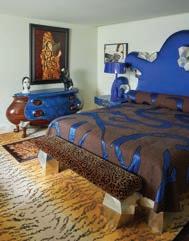


In an excerpt from her new book, “Art
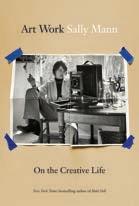
Work: On the Creative Life,” photographer Sally Mann discusses the very real implications of censorship on her career, her family and her life.
My work had Made a brief appearance on the evolving Culture War battlefield maps but had thus far escaped even the most minor skirmish. I was definitely not jonesing for a fight after having watched what happened to Robert Mapplethorpe, Jock Sturges, Andres Serrano and a few other lesser combatants, and when I walked into the gallery and saw that Edwynn had just snoot-cocked the selfappointed cultural guardians, I quailed. There, smack in the middle of his main wall, he had hung an image [I had] taken thatsameyearcalled“TheThreeGraces,” a guaranteed gut-flutterer but illegal as hell. At least in Ohio, which was still reeling from the Mapplethorpe trial and busily tightening up the state obscenity laws. Even if it was flying in a plane over Ohio. Or flying anywhere; illegal to ship, as I recall, although the exact legal threat is no longer clear to me. So how odd is it thatafteralltheriskypicturesIhadtaken, thisjoyousartrip-offofmydaughtersand me, hands entwined, peeing in front of an ocean backdrop, was the one that was going to get me thrown in the pokey, once and for all.
Any art lover will recognize the three Graces, the often-painted mythological figures we were portraying, representing the civilizing influence on humanity of joy, elegance and beauty. Our image was one of many in which we restaged works of art toward the end of the “Family Pictures” series. It was taken on the island of Bequia, the largest island in the Grenadines, in our last summer of idyllic, uncomplicated family life; in fact, it was the last extended vacation we ever really took all together. This great travel gift came to us as an artist’s retreat from a generous benefactor, and there has been nothing like it since— without doubt, the happiest months of my life.
In planning the photograph, we followed the long-established pictorial tradition, two Graces facing forward, one facing back, then we stole (yes, flat-out stole) another idea from [photographer] Emmet Gowin, that of a standing woman peeing. Having chugged down oceanic amounts of water we were guaranteed to have enough pee for the one-chance-only, perfectly
synchronized image capture on the 8 × 10 film. With youthfully obedient bladders, we let go at the count of three and somebody (who will remain nameless since I suppose they could be legally liable) took the picture.
The artist Sam Messer was also on the island that summer and it couldn’t have been he whose finger tripped the illegal shutter because he was busily sketching the scene

and he later joined me in indictable misdemeanor-hood by taking his own version there the next year,
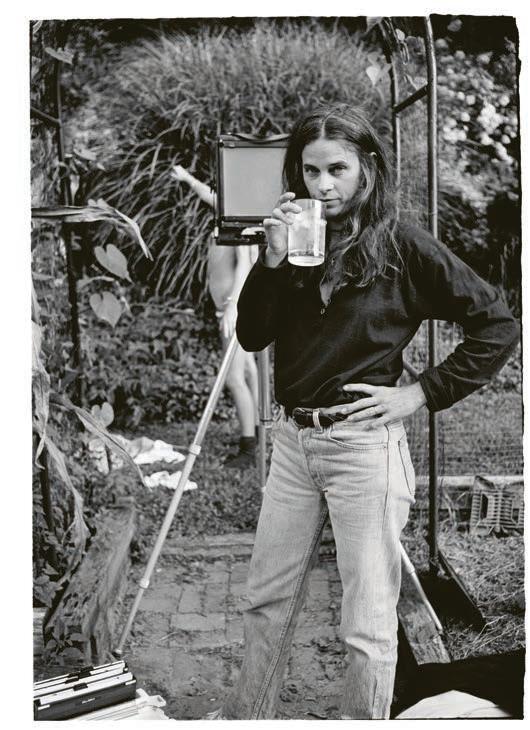
I am sorry for the aggravation this has caused the Virginia Museum. I’m sorry for Governor Gilmore whose imagination must have run wild conjuring up the images described in the anonymous letter, and I’m sorry for my family, but most of all I’m sorry for the other artists working in a sincere and honest way, for whom this threat must be chilling.
I want a healthy dialogue between the arts, the museums and the people of the state. Art, at its best, can provoke that dialogue, and, yes, Governor Gilmore, “challengethevaluesofoursociety”—butin a positive and enlightened way. I sincerely hope that the inadvertent dialogue my slide show provoked will not diminish both the governor’s office and the artists of this state but will elevate both.
You might note that I am not reproducing “The Three Graces” here. I suppose I amstillayellow-belliedcoward,likesome sly, cowlicked Mark Twain character who taunts another to jump off the cliff into the water but doesn’t do it himself. Here I am telling you to jump in, be brave, put your work out there, take chances, you’ll regret it otherwise. Yes. Do those things. And yes, I do. Regret it, I mean: I probably should have left the print on the wall. But. The note on the pillow.
Self censorship is one thing, always vexing and fraught. But uninvited, outside censorship is another thing altogether; it is to editing as radical tree-pollarding is to the painstaking pruning of a bonsai. And perhaps ultimately so damaging to your integrity that you will fail like those suburban Bradford pears, cropped down to their core, which struggle for years to send up trifling shoots from their stumpy, amputated limbs. You will have to navigate your own waythroughcomplexmomentslikethese.
As an artist, you have an obligation to the viewer to offer up a different sensibility (why otherwise would they bother to explore yours?), to call their closely held belief systems into question (not gratuitously and, to whatever extent you can, with respect and a lagniappe of beauty) and to challenge and subvert. The more effective you are at this, the more agitation, possibly even anger, you may cause. My dear friend, the novelist and critic Jim Lewis, wrote about the risk and importance of offending the viewer in a letter to
a fellow critic, Jerry Saltz. In it, he urges us to push harder, even if people hate our work, suggesting that if nobody hates it, it might not even be art. A great admirer of [writer] Samuel Johnson, Lewis bolsters hisconceptwiththiswinningJohnsonian dropshot:“Itisadvantageoustoanauthor that his book should be attacked as well as praised. Fame is a shuttlecock… To keep it up, it must be struck at both ends.”
Lewis is such a brilliant writer that I occasionally experience a stompprovoking surge of petulance when I read him. Why couldn’t I have written that? This happens frequently when I see photographs that I wish I had taken, but as a writer I am humble enough to know there is no way I could improve on Lewis in what he says here: “Those qualities in your work that bother people the most are often precisely the ones that should
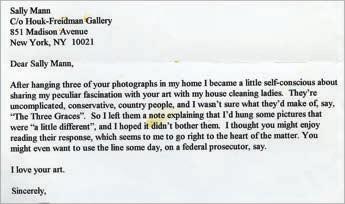
be cultivated, pushed so far out on the axis of vice that they come around to be virtues.”
Axis of vice! How can you top that? It should be the title of a book. Though maybe not this one. But he’s right about the way things often end up coming around. Cynical sophisticates scoff at the belief that if you make your true work with the purest intentions, your sincerity will be rewarded even by the jaded art world, but you know what? I kinda buy that. Do the work of your earnest heart, with all your body and soul, for as long as you breathe and with as much craft and creativity as
you can wring from your every filament, and you will have made art. Your art.. If it is tough art, if it is “The Three Graces” kind of tough, if you have listened to Jim Lewis but you don’t want to draw attention to it, then give it some temporal insulation, as [artist Andrew] Wyeth did with the Helga portraits, working on the series privately for years before releasing it. Or just let time’s sandpaper take care of it for you, as it did for [composer Igor] Stravinsky, whose “The Firebird,” initially ridiculed, is now considered a 20thcentury masterpiece. Either way, you press on, regardless. As [writer] Flannery O’Connor once wrote: “Be properly scared, and go on doing what you have to do.” And hope like hell if it’s tough work and you put it out there, it has this kind of reception: That’s it in the end: “just art pictures,” just somebody making a little something. No big deal. Everybody, calm down. Indeed, these “uncomplicated… country people” got right to the heart of the matter. •

Excerpt from the new book “Art Work: On the Creative Life” (Abrams Press) by Sally Mann © 2025 Sally Mann.
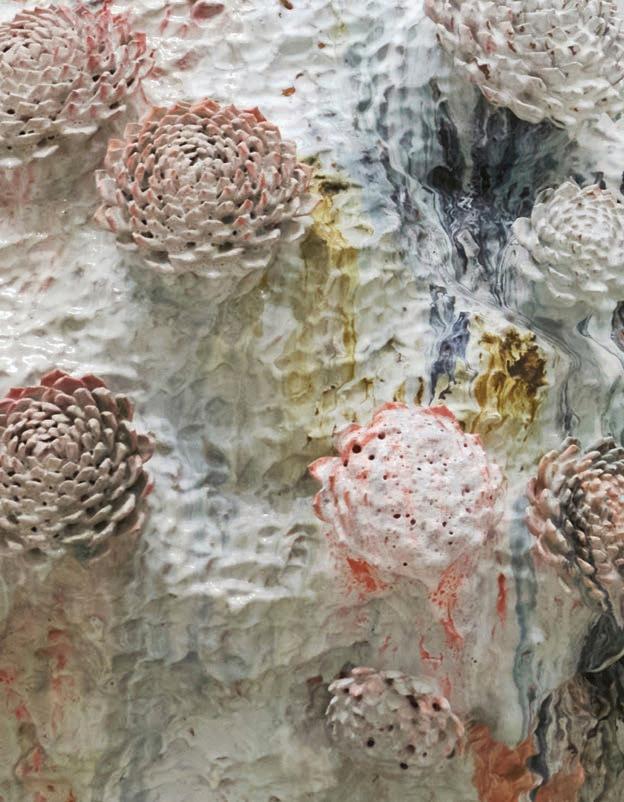
BY JOSHUA LEVINE
With its Craft Prize, the Loewe Foundation is doing what it does best: bringing serious acclaim to undersung talent. In the process, it’s uncovering some wildly imaginative creations, one ghostly chair and multi-armed broom at a time.

Astrange and unsettling object greeted visitors to the basement of Madrid’s Thyssen-Bornemisza Museum last May. On display were the works of the 30 finalists for this year’s Loewe Foundation Craft Prize, whose winner receives a €50,000 award. The thing that first met the eye here was a great blob of whitish glazed clay, about 4.5 feet around, with colorfulflowerygrowthslikemutantdahlias sprouting from its surface. Beautiful, yes, but also a little creepy. It put me in mind of Cordyceps, the parasitic fungal infection that destroys much of humanity in the TV show “The Last of Us.”
“I’veheardthatbefore,”saysMattWedel, the intense American artist who made the work, titled “Flower Tree” (2023). “There’s a deliciousness that pulls you into it, but there’s this threateningness too—the pain of those petals, slicing and cutting.” Golly!
It is clear from the outset that whatever else it may be, Loewe’s Craft Prize is not an Olympics of quilting and basket weaving. “We always have this discussion when the expert panel deliberates,” says Sheila Loewe, president of the Loewe Foundation and a fifth-generation member of her family’s fashion business. “One piece, we say, ‘No, it’s too close to contemporary art.’ Another piece, we say, ‘No, it’s too traditional.’ But we really don’t believe in the old hierarchy that art is the most important thing, then comes design, then comes craft. When you ask our finalists whether they consider themselves artists or craftsmen, you get different answers. The best answer is, ‘I don’t care. I know what I do, and I don’t need to put a name on it.’”
It would be foolish to put a name on this year’s prize-winning work, a striking piece called “Realm of Living Things 19” (2024) by Japanese artist Kunimasa Aoki. Aoki made it by stacking and re-stacking thin coils of clay and letting time and gravity compress them into delicate mille-feuille layers. He then fired the abstract form until it smoked and burned, finishing it with a decorative overlay of soil, glue and pencil marks. The result does not look like it was madebyhumanhands.Isawanalienfossil. Others saw stratified coral or a seed pod. “The jury was amazed,” says Sheila Loewe. “It looks like 3D printing, but it’s not. It’s much better. It’s like 3D printing should learn from craft.”
The Loewe Foundation Craft Prize has embodied that boundary-busting spirit since2016,whenitsprangfromthemindof Jonathan Anderson, then creative director oftheSpanishluxurybrand.(Andersonwas recently named creative director of Dior.)
To Anderson and the Loewe family, craftspeople deserved a lot more love than they were used to getting. In the public imagination, craftspeople are like hobbits who furnish their cozy, insular shire with cunningly wrought tools. Fine artists get all the glory. Craftspeople get a pat on the head. Even many craftspeople see themselves that way. A woman in Madrid for the show had worked for years with the U.K.government’sCraftsCouncil.“They’re a self-anointed underclass,” she said at dinner. “I’ve never seen so many people exert so much energy evading success.”
The founders of the prize may not have known exactly what they wanted, but they knew they didn’t want that. “We decided
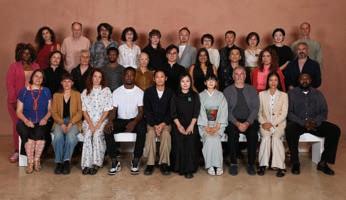
no musical instruments and no knives!” says Anatxu Zabalbeascoa, a Spanish art historian who helped develop the prize and served as president of the jury this year. “We didn’t want the kind of craft that could take you somewhere else. We wanted something both contemporary and timeless, that you could not date. We wanted the prize to open a small door because we felt that craft had some values that the art world had lost—for example, memory and beauty.”
Over the years, the elastic criteria for the prize kept stretching. But the 30 finalists for this year’s prize still share two basic things. One is an evident lineage to artisanal techniques and traditions that gobackalongway.Evenpiecesthatsubvert those traditions draw on them with reverence. And the second thing is astonishing technical mastery. No one’s five-year-old could make these things. Very few people on earth could. “The only thing I fight for,” says Zabalbeascoa, “is that the winners have to be super skillful.”
One of my personal favorites in the show was an ingenious paper chair made by Korean artist Jungin Lee, called “A Soft Landscape” (2024). It’s not a chair meant for sitting, although you could sit in it if you wanted. (I did.) It’s more of a ghostly meditation on the form of a chair. It radiates serenity like a rock in a Zen garden. Lee made it out of Hanji paper, which has played a role in preserving Korean heritage for a thousand years. “Traditionally, people glued two sheets together to make them stronger,” says Lee. “I’m like, OK, what if I make 100 layers?” So each day, Lee glued another layer with flour paste, usingonlyherfingersandonebrush,shaping it to the form before letting it dry. This went on for 130 days. The piece took six months to make.
At a time when so much contemporary art can feel diffuse and difficult to engage with, the pieces at the ThyssenBornemisza—even the most abstract pieces—felt like they had both feet on the ground. The objects here were rooted. They had weight. And they were rich in context. Wherever you looked, history poked its head up.
Nigeria’s Nifemi Marcus-Bello created “TM Bench with Bowl” (2023), one of the two runners-up, using reclaimed aluminum from car parts. He got the idea when he tried to ship a secondhand car back to
Lagos. It didn’t go well. Beneath the surface of the piece runs a rumination about trade and globalization, power dynamics and consumerism. None of which you need to know when you stand before the harmonious, beautifully made sculpture. All the same, those underlying thoughts vibrate through the metal.
I was enchanted by “Group Work” (2024) made by Aspen Golann. Attached to a bentwood broom handle five straw brooms branch out like a genealogy tree. I mean no disrespect when I say it would look terrific on anybody’s wall. Yes, Golann’s clearly got a message to deliver, but she delivers it so lightheartedly that it tickles more than it pokes. “I am fascinated by service objects that refuse to serve. That broom won’t sweep!” says Golann,acheerfulfurnituremakerbased in New Hampshire. “This is dog-whistle feminism, but it’s also just so cute. You choose your level—they’re all real.”
Much has changed since the Loewe Foundation awarded its first Craft Prize. The walls of the craft ghetto are starting to show cracks. “In the beginning, we wrotetomanymuseumswhodidn’twrite back,” says Zabalbeascoa. “Then suddenlythemuseumsandcollectorsstarted writing back. We began to interest them.”
In 2017, some 2,000 artists submitted work for the prize. For this year’s, there were almost 5,000 submissions. (Applications for next year’s close on October 30.) Around 8,000 visitors came through the Thyssen-Bornemisza for the craft exhibition’s opening weekend. “Wow! For a crafts exhibition!” says Sheila Loewe. “That’s very unusual.”
That is Loewe’s way. Loewe has belonged to LVMH since 1996, but it has always looked at arts patronage a little differently than most big luxury brands. The Foundation, founded by Sheila Loewe’s father, Enrique, in 1988, likes to put its money on long shots in the cultural horse race. Let other brands back thefavorites.That’sarefreshingcounterweight to the kind of patronage—current examples abound—that looks more to glorify the giver than to aid the receiver.
“When my father created the Loewe Foundation, he asked around to understand what most needed support, and manypeopletoldhimpoetry,”saysSheila Loewe. “So he said, ‘OK. Let’s create a poetry prize.’ It’s now the most important Spanish-language poetry prize. In the
past, we supported dance because dance was in need. You can find many more people who want to support opera, the same way more people want to support contemporary art than craft. I like to think we’re about beautiful things that don’t have the recognition they deserve.”
In the intervening years, the Foundation has supported initiatives as varied as Kyotographie, an annual photography festival in the Japanese city, and Writing the Prado, a residency at the Madrid museum that has hosted writers such as Nobel Prize winners J.M. Coetzee and Olga Tokarczuk. Novelist John Banville, speakingofhistimethere,citedtheaccesstothe masterpieces and also to the restoration workshops as inspirational. Here again, craft appears as a force for creative good.
If loewe has helped spark a broader craft revival, it comes at a good moment. Thingness is everywhere under assault. “In a world in which digitization, pixelation and ephemerality are getting all-consuming, we need to be reminded that spending time with a material object that engages the hand and the eye is fundamental to what humans are all about,” says Deyan Sudjic, director emeritus of London’s Design Museum and another member of this year’s Craft Prize jury, which also included ceramist Magdalene Odundo, architect Frida Escobedo and designer Patricia Urquiola.
It wouldn’t be the first time that the modest virtues of craftsmanship have been enlisted to fight the grinding march of progress. In the late 19th century, the Arts and Crafts Movement vigorously championed the homespun against the


mass-produced.Themovementwashugely influential and its torchbearers, people like William Morris and Charles Rennie Mackintosh, are rightly beloved. But the battle was something of a mismatch. Exquisite handmade wallpaper can only do so much against industrial capitalism.
A century on, the craft artists on view here have learned a thing or two. They are bolder, they aim higher and they’re not fighting a rearguard action to preserve the past.Noneareatwarwithmodernity.Philip Eglin’s “Rosso” (2024) is a large earthenware jar that recalls the Renaissance majolica that inspired him. But the idea and the technique for the savage red splash across its white glaze was taken directly from Robert Rauschenberg’s “Automobile TirePrint”(1953).SaysEglin:“Iliketoborrow from history to reinvent it.”
Left out here are the legions of artisans who ply their trade with skill and dedication in much the same way their forbears have for centuries. They are the bedrock on which the great luxury brands, Loewe included, have built their empires. All honor is due them, but their place is not here, says Olivier Gabet, a jury member and a curator at the Louvre. “We just had a big crafts fair in France, and 90% of the things were beautifully done, but without much artistic interest.”
To Sudjic, the future belongs to the craft artists in the basement of the ThyssenBornemisza:“Theworldvaluestheuseless above the useful—Thorstein Veblen said that—and craft carries with it the burden of having sprung from utility. Butwhatweseehereisnotaboututility.It’s about celebrating the techniques that went into that. I think craft is finally coming out of its long cringe of unself-confidence to assume a position in the wider culture.”
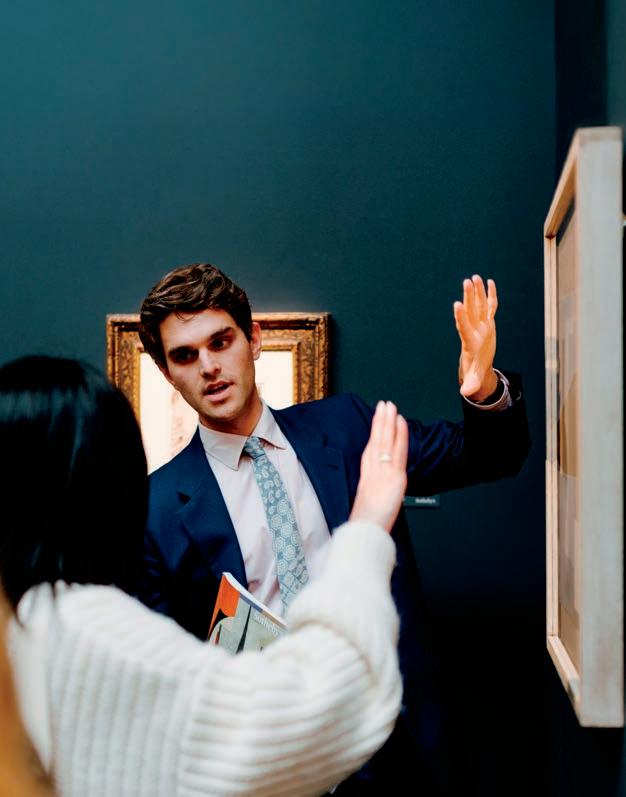

ACT FOUR
In which we take in the cultural riches of Abu Dhabi, exploring historic sites, previewing the soon-to-open
Norman Fosterdesigned Zayed National Museum and meeting the emirate’s next generation of artists.
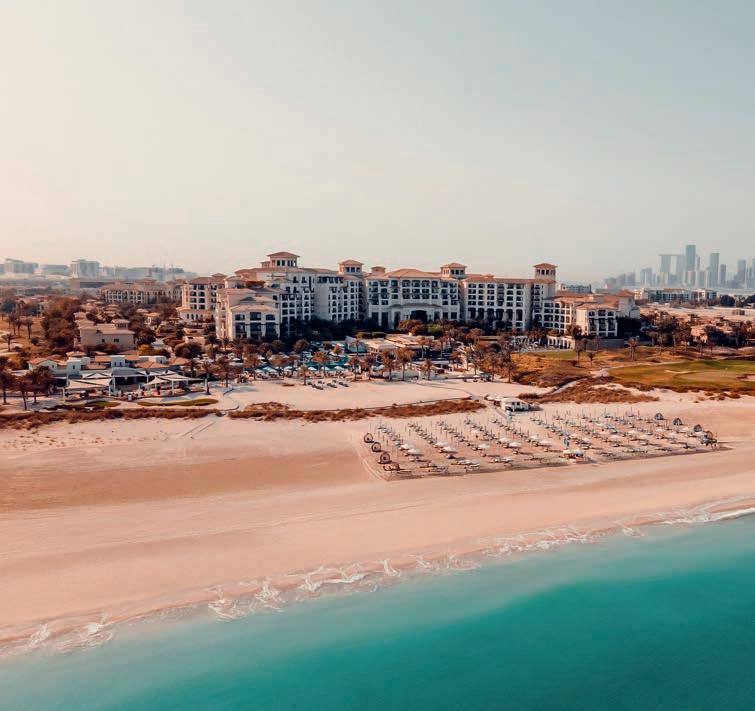

BY AMANDA RANDONE
PHOTOGRAPHY BY NATALIE LINES
Past and future intersect where burning sands, hazy skies and turquoise tides set the scene for some of the world’s most ambitious architectural endeavors. One of the seven emirates in the UAE, Abu Dhabi is home to the coastal city of the same name, which is also the nation’s capital, playing an important role as a political and administrative center while attracting visitors eager to explore its expanding urban and cultural offerings. Beyond the skyscrapers and striking structures, however, are the natural wonders where centuries-old traditions prevail as the beating heart of Abu Dhabi’s heritage.
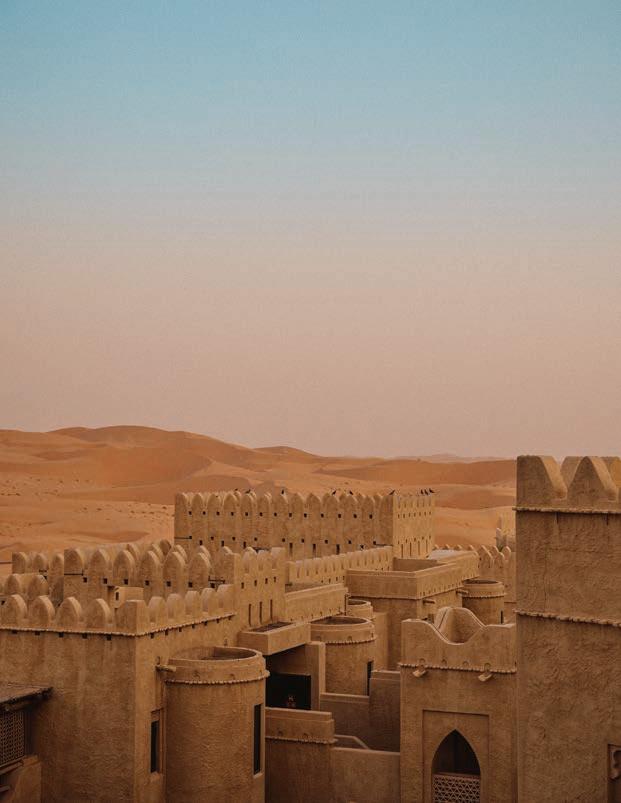
Qasr Al Sarab—Just 90 minutes south of the city by car and 50 by helicopter, amid the rolling dunes of Rub‘ al Khali—the world’s largest uninterrupted desert, also known as the Empty Quarter— stands a luxury resort commissioned by Abu Dhabi’s ruling families. The aptly named Qasr Al Sarab, which translates to “Mirage Palace,” opened in 2009 and was designed to resemble an ancient Arabian fortress. With an aesthetic that pays homage to the UAE’s Bedouin heritage and a setting that is almost lunar in its otherworldly allure, this unique destination is not to be missed.
Rub' Al Khali Desert—Discovering Abu Dhabi’s vast dunes often involves engaging with the remarkable creatures that have withstood their beguiling yet harsh terrain. The robust camel, for example, has maintained its hold on Emirati culture with its lanky legs and smiling snout. Once essential for transportation, sustenance and trade activity, these dromedaries are now used in activities including racing, riding and beauty contests. The camel’s fellow desert survivor is the revered falcon—the official symbol of the nation, and a bird employed by Bedouins as a hunting tool for millennia. Today, hunting is banned in most of the UAE, but falconry remains an important tradition, and efforts to preserve and care for the birds are widespread.

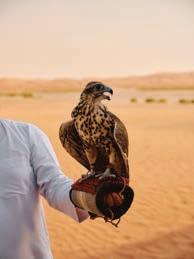
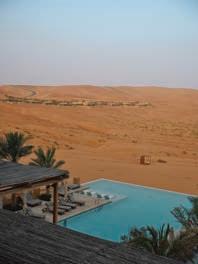
Arabian Hospitality—The Rub' al Khali desert is a popular destination for a range of recreational activities including dune bashing, hot air ballooning and camping out under its endless awning of stars. It is also where locals and visitors alike seek refuge from urban living, spoiled for choice with sprawling resorts offering everything from uninterrupted desert vistas enjoyed poolside to plush Middle Eastern fabrics and spa experiences shaped by ancient rituals and indigenous ingredients.



Liwa Oasis—Located in the southeastern part of the UAE and less than a three-hour drive from the capital, the scenic Liwa Oasis is the birthplace of the ruling families of Abu Dhabi and Dubai. Once home to date-cultivating settlers during the 15th and 16th centuries, archaeologists believe, it is where Bedouin tribes continue to practice their traditional way of life today. Nearby, oil and gas discoveries forever changed the trajectory of the nation.At the same time, these surroundings have become a covetable destination for awe-seeking tourists and the site of major Hollywood productions, including “Star Wars: The Force Awakens” and parts one and two of “Dune.”
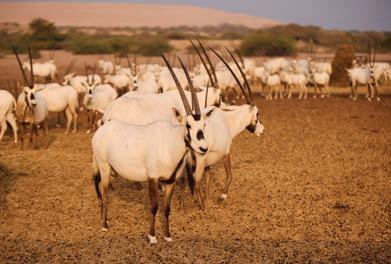
Sir Bani Yas Island—Located on one of the over 200 islands in Abu Dhabi’s archipelago, about 100 miles southwest of the capital, is a nature reserve accessible only by boat where 17,000 native and non-native animals, including the Barbary sheep, roam the rugged terrain.A passion project for the nation’s late ruler and founder, Sheikh Zayed bin Sultan Al Nahyan, the Arabian Wildlife Park was first established in 1971 to ensure the survival of the region’s endangered indigenous species, most notably the Arabian oryx, which was once considered extinct in the wild. The reserve now hosts one of the largest existing herds of the distinctive white antelope while a conservation team works to breed and transfer them for repopulation.

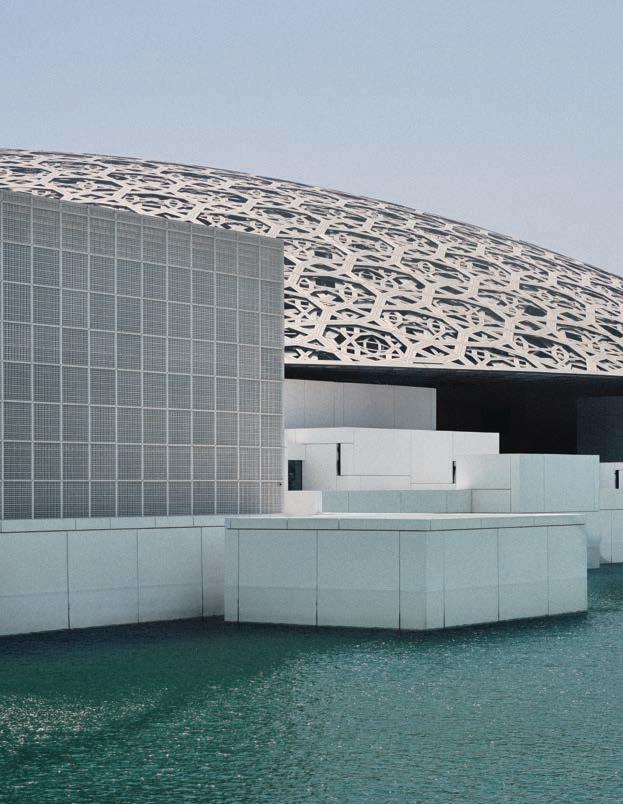
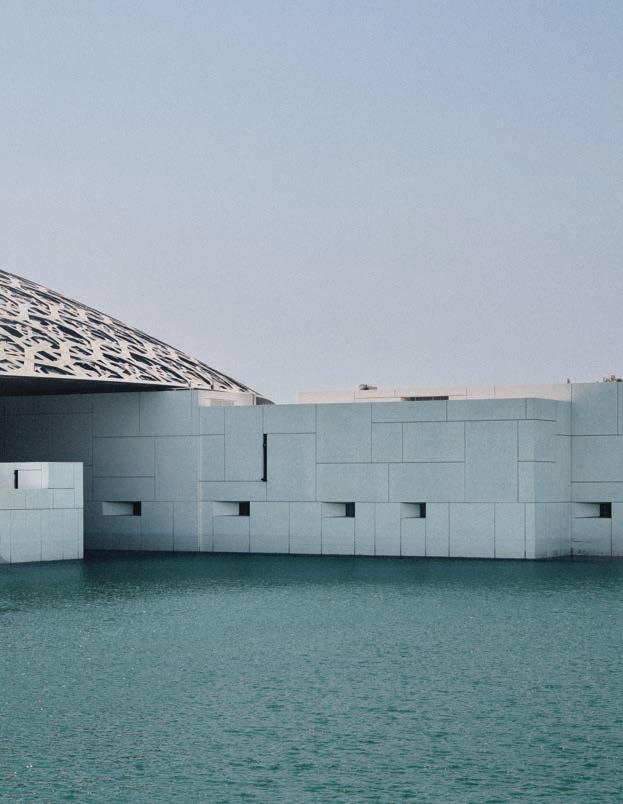
Louvre Abu Dhabi—Designed by Jean Nouvel, the Louvre Abu Dhabi’s impressive structure—topped with a massive kaleidoscopic dome inspired by desert palm leaves—is something to behold. Just as arresting are the hundreds of masterpieces within the museum’s walls, many on loan from other institutions, namely its Parisian counterpart. Since opening in 2017, the Louvre Abu Dhabi has been a hallmark of the emirate’s multiyear megaproject to develop its cultural district on Saadiyat Island and comprises interconnected galleries and promenades that appear to float on the Arabian Gulf.
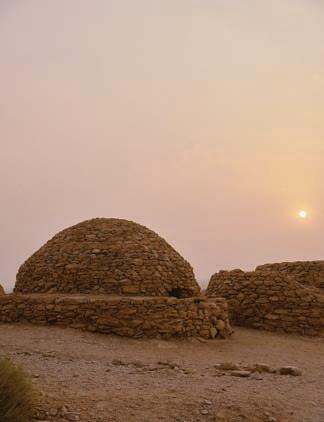
Qasr Al Muwaiji—For a historic fort with a modern twist, venture over to Qasr Al Muwaiji in the center of Al Ain. The square enclosure was built in the early 20th century and is a relic of the period’s sun-dried mudbrick architecture. The building served as a diwan, or a place of governance and community gathering, and then as the residence and administrative base for Sheikh Zayed bin Sultan Al Nahyan in 1946, before eventually becoming a museum in 2015. Exhibitions are housed in a glasswalled space within the courtyard, lending a contemporary feel to a locale that pays homage to the past.
Jebel Hafeet Beehive Tombs—Only 90 minutes from the capital lies Jebel Hafeet,Abu Dhabi’s tallest peak. The limestone mountain towers over Al Ain, also known as the Garden City because of its remarkable greenery in the heart of the desert. Dotted across the mountain’s foothills are hundreds of circular tombs fashioned from natural stone. The 5,000-year-old beehive-like structures date back to the Hafeet period, which is named after the burial site and marks the beginning of the Bronze Age in what is today the UAE and Oman. To wander through this UNESCO World Heritage Site is to look through a lens into the life and rituals of the region’s early inhabitants.
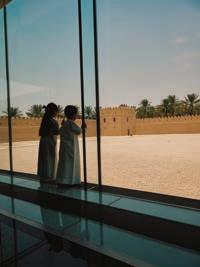



Al Jahili Fort—Built in Al Ain in the 1890s by Sheikh Zayed bin Khalifa Al Nahyan, the grandfather of Sheikh Zayed bin Sultan, this fort is one of the largest in the UAE, initially constructed to house the ruling family and protect the oasis city. The simple, ochre-hued exterior is a remarkable departure from the shiny new development projects going up elsewhere in Abu Dhabi, exemplifying the traditional and resilient desert architecture that has both defined and defended the emirate’s heritage. From the fort’s tall watchtowers, soldiers monitored activity and potential threats while its thick walls stood strong against harsh desert storms. The space has since been transformed into a cultural center with permanent and temporary exhibitions.
Al Ain Oasis—Also in the Garden City is its namesake oasis, one of seven in Al Ain.A UNESCO-listed destination, it’s home to 1,200 hectares of nature situated beneath a shady canopy of more than 140,000 date palms, which farmers still climb to harvest their crop. These grow alongside mango, orange, fig and other fruit trees. Among a scattering of historical structures, such as forts and watchtowers, is a historic aflaj irrigation system— the same that has been used to cultivate this part of the Rub' al Khali desert for thousands of years.

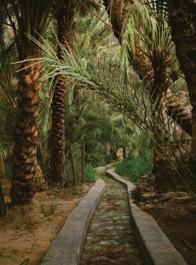
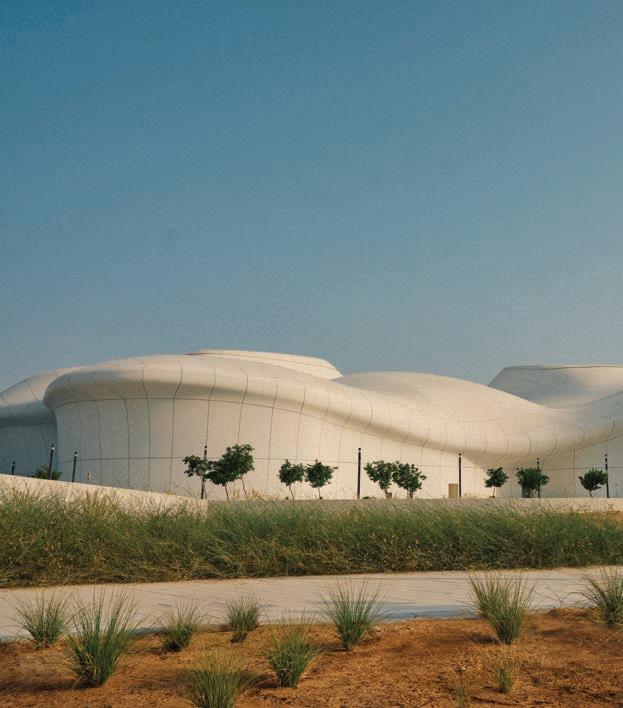
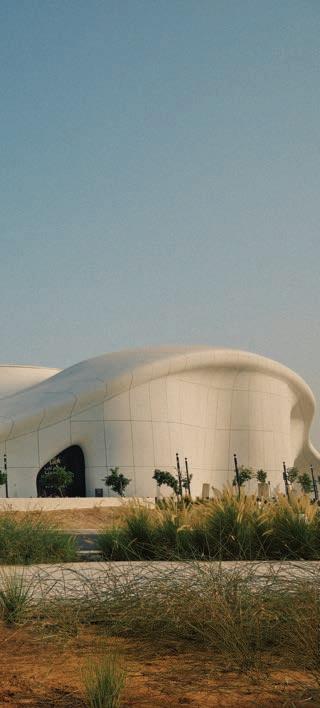
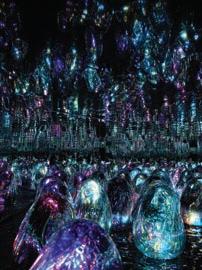
TeamLab Phenomena—A more recent addition to the Saadiyat skyline is an undulating building housing the immersive artworks of the Tokyobased, interdisciplinary collective TeamLab. Appearing like a ski slope that has lost its way against the sun-drenched and sandy horizon, it was designed by the group in collaboration with local firm MZ Architects. Stark white and low to the ground, the organic structure is reflective of the ever-evolving installation within: a reactive meeting place for art, architecture and nature that changes as visitors make their way through it.
Abrahamic Family House—The number three has long been considered as the number of harmony and wisdom, making it the perfect fit for the Abrahamic Family House on Saadiyat Island. Inaugurated in 2023, this interfaith complex is a testament to peaceful coexistence, bringing together a mosque, a church and a synagogue. Each house of faith was built identical in scale as a 30-meter minimalist concrete cube accommodating more than 200 congregants. What distinguishes them are their facade patterns and orientation: the mosque, featuring Islamic arches and latticework, faces Mecca; the church stands in an eastward direction so that the morning light pours through its towering columns to illuminate the altar; and the synagogue, inspired by the symbolism of the sukkah—a temporary shelter for sharing meals and prayer—is oriented towards its traditional direction of worship. Production by Good Stills. •
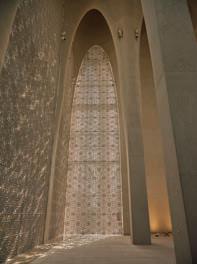
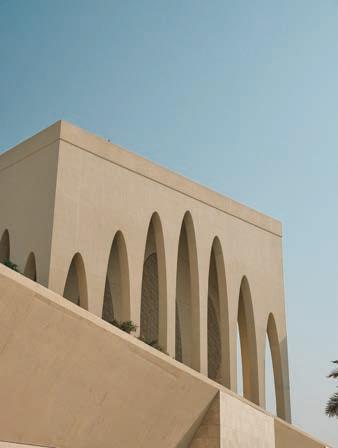
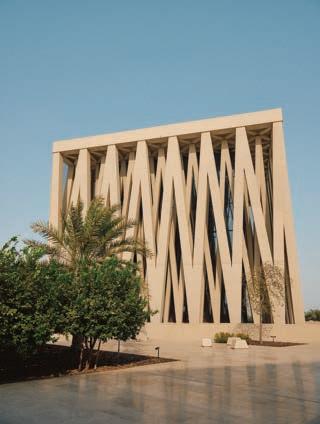
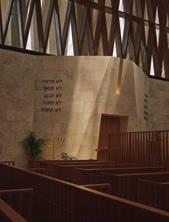
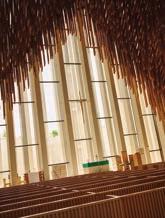

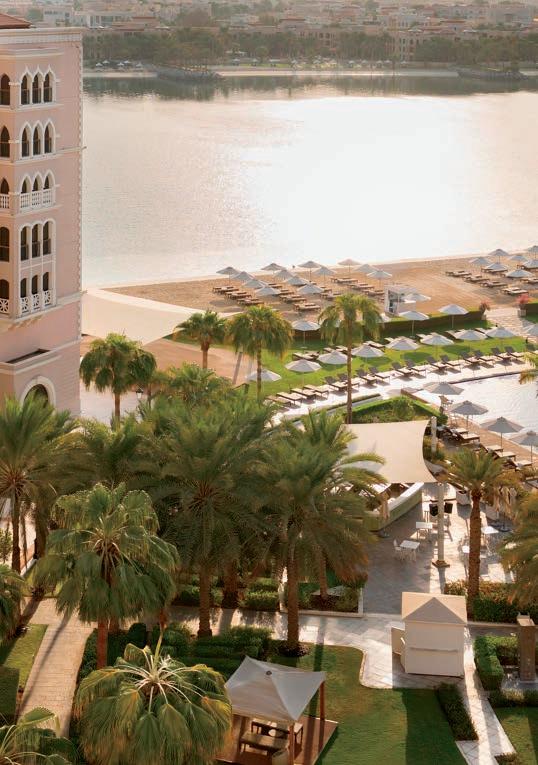
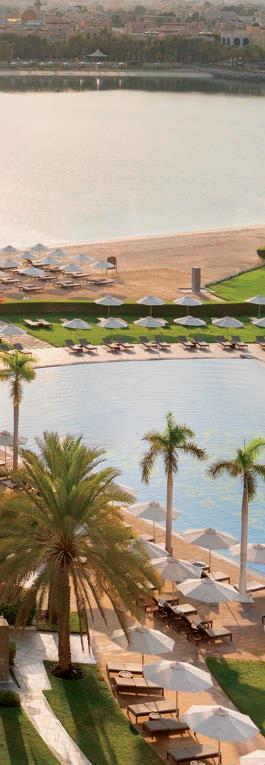
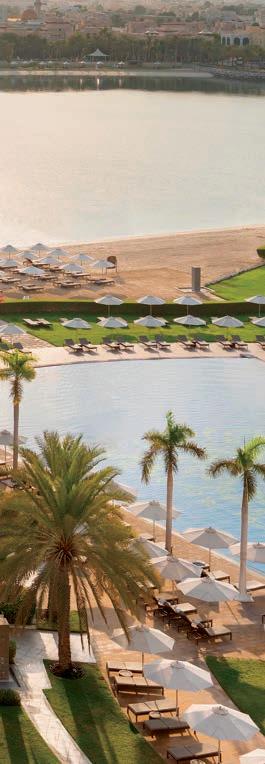


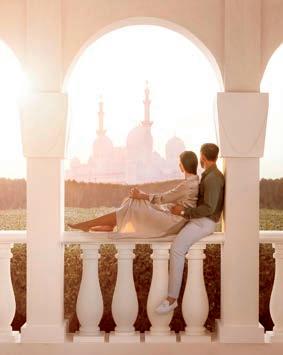
Immerse yourself in a world of refined luxury at The Ritz-Carlton Abu Dhabi, Grand Canal, where Venetian architecture seamlessly blends with the warmth of Middle Eastern hospitality along a picturesque waterfront. Situated opposite, and with the views of the majestic Sheikh Zayed Grand Mosque, this exquisite retreat promises an atmosphere of elegance and tranquility, offering the perfect escape for both leisure and exploration.


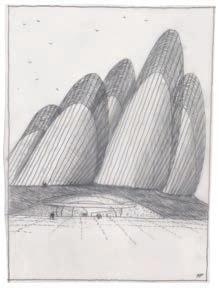
BY CHARLES SHAFAIEH
Opening this December, the Zayed National Museum reimagines the concept of a national institution for the 21st century. Soaring falcon-wing towers rise from an earth mound, blending ancient and symbolic Emirati forms to create a home for a collection rooted in the shared history of human connection.

“The building had to come from the ground. It had to be earthed.”
—Gerard Evenden
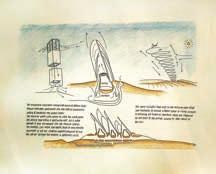
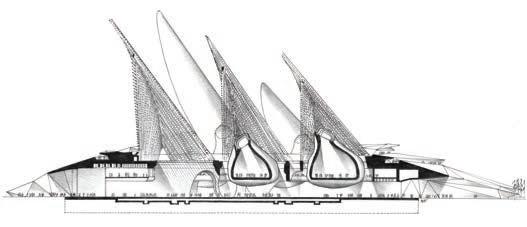
In recent years, visual grandeur has become a hallmark of the United Arab Emirates.Fromcommissioningtheworld’s largest carpet to upcoming plans for a performance featuring 10,000 lightshow drones, the nation frequently celebrates the awe-inspiring. At first glance, the Zayed National Museum seems to perpetuate this aesthetic urge. Situated in the center of Abu Dhabi’s ambitious Saadiyat Cultural District, the museum is an architectural feat: five steel towers rise more than 370 feet to evoke the soaring wings of a falcon—the national bird of the UAE—from atop a giant man-made hill, which itself abstracts Emirati topography. Yetnothingabouttheinstitution,including the towers, exists to satisfy the eye alone. Architect Norman Foster and his team were hyperconscious that, although a national museum can entice visitors through its appearance, to foreground dazzlement would be to betray its fundamental purpose. “A national museum is owned by the people,” says Gerard Evenden, the firm’s senior executive partner who has led the project from its origin.
“[Visitors] go there to be sociable. At the British Museum, for example, people regularly go there to have lunch. It’s not about coming once. You want the nation to visit again and again.”
Instilling a sense of familiarity with and sensitivity to Emirati culture and history was central to achieving their goal. Although the design is unquestionably modern, its core inspirations, both in appearance and construction, are local traditional buildings. “If you look across the seven emirates, the older buildings are the color of their sand because they built them from what was there,” says Evenden. “So, very quickly, we had the concept that the building should come from the ground. It had to be earthed.” Saadiyat Island is flat, however, so the mound in which the museum is effectively buried needed to be fabricated. “It’s a high-tech cave, which also keeps the building cool,” he explains. The exterior “wings” perform a complementaryfunction.Thetopsofthesetowers are heated by sunlight, causing warm air from inside the museum to travel upward via the thermal stack effect towards flaps
“If ever we have created a building that is really rooted in its environment, this is it,” says Gerard Evenden of Foster + Partners. In addition to its sustainable cooling methods, it is effectively daylit—a rarity for entire museums. Throughout the galleries, small apertures provide illumination without ever exposing the artifacts to direct sunlight.
similar to those used on airplanes. When opened, these flaps expel the warm air. Simultaneously, underground pipes funnel fresh air from the exterior, passively cooling it before sending it throughout the building. Air conditioning thus effectively becomes unnecessary, except in those galleries which require temperature control for conservation purposes. The system nods to ancient architectural innovations such as the barjeel, a wind-tower design found throughout the region that similarly facilitates passive cooling.
This emphasis on purposefulness permeates the interiors as well. Long-lasting bronze ornamentation on and around the doors took precedence over paint, for instance. “The museum is a national landmark that will stand for decades to come,” says Evenden. “We were keen for it to age well, with carefully selected materials that acquiredapatinaovertime—especiallythe elements visitors will touch and interact with.”Inotherwords,humancontactliterally leaves a trace in this people’s museum. Simplicity was key to the final design. Evenden recalls how their initial proposal
Clockwise from top right: The Abu Dhabi Pearl, discovered during archaeological excavations in 2017, is the world’s oldest known natural example; a folio from the Blue Qur’an, created in Al Andalus between 800-900 CE; the magan boat, named after the ancient term used in Mesopotamia for the land that encompasses modern-day UAE and parts of Oman.
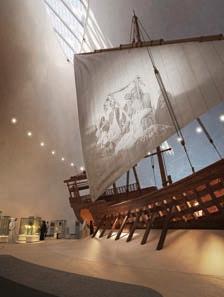
to clad the walls in marble and include elaborate gilding—common features in many of the world’s grandest museums— was rejected. Echoing his firm’s belief that a national museum should reflect a country’s culture, the institution’s team made clear that its galleries should equally embody the attributes of the UAE’s founding father, Sheikh Zayed bin Sultan Al Nahyan, after whom it is named. As the UAE’sfirstpresident,hegovernedfromthe country’s founding in 1971 until his death in 2004. Rising to power from a Bedouin background, he was widely respected for his wisdom on issues such as environmentalism and diplomacy, as well as for his magnanimity toward his people.
A museum in his honor needed to be the polar opposite of an opulent palace with an imposingaura.Thevastatriuminparticular seekstogreetvisitorsasawelcomingspace, with areas set aside for performances, eating and congregating. “There is a humblenesstothedesign,”saysDr.PeterMagee, the museum’s director, who began his career in academia, leading archaeological excavations in the UAE. “You feel comfort-
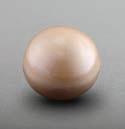
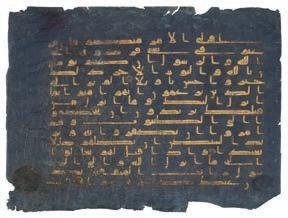
able, and that this is a place for you, which reflectsEmiratisociety.”
Magee also embraces this democratic intent in his curatorial vision, which extends back 300,000 years when archaeological evidence indicates human settlements existed in the area that is now the modern-day UAE. “It’s a museum of stories about people rather than about objects,”heexplains.“Everyobjectiscarefully chosen because of the story it tells.”
In addition to the Abu Dhabi Pearl, which traces pearl diving in the UAE to at least 6,000 BCE, and five pages from the renowned Blue Qur’an (800-900 CE), one of the most significant objects in the collection is a recreation of an 18-meter-long Bronze Age magan boat. These vessels enabled the trade of copper from the UAE’s mountains, as well as textiles and semi-precious stones, between this area, Mesopotamia and the Indus Valley.
Takinginstructionsfromanancientclay tablet that lists materials needed for such a boat, along with archaeological evidence revealing construction techniques, specialistsacrossthehumanitiesandsciences
built the ship using reeds, ropes and wood. The project, a collaboration between the museum and New York University Abu Dhabi, aims to preserve Emirati maritime heritage and deepen our understanding of life in the region 4,000 years ago. It also reflects the museum’s intentions to fund and champion research. Following four-and-a-half years of preparations, the magan boat was equipped with a goathair sail and passed two days of sea trials in 2024, traveling 50 nautical miles and reaching a speed of 5.6 knots.
“The magan boat is important not because of what it is but because of what it represents,” says Magee. Akin to the museum’s curatorial efforts, it points as much to the past as it does to the present and future of this relatively youthful nation. “From here, boats like this would sail out to the world. With goods come people, and with people come ideas. This has been a meeting point for global communities,andwhatwe’redoingatSaadiyat Cultural District is a continuation of that. There is cultural memory here. The story is already interwoven in the sand.”
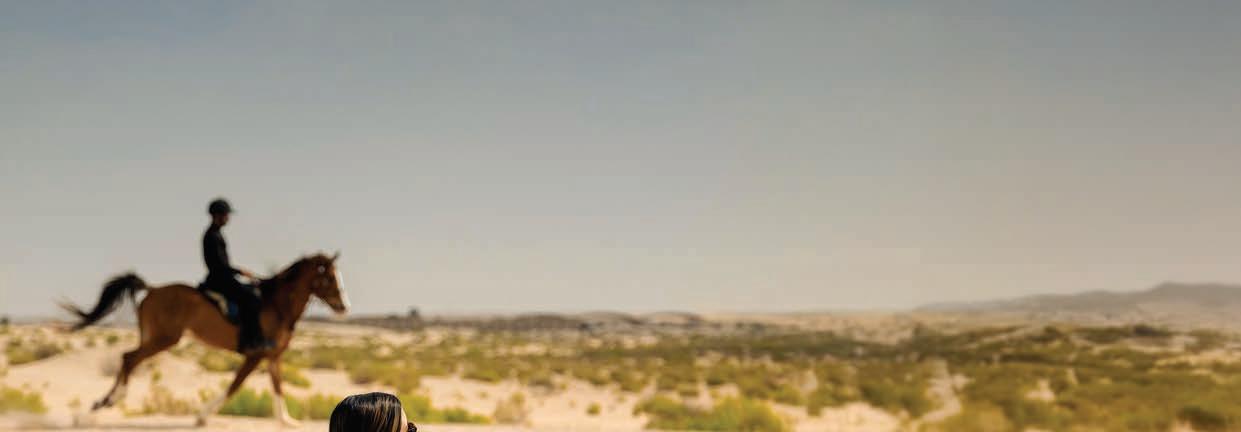





BY KATY GILLETT PHOTOGRAPHY BY NATALIE LINES
Across Abu Dhabi, a wave of emerging and established artists is thinking bigger—both in scale and ambition—fueled by the city’s rapid cultural rise. Shaped by desert, mountains and ocean, and supported by a growing arts infrastructure, they are reimagining what it means to create from the Gulf. Step inside the studios where place and possibility meet.

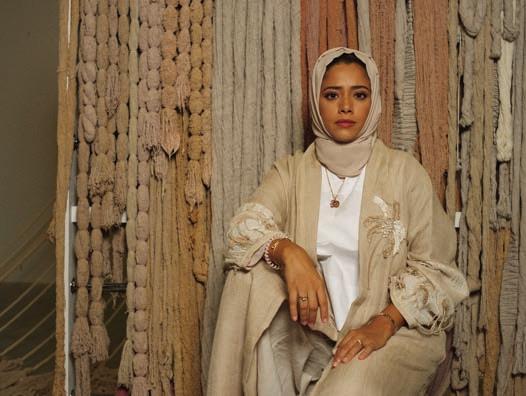
Afra Al Dhaheri sees a parallel between the increasing size of her cascading, wall-length rope installations and the expanding creative landscape around her in Abu Dhabi: “It’s a fast-evolving art scene and… it’s competing with the rest of the world.”
In a cavernous warehouse on the outskirts of Abu Dhabi’s Mussafah industrial area, Emirati fiber artist Afra Al Dhaheri, 37, fashions thick strands of unraveled rope into a large-scale installation that resembles a monumental braid. It dangles from the ceiling as the former hairdresser and a cohort of assistants— many of them her students at Zayed University, where she’s an assistant professor—prepare her pieces to be shown in galleries and fairs, from Japan’s Aichi Triennale opening later this month to the Taipei Biennial in November.
Eversinceshemovedtothisnewstudio in2021,she’sfeltanimpulsetophysically enlarge the scale of her work. Previously, she and three of her peers, among them fellow Abu Dhabi-born artist Hashel Al
Lamki, professionally shared a villa in which they each took one room as a studio. The downtown space, known as Bait 15 (bait meaning home in Arabic), was once the home of the late Emirati actor Mohammed Al Janahi before he died in 2008 and it passed down to his son, the filmmaker Nawaf Al Janahi, who then leased it to the legendary Emirati painter Mohamed Al Mazrouei. When Bait 15 launched in 2018, the collective was revolutionary. But its members, buoyed by international interest, soon began outgrowing it, both figuratively and literally.
“We felt it was time to move on to the next step, setting up independent studios and setting a model for other artists to show them what’s possible,” says Al Dhaheri. “When I moved [to
Mussafah], I started working on pieces that were larger than the scale of the studio before.”
The pace of her growth reflects that of Abu Dhabi itself. When Al Dhaheri first started practicing over a decade ago, the arts scene was nothing like it is today. Back then, the UAE’s capital was quieter than its neighboring emirate of Dubai, where the sprawling global art fair Art Dubai has been running since 2007. While Abu Dhabi has its own event, Abu Dhabi Art, this began as a much more subtle affair, taking place within the confines of the, albeit opulent, Emirates Palace hotel (it made headlines in 2010 for installing the world’s first gold-vending machine), and initially operating under the name Art Paris Abu Dhabi.
Fast-forward to 2025, and art is everywhere in the city, thanks to government funding that has allowed for the establishment of residencies and grants at institutions such as the Cultural Foundation or 421 Arts Campus. Galleries are popping up all over, from the burgeoning creative neighborhood of MiZa to Saadiyat Island, where a multiyear megaproject to create the emirate’s cultural district nears completion. Soon enough, the Louvre Abu Dhabi will be joined by the Guggenheim Abu Dhabi and the Zayed National Museum, the latter of which is scheduled to open in December.
Under the latticed, Jean Nouvel-designed dome of the Louvre Abu Dhabi is where you’ll find the fifth edition of “Art Here.” The exhibition, opening on October 11, is part of the annual Richard Mille Art Prize, born in 2021 with one simple aim: to allow artistic talent from the Emirates to grow. Since then, the initiative has expanded to encompass applicants from across the Middle East and North Africa and, for the first time this year, Japan. But it’s about more than just a cash prize and exposure, says Museum Director Manuel Rabaté. “As the UAE art scene becomes more internationally visible, these artists are not just participating; they are actively shaping the discourse.”
Abu Dhabi-raised artist Rand Abdul Jabbar won the $60,000 grand prize in 2022 for her work, “Earthly Wonders, Celestial Beings” (2019-ongoing): a collection of glazed stoneware that interrogates the fragility of tangible heritage, drawing on Mesopotamian artifacts, architecture and mythology. Abdul Jabbar, who was born in Baghdad in 1990, says, “It acknowledged a body of work that I see as the foundations of my practice, so it gave me this sense of assuredness.”
As this creative landscape continues to expand, so do the artists who inhabit it, filling their studios, their canvases and the cultural space around them with a dynamism that resonates across borders. This momentum has resulted in an increasingly self-confident generation of up-and-coming artists, both Emirati and international, who know they can learn, hone their craft and, like Al Dhaheri, lay down roots. “It’s a fast-evolving art scene and... it’s competing with the rest of the world,” she says. “When the
Hashel Al Lamki, born and raised on Hafeet Mountain outside of Abu Dhabi city, draws natural pigments from the local land to produce sculptures alongside interactive installations that explore where he’s from. “I look at the mountain as a container for different socioeconomic issues that we’re facing—the rapid growth that is happening across the region.”

Guggenheim opens, that’s going to be a real game changer.”
Dyala Nusseibeh, director of Abu Dhabi Art, agrees, pointing to the pool of talent emerging in a city where becoming an artist is a viable career choice. “There are multiple artist residences, degrees at universities, amazing museums, a multitude of galleries,” she explains. “There’s every opportunity as a young artist to develop and progress, and it’s not a saturated market.” If you’ve got something to say, there’s still plenty of space to say it.
Among them is Simrin Mehra-Agarwal,anIndian-bornmultidisciplinary artist who has been practicing in the emirate for the past decade. She was also a finalist for the Richard Mille Art Prize the same year Abdul Jabbar won. Mehra-Agarwal incorporates her passion for scuba diving into her work, documenting sunken ships that were once vehicles for violence and war, but are now organic sources of life for the region’s depleting coral reefs. From here, she creates monumental installations that
combine drawing, painting, relief sculpture, collage and assemblage. “There’s this intense repetition in [her work] that feels almost ritualistic,” Nusseibeh remarks. “It’s like she’s drawing and building at the same time.”
Mehra-Agarwal, who’s in her mid-40s, describes her penchant for repetition as a meditative practice that calls for the continuous engagement of her body. While she was classically trained in fine
art, studying in Delhi, London and Florence, physicality now dominates her process, as the sheer scale of her pieces requires her to constantly move or be on her feet.
For this, she needs space. Space to breathe, to expand. Over the past 10 years, she’s had four studios in Abu Dhabi, including in the cultural hub of Manarat Al Saadiyat, where every year Nusseibeh’s art fair takes over its 15,000
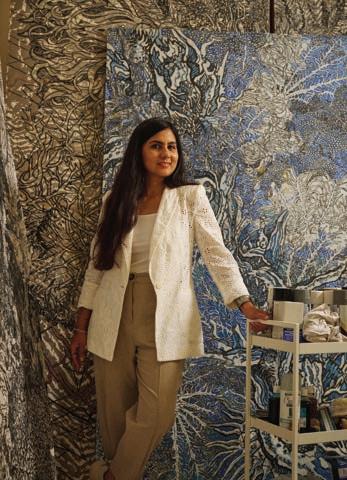
Simrin Mehra-Agarwal, though classically trained, plays with everything from drawing to collage in a way that engages her whole body. There is a physicality to her large-scale pieces, inspired by her love of scuba diving and created in a studio with ultra-high ceilings that she says has “changed how I work, how I move around the pieces.”
square meters. Currently, Mehra-Agarwal is based in Khalifa City, where she moved six months ago. “I was really craving height [and] the ceilings here are at least double what I had before,” she says. “It’s changed how I work, how I move around the pieces. There’s something about being able to step back and really see the work from a distance, or look up and see it hanging.” That shift in perspective,shecontinues,iseverything.
Mehra-Agarwal attributes the evolution of her practice not only to the generous dimensions of her studio, but to the wider environment of the UAE. Firstly, there is the proximity to the ocean and having access to several regional dive sites. Nature’s subtle influence in the detail of her pieces, particularly that of the desert, also seeps in, as does the vastness and palette of its beige-hued backdrop.
Abu dhabi’s landscape is more explicitly apparent in the work of Emirati multimedia artist Hashel Al Lamki, who draws inspiration from his background and from his topographical surroundings. Born in 1986 and raised outside the capital on Jebel Hafeet—the highest peak in Abu Dhabi—he produces sculpturalworksandsizableinstallations using resources from the land locally, such as natural pigments. These creations are often accompanied by audio and visual digital compilations, autobiographical elements and calculations of hiscarbonfootprint.
“I look at the mountain as a container for different socioeconomic issues that we’re facing—the rapid growth that is happening across the region,” Al Lamki explains. Given that public perception of the UAE is often based upon images of glitz and grandeur, while the wider Middle East is associated with perpetual conflict and unrest, Al Lamki has made it his mission to show another side of where he’s from. “It’s about time to try and challenge those [preconceived notions] or introduce new topics that are more relevant to everyday life here.”
For Abdul Jabbar, too, her discipline is similarly steeped in memory of a place, for both her “Earthly Wonders, Celestial Beings” series and beyond. Using clay sculpture, writing, video and installation as her primary mediums, her practice demonstrates how the past intersects
Rand Adbul JabbarÕs experimentation with mediums such as clay sculpture, writing and video grapples with themes of time, personal experience and place: “A lot of my work stems from this feeling of not really being from here nor there … When there are no tangible roots or anchors, you kind of have to invent them.”
with her personal experience. “A lot of my work stems from this feeling of not really being from here nor there—trying to make sense of your place in the world,” she says. “When there are no tangible roots or anchors, you kind of have to invent them.” It helps that her current studio is in her own home, which itself is in the same neighborhood where she played as a child.
After returning from a residency in Mexico where she was documenting bricklayers in their studios—and adopting the same molds employed in their workshops—Abdul Jabbar is focused on aseriesoflargedrawingsreimaginingthe primordial flood myth and, separately, her studied interest in a style of ceramic overglazing called “luster,” thought to have been invented in ninth-century Iraq under the Abbasid caliphate. This ancient method shifted and transformed as it traveled through Egypt, Iran, Syria and Spain, where she learned more about it from an artisan whose family has been using it for generations.
For the time being, the artist is comfortable operating out of her home studio, though she does hope to move to a bigger space that can accommodate a kiln. Of her current setup, she says: “The work I do is very personal. Dealing with memory and family history and archives, to be surrounded by all my objects and heirlooms has been quite special.”

If there were one unifying theme that ties all these artists together, it’s the powerful impact their environment, and Abu Dhabi in particular, has had on them and their oeuvres. “It’s hard to really define trends, because the wonderful thing about this place is there are all these different people from different parts of the world,” Abdul Jabbar shares.
Nusseibeh believes this “melting pot,” and the shared experience of living in the UAE, is what makes the local art scene so dynamic. The undeniable mark Abu Dhabi is making on the wider art world as a result, she adds, is no accident. “It’s
come out of a generation of museum planning and building up of opportunity. Now there’s so much more there for the young generation and they’re picking it up and taking it.”
The scale of ambition is exciting, says Rabaté, who is preparing for this year’s exhibition of prize-shortlisted artists. He describes this moment as the beginning of a long-term cultural legacy: “Exhibiting contemporary works next to millennia-old masterpieces is radical. It’s also deeply hopeful. We are building a future where the Gulf contributes meaningfully to the global artistic narrative, not as a satellite, but as a center.”





DESIGN FORWARD
Since cloSing for remodeling in 2018, Abu Dhabi’s Al Ain Museum has been an exciting site of both renovation and archeological discovery. The oldest museum in the UAE, it opened in 1971 with the purpose of telling the region’s history through artifacts dating back to the sixth millennium BCE—a mission that has reached new heights ahead of its reopening.
LedbyUAE-basedfirmDabbaghArchitects, this major transformation project has recently unearthed a pre-Islamic funerary landscape with a 2,000-year-old tomb, along with a sprawling underground irrigation network known as an aflaj from the early Islamic period. These significant finds have helped guide construction,whichissettobecompleted within the coming months, although an official date has yet to be announced.
The Al Ain Museum is one of several in Abu Dhabi, where a cultural tidal wave hasfloodedtheemiratewithanambitious lineup of new and forthcoming openings. This includes the much-anticipated Guggenheim Abu Dhabi, the region’s
first branch of the renowned modern and contemporary art institution, which has been in the works since 2006. It brings with it some of the most critical oeuvres of the 20th and 21st centuries, with a considered emphasis on pieces of West Asian, North African and South Asian origin. Designed by Frank Gehry, the museum will soon open on the shores of Saadiyat Island’s Cultural District, joining the ranks of Jean Nouvel’s Louvre Abu Dhabi, launched in 2017, and Norman Foster’s Zayed National Museum, which debuts this December.
This is also where Abu Dhabi’s inaugural Natural History Museum, featuring some of Earth’s rarest historical specimens, is expected to complete construction in the coming months. Its highlights include the world-famous skeleton of Stan, a Tyrannosaurus rex; and a piece of the Murchison meteorite containing70aminoacids,manyofwhich are not found on Earth. The visitor journey will span more than 375,000 square feet and hundreds of thousands of years, as the exhibits narrate the evolution of our planet and humanity.—Katy Gillett
Above: The newly renovated Al Ain Museum.
Abu Dhabi Collectors’ Week, an inaugural auction series, brings extraordinary treasures to collectors in the UAE and others from around the world. Exhibitions open December 2-5, with live sales December 5.

An exceptional array of high jewelry and rare timepieces from a single discerning collector.
Offering world-leading collector cars, from marques including McLaren, Aston Martin and Pagani.
A curated selection of the finest and most coveted handbags.
An exclusive selection of luxury properties and other real estate.
Above: With 750 hp and a one-off specification, the 2017 Pagani Zonda 760 Riviera—estimated between $9.5 million and $10.5 million—will be offered at the RM Sotheby’s Abu Dhabi auction.
Iris Projects, which opened last November, has broken new ground as the first commercial gallery in MiZa—a vibrant and burgeoning neighborhood for creatives and entrepreneurs. Founded by Emirati art collector Maryam Al Falasi, the space platforms leading regional talent such as Ajman’s Ammar Al Attar, whose solo exhibition, “Silent Residues,” begins on September 19, tracing the evolution of his multidisciplinary practice. Iris Projects also returns to Abu Dhabi Art in November with works by Saudi contemporary calligrapher Nasser Al Salem and Emirati artist Juma Al Haj, whose approach is a blend of figuration and abstraction.—Basma Faramawy
Ammar Al Attar’s “Untitled,” 2024.
Iris Projects founder Maryam Al Falasi.

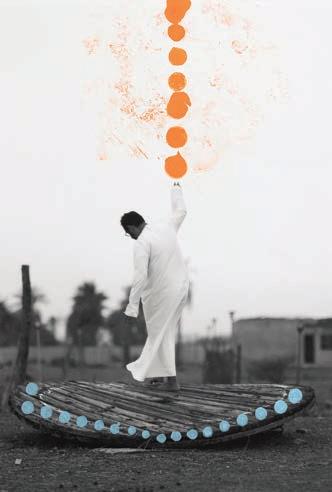

Abu Dhabi makes a scene-stealing appearance in the new film, “Now You See Me: NowYou Don’t,” to be released on November 14,with the sleek skyline, sunbaked deserts and striking architecture—notably the dome of the Louvre—all playing a role.The city has been a major movie star of late,featuring in everything from “F1: The Movie” and the “Dune” films to “Mission: Impossible,” “StarWars” and “Fast and Furious.”—Ty Gaskins
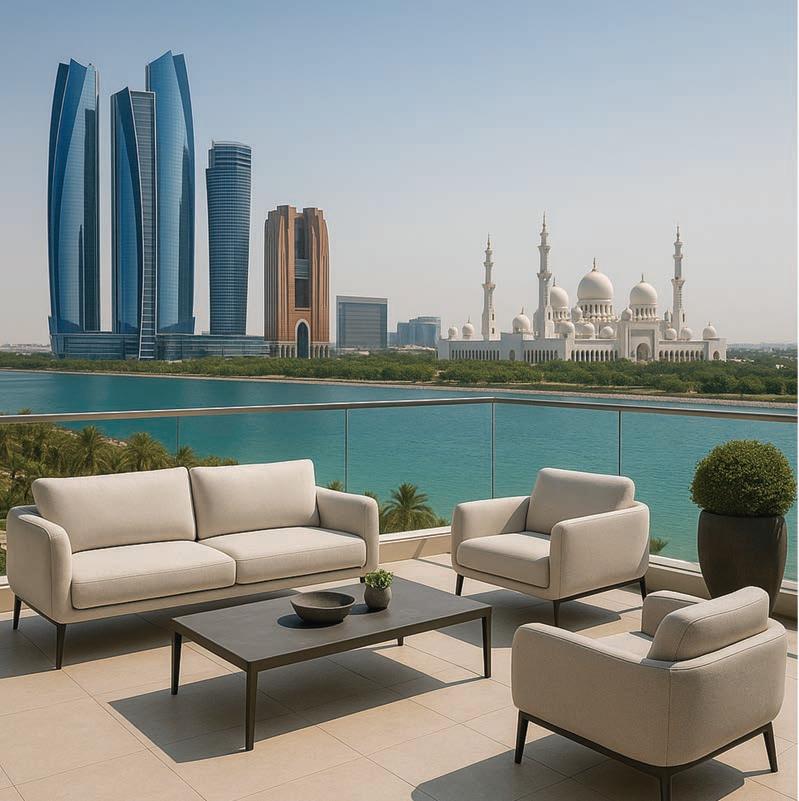

Abu Dhabi is entering a new chapter, driven by strategic investment, thoughtful design and growing global appeal. Abu Dhabi Sotheby’s International Realty was founded to meet this moment, connecting rare homes with those who recognise their worth. From exclusive developments to waterfront villas and branded residences, our portfolio speaks to ambition, legacy and a life well lived.
We pair global reach with sharp local insight – guided by a clear view of the market as it moves.
This is where the future of real estate in the capital takes form.
T: 044550859
W: abudhabi-sothebysrealty.ae
E: customercare@abudhabi-sothebysrealty.ae
Writer, art aDViSor and strategist Myrna Ayad releases “+971: 50 Emirati Creatives Shaping the UAE” (Rizzoli) this October—a first-of-its kind book profiling 50 individuals across the nation.
From architects and artists to poets, filmmakers, chefs and more, these are the outside-of-the-box thinkers articulating the cultural pulse of the UAE through different methods and mediums.
“The UAE is home to an extraordinary wealth of creative talent that deserves to be seen, celebrated and archived,” says Ayad. “I’ve had the privilege of watching this scene grow… and I wanted to shine a spotlight on those shaping the country’s cultural future.”—Emily Baxter-Priest
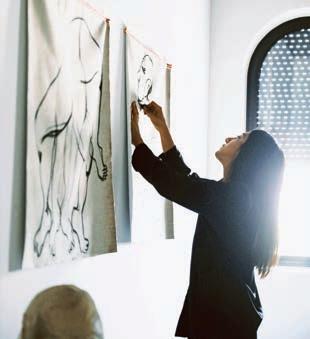

In F1’s 75th year, the Etihad Airways Abu Dhabi Grand Prix in December will again be the season finale.
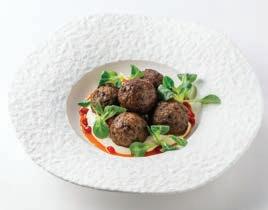
Granny’s Köfte, a dish at Sophia at the
Island.
190,000
SpectatorS Attended the Yas Marina Circuit last year.
29 DayS
Time the “F1: The Movie” crew spent filming in Abu Dhabi.
58 lapS Covering more than 190 miles in total.
6
VictorieS Lewis Hamilton’s record number of wins at the Yas Marina Circuit.
TABLE TALK
1:25.637 minuteS Kevin Magnussen’s 2024 track record.
41,800 fanS Came to see Eminem at the After-Race concert series in 2024.
Opening this fall, Sophia at the St. Regis Saadiyat Island promises a refined take on Mediterranean dining with a menu drawing from 22 coastal cuisines. Its centerpiece bar sees chefs show off their culinary skill as they handshape spiced meat to order as part of the traditional Turkish offering çig köfte. This theatrical touch adds flair to the restaurant’s white-tablecloth aesthetic, an atmospheric backdrop for polished, family-style dishes.—Mark Lomas
There is no shortage of drama in the desert this season as a new Mondrian rises downtown—not so much a hotel as it is a fever dream in lacquered chrome and Basquiat brights, with sleek interiors by Tristan du Plessis. Set to open later this year under the watch of Ennismore and local developer Aldar, the waterfront escape features 210 rooms and suites spread across a glittering skyscraper with views of the Abu Dhabi canal.—Ty Gaskins
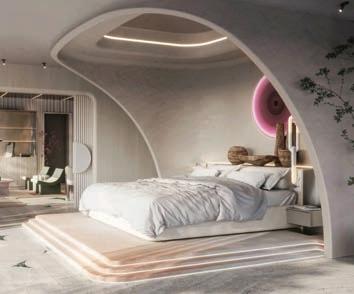

This November, the world’s creative cognoscenti descend on the UAE’s capital for the return of Abu Dhabi Art. The five-day fair is the culmination of the emirate’s year-round visual arts program, bringing together innovative galleries, exhibitions, talks and performances from across the globe.
The 17th edition, running November 19-23 in the cultural hub of Manarat Al Saadiyat, is the most expansive yet, presenting its largest and most diverse selection of galleries: 142 attending from 36 countries and 52 cities—a 30% increase from 2024. An enthusiastic focus on the dynamic art scenes from oftenunderrepresented countries such as Nigeria and Turkey will offer fresh perspectives, along with an increase in contributions from Morocco, Japan, China and Italy.
Among a multitude of highlights is Lagos-based gallery kó’s group presentation of pioneering modern artists from Nigeria’s Osogbo Art School, including the works of Muraina Oyelami, Prince Twins Seven-Seven and Jimoh Buraimoh. Another mustsee is the special commission by Nigerian textile artist Nike Davies-Okundaye who has designed a unique stage-like creation at the Al Ain Oasis as a setting for the event’s contemporary poetry readings and other performances.—Emily Baxter-Priest
Now offered at $38 million—a $10 million price reduction.
A significant price adjustment brings an exceptional opportunity to own one of the American West’s most remarkable legacy properties. Hobble Creek Ranch spans 3,387 acres of spectacular terrain stretching over 4.5 miles wide and set in the heart of Utah’s scenic Hobble Creek Canyon.
The ultraprivate residence is positioned behind gates and surrounded by nearly 20 acres of manicured landscaping. Beyond, the ranch offers extensive roads and trails, seven ponds and substantial water rights. The grounds’ elevations, from 5,700 feet to more than 9,100 feet, support cattle, horses and trophy big-game hunting. Owners control access to more than 10,000 acres of adjacent Forest Service land, providing an unparalleled recreational haven for enthusiasts.
Anchored by a French-inspired chateau, this world-class estate combines refined luxury with unmatched access to
the outdoors. The residence offers seven bedrooms, 10 bathrooms, a gourmet kitchen, theater, formal dining room, executive office and elevator—all finished to the highest standards. A separate 3,150-square-foot pool house includes a kitchen, hot tub and bathroom, while a two-bedroom guest house sits above the detached four-car garage. Other amenities include horse facilities, an additional 11-bay garage and tennis court.
Despite its seclusion, the ranch is remarkably accessible, located just 10 minutes from a golf course, 30 minutes from a private airport and about an hour from both Salt Lake City and Park City.
With its rare scale, top-tier features and newly reduced price, Hobble Creek Ranch is an extraordinary acquisition for those seeking a private, luxury retreat without compromise.
Additional details, images and videos of this magnificent estate can be found at hobblecreekranchutah.com.
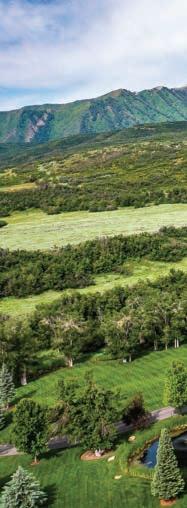
Hobblecreekranchutah.com
Summit Sotheby’s International Realty Kerry Oman: +1 801 369 2507 kerry.oman@sothebysrealty.com $38,000,000
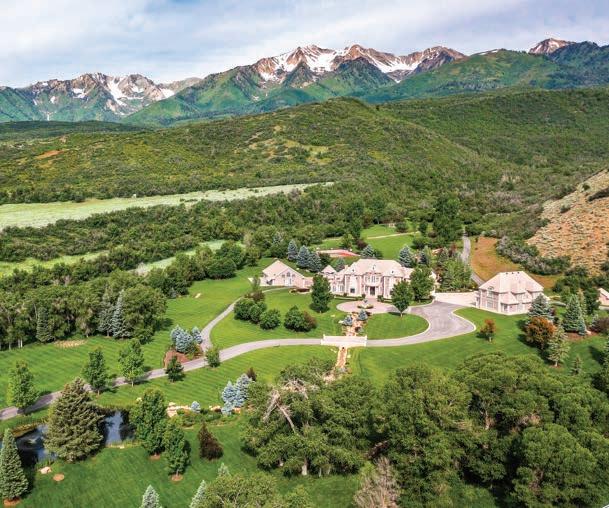
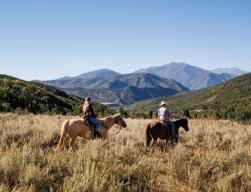

Find your one.
Explore our exclusive collection of inspiring homes.
New Canaan, Connecticut, United States
sothebysrealty.com/id/5vjcdn
William Pitt
Sotheby’s International Realty
Leslie Razook: +1 203 918 4452
lrazook@wpsir.com
Tony Cutugno: +1 914 582 7789
apcutugno@juliabfee.com
$25,500,000
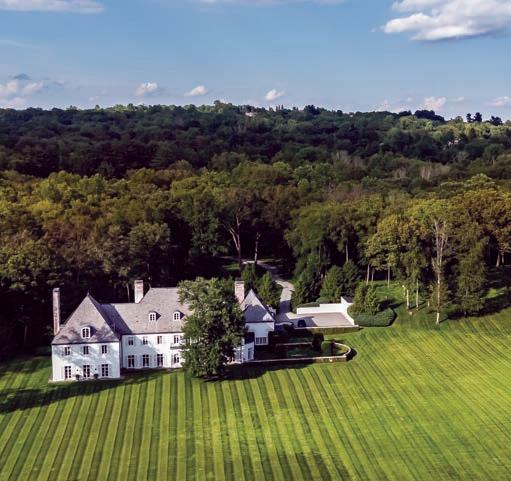
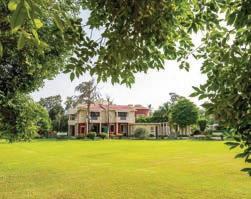
Farmhouse on Radhey Mohan Drive
This 11,125-square-meter (2.75acre) majestic farmhouse is in one of the most prestigious localities. The home is replete with six bedrooms, landscaped gardens, an outdoor pool, a gym, a lift and twin staircases.
New Delhi, India
sothebysrealty.com/id/5NHESK
India
Sotheby’s International Realty
Akash Puri: +91 989 904 4669 akash.puri@sothebysrealty.in
$16,391,638

Bungalow in Golf Links
This 480-square-meter eastfacing bungalow sits on a corner rectangular plot with open frontage on three sides and overlooks a park. *Image is an indicative artistic impression.
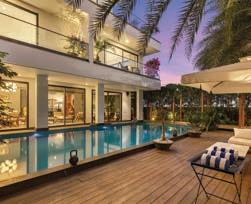
Villa in Dona Paula, Panjim
This 10-bedroom sea-view villa spans 1,105 square meters and features a private pool, gym, spa rooms and more—offering exceptional design and strong potential as both a luxury residence and an investment.
Goa, India
sothebysrealty.com/id/L85RJN
India
Sotheby’s International Realty
Saba Ali: +91 981 021 3161 saba.ali@sothebysrealty.in
Price Upon Request
New Delhi, India
sothebysrealty.com/id/EWZDFM
India
Sotheby’s International Realty Atul Goyal: +91 886 064 1995 atul.goyal@sothebysrealty.in
Price Upon Request

Villa in Lonavala
This seven-bedroom villa spans 3,595 square meters across three levels and offers panoramic mountain views. It features a pool, spa, gym, landscaped lawns and a gazebo, plus access to multiple sports courts and an outdoor gym.
Maharashtra, India
sothebysrealty.com/id/NBGV42
India
Sotheby’s International Realty Juhi Singh: +91 981 905 6419 juhi.nataraj@sothebysrealty.in
$3,278,327
The Crown Jewel of Melbourne’s Skyline
Within the 24-carat gold crown of Melbourne’s most iconic tower, this full-floor, 676 square meter penthouse is a globally significant residence with dedicated lift access, eight-car parking and panoramic 360-degree views, earning its place among the world’s most elite addresses.
Southbank, Victoria, Australia
sothebysrealty.com/id/NSHNG8
Melbourne
Sotheby’s International Realty
Max Ruttner: +61 425 799 942 max.ruttner@msir.com.au
AU$21,500,000-AU$23,500,000
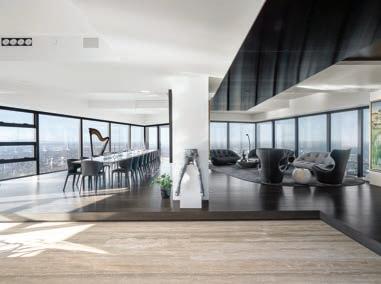
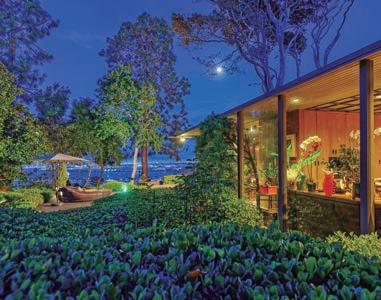
Landmark MidCentury Modern Estate
Timeless in design and rare in provenance, this is a once-ina-generation opportunity to own a storied piece of San Diego history. More than a home, this is an architectural retreat, a wellness sanctuary and one of San Diego’s most iconic private estates.
San Diego, California
sothebysrealty.com/id/C2NHZF
Pacific
Sotheby’s International Realty
Elizabeth Courtiér: +1 619 813 6686
elizabeth@architectureinsandiego.com
$16,900,000
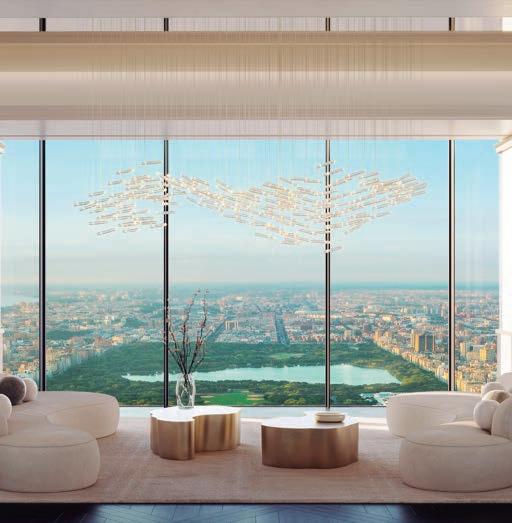
Never Before—Never Again: 111 W 57 Quadplex 80
The most iconic of all Manhattan addresses is now the location of the grandest residence of all. Spanning four full floors, Quadplex 80 offers over 11,480 square feet of meticulously designed interior space and 618 square feet of breathtaking south-facing terraces.
Quadplex80.com
Sotheby’s International Realty East Side Manhattan Brokerage Nikki Field | Benjamin Pofcher Jeanne H. Bucknam: +1 212 935 5757 info@111w57.com
$110,000,000

Italian Dolce Vita Living
Perched on nearly five flat acres with 360-degree mountain and city views, this Edward Chavez-designed estate features six bedrooms, nine bathrooms, a chef’s kitchen, wine cellar, theater, cigar bar, gym, 11+ car garage and a resort-style backyard with pool and spa.
Scottsdale, Arizona
10201EHappyValleyRd.com
Russ Lyon
Sotheby’s International Realty
Frank Aazami: +1 480 266 0240 frank.aazami@sir.com
$14,500,000


Architecturally significant and masterfully engineered, this nearly 10,000-square-foot residence is one of Lake Tahoe’s most striking modern homes. Designed by internationally acclaimed architect Mark Dziewulski, the estate is perched above pristine Crystal Bay shoreline. Crystal Bay, Nevada TahoeGlassHouse.com Sierra Sotheby’s International Realty Breck Overall | Soni Jackson: +1 530 318 3452 breck.overall@sothebysrealty.com $45,000,000
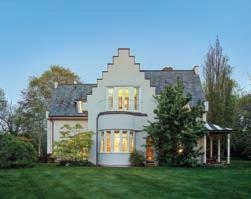
“Quholme” off Bellevue
Exceptional in-town estate blends timeless European design including thoughtful modern luxuries. Grand yet inviting spaces and soaring ceilings are set in the perfect Newport location.
Newport, Rhode Island
sothebysrealty.com/id/GGTMJD
Gustave White
Sotheby’s International Realty +1 401 849 3000 gustavewhite@gustavewhite.com
$5,750,000
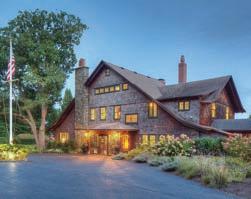
Eastover—
Historic Masterpiece
Stunning turn-of-the-century Irving Gill-designed gem with swooping rooflines on three acres of lushly landscaped grounds. Beautifully crafted inside and out. Absolute perfection with water views.
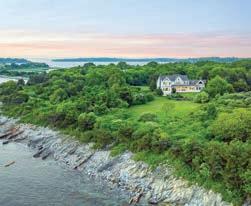
South Winds
A coastal landmark estate customdesigned and set on 14.4 acres of pastoral waterfront, this serene sanctuary is a peaceful retreat capturing the essence of coastal New England living.
Jamestown, Rhode Island
sothebysrealty.com/id/6JYKLY
Mott & Chace
Sotheby’s International Realty
Nicole Carstensen |
Amy I. Doorley-Lucas: +1 401 633 5968 nicole.carstensen@ mottandchace.com
$12,000,000
Portsmouth, Rhode Island
sothebysrealty.com/id/7DHRBX
Gustave White
Sotheby’s International Realty +1 401 849 3000 gustavewhite@gustavewhite.com
$4,750,000
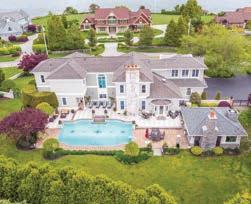
Coastal Mediterranean Villa
Situated on nearly an acre of exquisitely landscaped grounds, this estate offers true seclusion— the pinnacle of luxury, privacy and design. Outside, a resort-caliber oasis and kitchen welcome.
Narragansett, Rhode Island
sothebysrealty.com/id/Y9Y889
Mott & Chace
Sotheby’s International Realty
The Soby-Roberts Team: +1 401 662 7969 bridgette.soby@mottandchace.com
$7,495,000
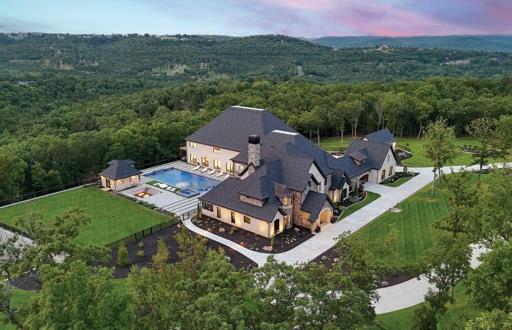
Your One Awaits
Perched atop the Ozark Mountains, this remarkable 10+ acre estate was thoughtfully designed and constructed in 2023 to the highest standards. The property showcases an 8,000-square-foot main residence and a 5,700-square-foot sports and entertainment complex.
Standout amenities include a 70-foot beach-entry pool with spa, a pool house, fire pit lounges, RV accommodations and a private go-kart track—delivering an extraordinary blend of luxury, scale and recreation.
Saddlebrooke, Missouri
dielmannsir.com
Dielmann
Sotheby’s International Realty
Stephanie Oliver | Ted Wight: +1 314 322 6992
stephanie.oliver@sir.com
$8,950,000

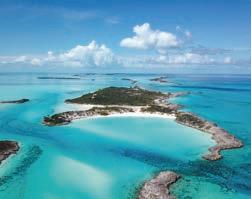
Rising to 90 feet, the 52-acre Saddleback Cay offers deep-water dock access and is just minutes from a 4,800-foot runway on the neighboring island to the south, Norman’s Cay, ensuring seamless arrival by land or by sea.
Exuma, The Bahamas sirbahamas.com/id/62398
Bahamas
Sotheby’s International Realty
Christopher Ansell: +1 242 427 0082
christopher.ansell@ sirbahamas.com
$24,900,000
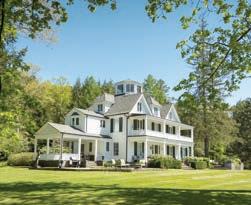
The Erpf Estate
This 280-acre Catskills estate—two and a half hours from NYC—offers trails, streams, a sculpture park and the world’s largest stone maze. A rare legacy of art, nature and timeless seclusion awaits.
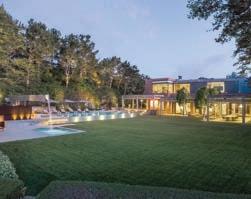
Architectural
Designed by renowned architectural firm Assembledge+, this 11,000+ square-foot home is guard-gated for privacy and security, with over one acre of flat, expansive grounds.
Los Angeles, California
3350Stoneridge.com
Beverly Hills Brokerage
Allen Roth: +1 310 387 7087 allen.roth@sothebys.realty
$25,000,000
Arkville, New York
390ErpfRoad.com
William Pitt
Sotheby’s International Realty
Kathryn Johnson: +1 917 826 7050 kjohnson@wpsir.com
$10,000,000
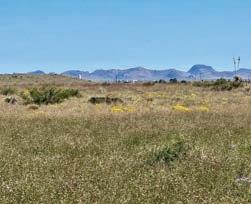
Just west of Marfa, Texas, sits a rare opportunity equally suitable for a private retreat or development. The 119 unrestricted acres of ranch land provide panoramic mountain views in an unbeatable location.
Marfa, Texas
sothebysrealty.com/id/8XNF8T Kuper
Sotheby’s International Realty
Lauren Meader Fowlkes: +1 432 295 2849
lauren.meaderfowlkes@ sothebysrealty.com
$3,950,000
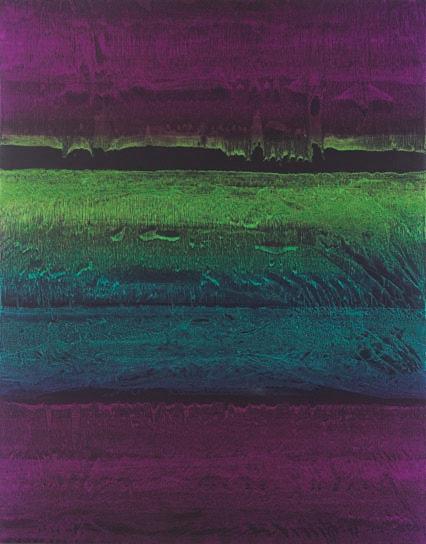


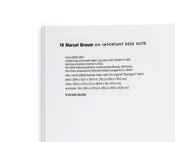
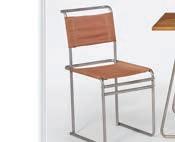

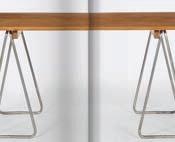
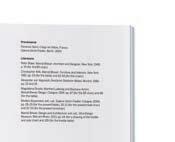
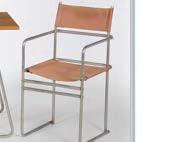

Exploring Marcel Breuer’s seminal desk suite offered in “Design Agenda: The Collection of Michael Maharam,” an auction held in October 2021 at Sotheby’s New York.
great design speaks across the ages, and few can better recognize it than fellow creatives. In 1927, the pioneering photographer and future surrealist Florence Henri purchased a table and two chairs from Bauhaus compatriot Marcel Breuer, whobecame jungmeister (youngmaster)ofthefurnitureworkshop two years earlier, at age 25.
Breuerdesignedthepiecesaroundthetimeofhisappointment, makingthemamongtheearliestexamplesofhissignaturetubularsteel furniture. The technique was so advanced that it’s likely the table’s trestles were made in 1926 at aviation firm Junkerswerke Dessau, one of the few local facilities capable of such precision work. Within months, Breuer co-founded Berlin-based company Standard Möbel to produce his furniture, including these chairs. In 2004, Michael Maharam, U.S. textile entrepreneur, added thegrouptohiscollectionof20th-centurydesign,whichinspired the business he would sell to Herman Miller in 2013. Four years ago, he sold the three pieces at auction, completing a chain of inspiration stretching back nearly a century.—James Haldane




































Top: Catalog showing the furniture pieces made of oak and nickel-plated tubular steel, upholstered with the original “Eisengarn” fabric.
Above: A gathering in Florence Henri’s Paris apartment around 1931, featuring Robert Delaunay, Henri, Sophie Taeuber-Arp, Sonia Delaunay and Hans Arp seated at the table.
Left: Michael Maharam’s catalog reflects the crosspollination between his professional work and private collecting.
